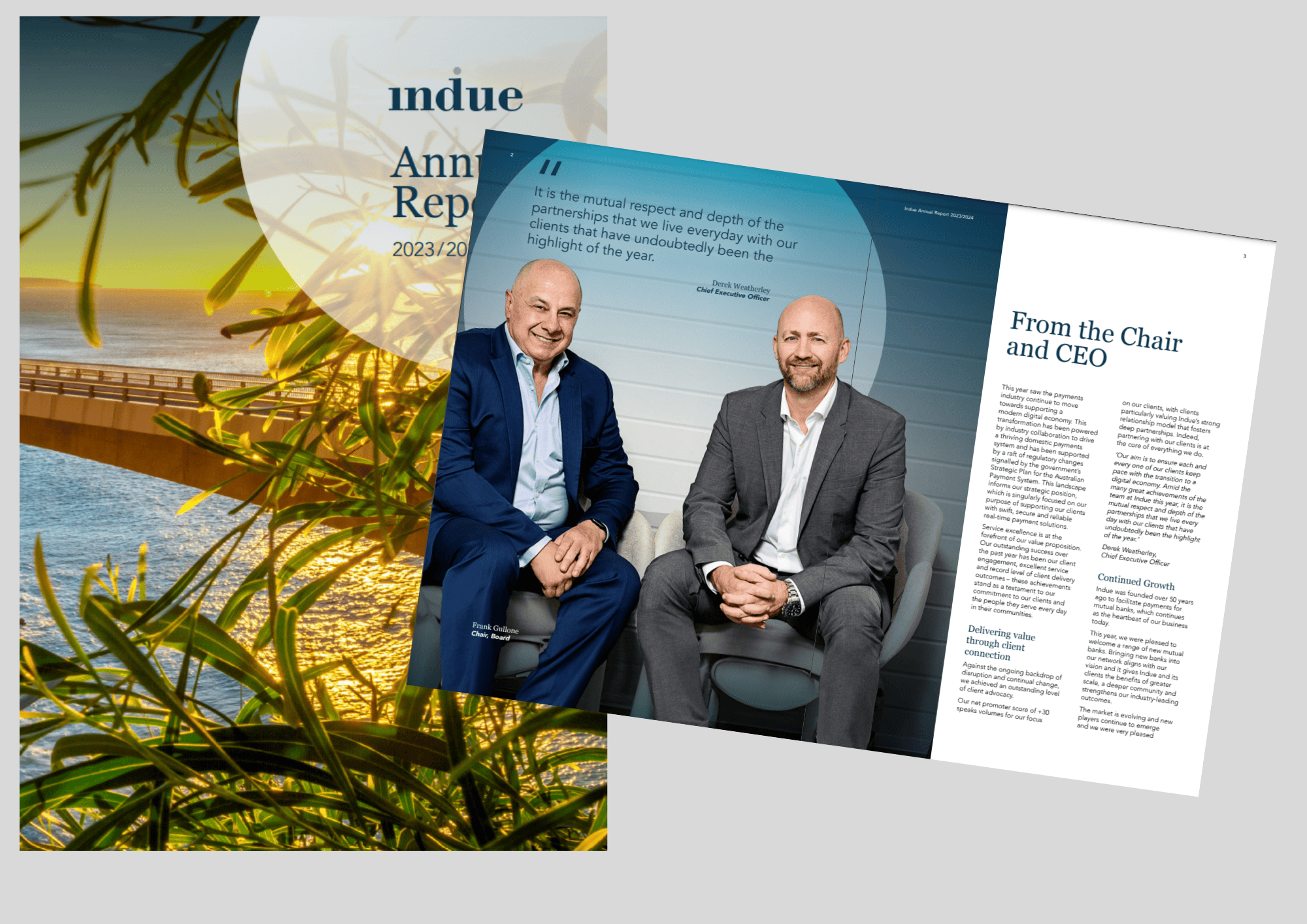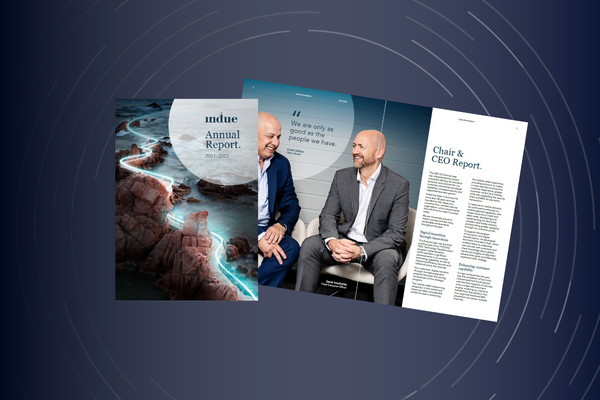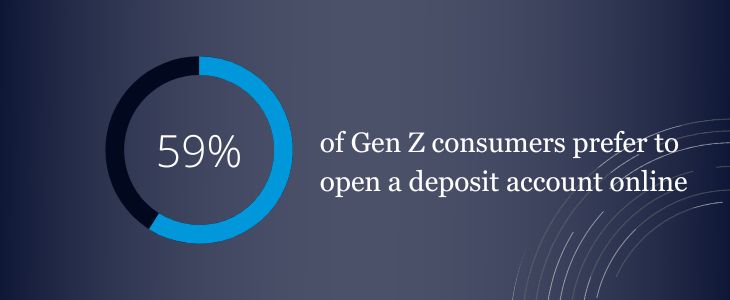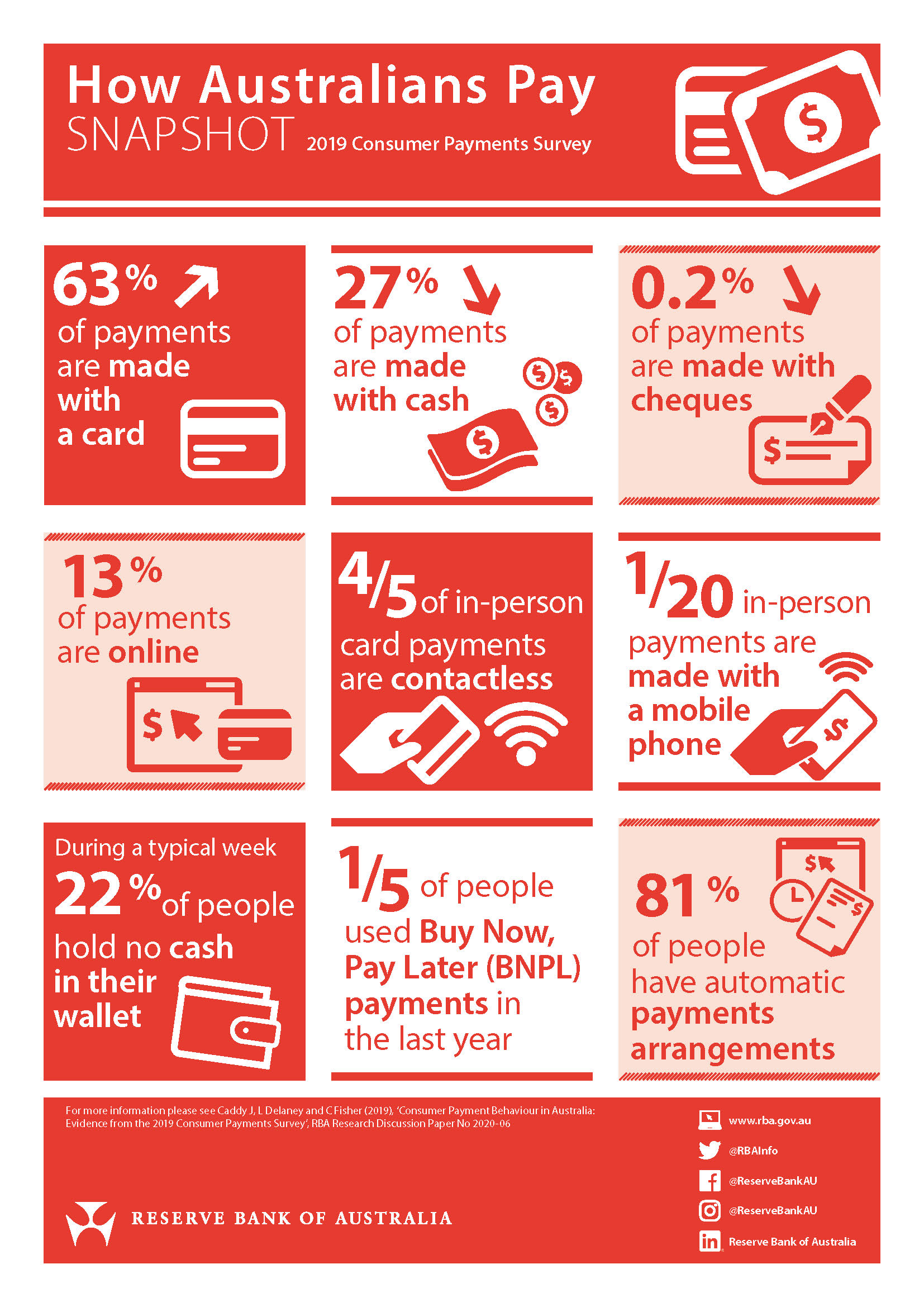News
News
AP+ 2025 Roadmap
30 January 2025
Following the release of our inaugural product roadmap in 2024, we are pleased to publish our updated 2025 roadmap that combines our product and infrastructure priorities. The 2025 AP+ Roadmap outlines key industry and regulatory requirements alongside other major initiatives.
Key updates include:
- Click to Pay for eftpos
- Consolidated developer portal and consolidated member portal
- NPP multi-credit transfer solution design
- NPP process and message usage uplift
Along with the above changes we are confirming December 2026 as the delivery date to upgrade the ISO 20022 version that the NPP operates on.
Exploratory work also continues, and any successful developments will be included in future roadmap updates.
We will continue to engage with the industry and our members as we progress, and updated versions of the AP+ roadmap will be published annually.
The 2025 AP+ Roadmap outlines key industry and regulatory requirements alongside other major initiatives.
Move to NPP: to prepare for the decommissioning of BECS in 2030, we are focusing on ensuring the NPP has the capability, capacity, reach and resilience to easily manage the expected volume of direct entry payments. This work includes:
- NPP process & message usage uplift: developing an approach for the return of bulk payments processed through the NPP; introducing batch identifiers to support the grouping of transactions; introducing a standard payment instruction format that end users can provide to their financial institution; and uplifting PayTo message usage (Merchant Category Codes, Ultimate Creditor) to support improved fraud screening.
- NPP ISO version upgrade: upgrading the ISO20022 version that the NPP operates on to enable software integrations by international vendors and benefit from innovations adopted in other markets.
- NPP Multi Credit Transfer solution: AP+ will begin detailed design work with industry in 2025 to support high-volume bulk payments with multiple transactions contained within a single message.
- NPP cloud migration: this will allow directly connected participating organisations to integrate their back office with the NPP platform infrastructure via public cloud providers.
- NPP capacity upgrades: ensuring that processing capacity is uplifted across the platform and participating organisations.
Mobile Least Cost Routing (LCR) implementation: the industry is expected to support mobile LCR by the end of 2024.
QR acceptance: our goal is to enable initiation for in-store payments using any smart device, initially via QR. It aims to provide consumers with a greater variety of services at the point of sale and integrate other experiences such as loyalty programs or simplified integrated initiation.
eftpos – token cryptogram: introducing a token cryptogram for cardholder-initiated transactions to enhance the security and efficiency of the Australian payment ecosystem, while fostering customer trust, and compliance with evolving industry standards.
Confirmation of Payee (CoP): a layer of protection for payments to a BSB and account number in Australia. By matching the account name, BSB and account number entered with the details held by the recipient’s bank, Confirmation of Payee gives more confidence that payments are going to the right account.
eftpos – Click to Pay implementation: AP+ is standing up a Click to Pay service with the ambition to streamline e-commerce checkout and make it consistent, convenient and secure.
NPP PayTo porting: allow consumers to move PayTo agreements between financial institutions without having to contact each merchant and re-authorise their PayTo agreements. This will reduce the impact on merchants when their customers change banks.
Osko / SCT harmonisation: brings together the BPAY OSKO service with the native Single Credit Transfer (SCT) NPP product to simplify real-time payments into a single service, with a single brand and clear value proposition, streamlined rules and associated operational processes.
eftpos to update to 3DS 2.3: AP+ plans to support 3DS 2.3 to help reduce cart abandonment rates and provide enhanced risk management.
3DES migration to AES: Australian card payments will be migrated from 3DES to a new encryption standard (AES) by 2030.
Portal consolidation: AP+ is consolidating the developer experience across our products into a singe developer portal. We are also creating a single front door for members with a unified and streamlined member portal.
Cyber security capability uplift, fraud capability uplift and trust layer: AP+ is uplifting its maturity in the foundational cyber capabilities required to govern, identify, protect, detect, respond and recover from cyber incidents. AP+ is also expanding fraud capability across each AP+ scheme and supporting industry fraud and scam initiatives.

Australian Consumer Spending Holds onto Gains, Starts 2025 in Expansion Territory
After a weak year overall for Australian consumer spending, Visa’s Australia Spending Momentum Index (SMI) remained in expansion territory at 100.7 in January. The reading’s relative consistency with the previous month, which included strong holiday sales, bodes well for a sustained recovery. Spending momentum improved in all states and territories except for the Australian Capital Territory. While Victoria and Queensland were the only two states with readings below 100, their first readings for 2025 were above their 2024 averages and are on track to hit the 100 mark. Following the holiday shopping season, the discretionary SMI fell 2.9 points to a still-solid 101.5 in January. The index stayed above 100 for the ninth consecutive month, indicating strength in spending momentum on non-essentials, such as travel. The index for all states and territories remained at healthy levels, with Queensland having the strongest reading. At the same time, restaurant spending momentum saw a decline, led by the Northern Territory and South Australia. By contrast, the non-discretionary index inched up 1.4 points to 99.3, with the strongest improvement in two states that experienced weak consumer spending in 2024: Tasmania and South Australia. With inflation slowing, consumer spending is expected to be resilient, with geopolitics and the pace of interest rate cuts two major risk factors to watch.
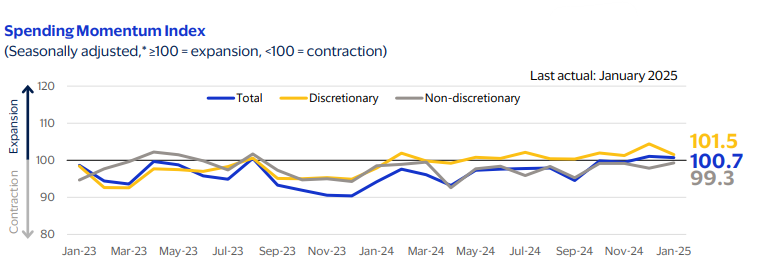
Spending Momentum Index (Seasonally adjusted,* ≥100 = expansion, <100 = contraction), last actual: January 2025
Download the Complete Report
*The discretionary and non-discretionary categories exclude restaurant and gas spending; both restaurant and gas are included in the total SMI. See additional definitions of spending categories on page 3 of the attached report.
Source: Visa Business and Economic Insights. The Visa Australia SMI measures the current month relative to the same month last year. The national readings of the index are based on year-over-year changes in consumer spending with Visa bankcards.

Protecting your digital identity
During this Scams Awareness Week, we’re sharing our top tips to combat scams. Following on from Safeguarding older and vulnerable individuals from scams today we bring you the next tip in our series.
Tip 2: Protect your data like you protect your wallet!
Financial institutions spare no effort in combating fraud and protecting their customers from scammers, and there are thousands of people working around the clock to protect you and your money.
However, in recent years scammers have realised they are competing with advanced multimillion-dollar fraud detection controls and systems, and therefore the path of least resistance is to trick customers into helping them bypass the fraud controls that are put in place for customer protection.
The truths we must acknowledge:
1. Scammers already have some of your data
There’s an alarming amount of compromised data out there, and scammers are becoming increasingly skilled at exploiting it. The numerous Australian data breaches publicised widely are just the tip of the iceberg.
You can check how many data breaches have involved your details at this website: https://haveibeenpwned.com/
2. If you think you are too smart to be scammed, you are a great target!
Scammers, armed with your stolen data, can piece together a comprehensive profile of their targets. That seemingly innocent chat on WhatsApp or a transaction on Facebook Marketplace can be a data-mining expedition. This, in turn, can be exploited to build trust and manipulate people into compliance.
The following are some steps you can take to shield yourself from scams:
- Stay informed: Learn from the experiences of scam victims, by putting yourself in the victim’s situation and considering how the controls you have in place could have protected you in their situation.
- Limit personal information sharing: Be cautious about the amount of personal information you share on social media ,and tighten your security settings. The less scammers know about you, the harder it is for them to craft convincing scams.
- Enable Two-Factor Authentication (2FA): Whenever possible, enable 2FA for your online accounts. This adds an extra layer of security, making it significantly more difficult for scammers to gain access to your accounts.
- Have strong, unique passwords: Don’t underestimate the importance of strong, unique passwords for each of your online accounts. Consider using a reputable password manager to help you generate and store them securely.
Your data is your digital identity, and safeguarding it is vital. Scammers can use your data to gain trust, manipulate, and exploit vulnerabilities.
By taking steps to protect your data and sharing this knowledge with others, we can collectively defend against data-driven scams and build a safer digital world.

Safeguarding older and vulnerable individuals from scams
Australians have lost $430 million to scams already in 2023, and as Christmas approaches, we can expect another spike in scam activities.
Here’s our top tips to combat scams.
Tip 1: Safeguarding older and vulnerable individuals
Equipping ourselves and our loved ones with the knowledge needed to fend off scams is crucial.
In this digital age, scams can affect anyone, regardless of age or technological know-how. However, older, and more vulnerable individuals tend to fall prey to scams more often.
In 2023, Australians over 65 have lost more than $108 million to scams and represented one in four of all scam reports.
To combat scams effectively, it’s important to educate those at higher risk of becoming a victim. Sharing our knowledge, experiences, and staying vigilant empowers them to recognise and respond to potential threats.
Here are a few suggestions on how we can play a vital role in protecting our loved ones:
Initiate conversations
Be a trusted, non-judgmental resource available at any hour of the day. Engage in open discussions with older family members, friends, and acquaintances about the potential dangers lurking online. Encourage them to ask questions and share their concerns.
Teach them to identify red flags
Educate older individuals about common scam warning signs such as unsolicited calls, suspicious emails, requests for personal information, or high-pressure sales tactics. Equipping them with this knowledge improves their confidence in navigating scam scenarios.
Encourage scepticism
Encourage healthy scepticism and a “trust but verify” approach when encountering unknown or unfamiliar entities. Remind them to independently verify the legitimacy of offers, requests, or investments before committing to any action.
If it doesn’t feel right, JUST HANG UP!
Phone scams result in more monetary loss than any other method. If someone on the phone is making them uncomfortable or is moving too fast, they can always hang up! Scammers feed on people’s politeness. It’s better to risk offending someone than to risk a scammer taking all of your hard-earned money.
We encourage you to share with your vulnerable loved ones so that we can all be protected.
Let’s work together to ensure we’re all protected from the harms of scams. By extending our helping hands, we can make a significant impact in their lives and collectively build a stronger and safer community.
For additional information on supporting scam victims, visit the Scamwatch website: https://www.scamwatch.gov.au/protect-yourself/help-someone-whos-being-scammed
Read more scam-busting tips:

Introducing 100% recyclable debit cards
Indue client Southern Cross Credit Union (SCCU) are leading the way in adopting sustainable business practices to reduce their carbon footprint, with the upcoming release of a new card made from recycled materials.
The recycled PVC card product is made from waste derived from PVC Toys, Medical and electric plastic, and contribute to around 65% reduction in the SCCU’s card production carbon footprint, will be in the hands of their customers soon.
SCCU CEO Stuart Edwards said the key driver for adopting the use of recycled cards was feedback from customers.
“We listen to our customers, and we are going ahead with recycled cards based on customer feedback that they support SCCU’s commitment to making a positive impact for a more sustainable future,” Mr Edwards said.
“This change will see over 132kgs of plastic waste recycled into our bank cards over the next 4 years.
“At SCCU we are constantly implementing initiatives to reduce our footprint, and offering cards made from recycled materials, that can also be recycled, is another step in the right direction for SCCU as it will significantly reduce the waste and carbon emissions of our current plastic cards.
“This is another way we are adapting our operations to reduce carbon emissions and to ensure we are acting responsibly and playing our part to manage our impact on the environment.”
Indue CEO Derek Weatherley said Indue is pleased to partner with SCCU on its implementation of the recycled PVC card.
“Plastic waste is one of a myriad of sustainability challenges faced by the planet, and so it’s pleasing to see mutual banks adopting more sustainable solutions,” Mr Weatherley said.
“A range of sustainable plastic card solutions are available in the market and Indue has worked in partnership with our clients and our manufacturing partners to make these options easily adoptable by our clients and I believe we will see our clients quickly moving to these solutions as part of their sustainability programs.
“One of the elements of Indue’s community program lllumin8, is to focus on working with our partners to implement initiatives that address environmental issues to protect our planet.”
Find out more information on how Indue can help you deliver a card program to meet your business goals.

Celebrating 20 Years Stellar Years: Orion Financial Crimes.
Two decades ago, a journey began that would change the landscape of financial security. Today, we are celebrating 20 Stellar Years of Orion Financial Crimes—a journey marked by relentless dedication, innovation, and unwavering commitment.
The Origin: A Small Beginning with a Vision
Our story starts with ‘Credit Link,’ a small organisation consisting of just 30 staff members. Within its portfolio were 12 Visa Debit Card clients. However, a significant challenge arose when Visa decided to decommission its daily report of unusual transactions—an essential tool for fraud detection. This left a void that needed to be filled, and Credit Link was ready to step up to the challenge. Credit Link, now proudly known as Indue, embarked on a transformative journey by opting into First Data’s hosted PRM offering. This move was revolutionary in the world of fraud software, marking the beginning of a new era in financial security.
A Critical Decision: Developing a Service Offering
To meet the evolving needs of our clients and enhance their financial security, Indue made a critical decision. We decided to develop a service offering that would not only address the existing challenges but also set new standards in the industry.
Within the first year, our team expanded from 1 Full-Time Equivalent (FTE) to 3 FTE, allowing us to extend our service hours significantly. We went from operating on weekdays from 8 am to 4 pm to a more expansive schedule, covering hours from 7 am to 6 pm, including Saturday mornings.
The Financial Landscape: Then and Now
Looking back, it’s astonishing to see how the financial landscape has evolved over the past two decades. When we began, there were no overnight services, no real-time decline mechanisms, and no investigation case management tools. Transactions were predominantly conducted using magnetic stripe cards with signatures, and concepts like ‘chip and pin’ and ‘Visa Secure’ were yet to emerge. The primary focus of fraud prevention was on card-present scenarios, primarily
countering counterfeit activities. Today, e-commerce fraud, which now dominates the fraud landscape, was not even officially categorised.
Our Unchanging Purpose: Effective Mitigation and Exceptional Service
Throughout the challenges and transformations, our purpose remained constant—to achieve effective and efficient fraud mitigation while delivering exceptional customer service. We navigated uncharted waters, developing processes, procedures, reports, and client engagement strategies on the fly. All of these were driven by our sole aim: to enhance financial security while ensuring our clients’ competitiveness.
A Journey of Transformation and Innovation
As we celebrate 20 stellar years, we take pride in our journey of transformation, innovation, and unwavering commitment to financial security. From a small team managing a handful of clients to becoming a leading force in fraud detection and prevention, our story is one of dedication and excellence. We extend our heartfelt gratitude to our dedicated team, both long-serving members and newcomers, for their continuous efforts in driving positive change. To our clients, who have placed their trust in us for two decades, we say thank you.
Your support has been instrumental in our journey.
As we look ahead, we remain committed to advancing financial security, embracing emerging technologies, and strengthening our partnerships. Orion Financial Crimes, powered by Indue, stands as your reliable financial guardian, safeguarding your assets from harm.
Here’s to celebrating 20 Stellar Years of excellence, and to many more years of securing your financial transactions. Thank you for being part of our remarkable journey.
Find out more about our Orion Financial Crime solution.

Vii and The Card Network (TCN) launch first-to-market eftpos digital gift card solution
Indue is excited to work with Vii and The Card Network (TCN) to launch our first-to-market eftpos digital gift card solution available through Apple Pay and Google Pay.
Our digital gift card technology supports growing customer demand for highly convenient, secure and flexible mobile payment experiences, reflected in the $6 billion value of the national gift card market in 2023.
Indue Chief Executive Officer Derek Weatherley said that digital gift cards offer benefits to both merchants and consumers, and enhances the digital gifting experience.
“We are thrilled to launch our eftpos digital gift card solution, which was first to the Australian market and will allow our clients to provide tailored, personable gifting experiences for their customers,” Mr Weatherley said.
“Digital gift cards enable online and instore purchases, are more secure and support environmental sustainability by eliminating plastic production and delivery.
“As highly customisable digital products that can be issued instantly, digital gift cards are a popular payment solution – both for givers and receivers of the card, as well as merchants who can access sophisticated back-end analytics to improve user experience and distribution.
Indue’s solution is driven via an issuer managed app, which facilitates the issuance of cards to TCN and Vii and allows them to maintain settings for the card and add it directly to an OEM wallet.
Our capability enables us to provide holistic support to card issuers in progressing their digital gift card products through Apple Pay and Google Pay, and we work with our client’s app developers to deliver a tailored solution.
Find out more about how we can help you today with our range of programs.

Consumer Payment Behaviour in Australia
The results of the Reserve Bank’s 2022 Consumer Payments Survey show that consumers continue to shift from using cash to electronic payment methods – a trend that was accelerated by the COVID-19 pandemic and consumers’ preference towards using debit and credit cards and making payments online. Consumers are also increasingly using more convenient payment methods, particularly contactless card payments, by tapping their card or phone. Cards are now used for most in-person payments, even for small transactions that used to be made mostly with
cash.
Source: www.rba.gov.au

Insights from the Consumer Data Right Event Showcase
Indue’s Head of Innovation: Jenny Osborne attended the Consumer Data Right (CDR) conference featuring local and international experts, policy makers and founders who discussed the future of the CDR and showcased some exciting emerging use cases. There were ‘use case showcase‘ pitch-style session where founders presented about the CDR powered use cases they are building and bringing to market across payments, lending, climate tech, financial management, financial literacy. Some of the key takeaways from Jenny included:
The Consumer Data Right:
- allows consumers to safely share the data that businesses hold about them
- helps consumers compare between products and services to find offers that best match their needs
- encourages competition between providers, leading to more innovative products and services.
Currently CDR rolled out to Banking and Energy sectors, with plans to move to non-bank Lenders. There have been delays announced recently to the roll out for telecommunications, insurance and superannuation, with expectations it wont be reassessed until end 2024, this recommendation is in line with the independent statutory review that occurred citing the CDR needs time to mature. This also includes the implementation of action initiation, which will require a robust framework to support implementation.
To help CDR players understand the technical requirements ACC have introduced a new consumer data right portal to guide participants through technical requirements.
Keynote address: Australia’s Consumer Data-sharing Regime – A World-Leading Sanitation System for the Digital Economy
According to Scientia Professor Ross Buckley, UNSW it would have been better for Australia to start with simpler industries like Telecommunications or Insurance instead of Banking. He believed that Banking is a complex industry due to the high level of regulation and the large number of players involved.
The implementation process has been sluggish due to some participants exhibiting real inertia and resistance. Banks are also moving at a slow pace. Historically, banks have perceived customer data as their own and have been reluctant to relinquish control. Although many citizens believe that data pertaining to them should be theirs and not belong to banks or any other entity collecting it, privacy legislation supports this notion. However, legally, data is non-rivalrous and cannot be owned by anyone. Citizens have the right to control their data but not to own it.
The CDR will mature as more industries join and collaborate. However, without a formal regulatory regime, the absence of standards makes effective data sharing challenging. Limited data sharing will always constrain the growth of the digital economy. Therefore, it is essential for a policy agency to lead the process, rather than a regulator. An adaptable, living, and responsive framework is necessary for success.
According to his belief, the most prosperous companies view CDR as a data business and subsequently transform it into credit.
Data is the new oil – Globally the top 5 global companies pre-tax profit profile has shifted from all oil to a much bigger focus on Data companies (2 oils, 3 data companies) However, in Australia the top 5 companies are the same as 40 years ago.
Platforms – are the most profitable business model on planet, platforms are enhancing customer experience.
What has saved the most lives in the world? Water and sewerage systems – what can we learn from this? Bring clean, reliable data to business and dispose of unusable data responsibly.
In the UK Action Initiation has really accelerated. Action Initiation “Write access” provides consumers with the power to instruct accredited organisations to initiate actions on their behalf (current framework, consumers can only consent to accredited entities being given access to their data in read-only form).
Action Initiation allows products to become more customised based on risk/ behaviours to enrich the data. Although Consumer Data Right (CDR) presents both risks and opportunities for businesses, it can make options and switching simpler for consumers, and therefore, reducing the likelihood of retaining customers unless businesses are highly proactive in their customer-centric product offerings.
Governments have to bring change and encourage digital identity, driving the digital economy is critical.
CDR and the future of payments
The much anticipated ‘action initiation’ under the Consumer Data Right is on the way, with legislation in Parliament and fresh funding in the recent Federal Budget.
PayTo is a payment initiation system that falls under the Consumer Data Right (CDR). Consumers can use PayTo to kickstart payments and authorize them, with a unique feature of mandates permission. This system is compatible with CDR, and PayTo has mandates that allow others to debit your account, like in the case of gym memberships. This gives consumers the advantage of viewing, cancelling, and amending payments within the app, making subscriptions more manageable. However, there are still legal issues to consider, such as contractual obligations for a 12-month gym term. PayTo was created to replace Direct Debit and speedy fund transfers, but it doesn’t cover all use cases yet. Nevertheless, CDR can fill in the gaps where PayTo falls short.
Adopting NPP and PayTo has taken banks a significant amount of time, and it’s clear that initiating action will require more urgency and support. The regulator can play a critical role in encouraging banks to adopt these systems. While banks have eventually come around and are providing quality, compliant products, it’s important for the government and states to rally the banks. There’s a lot of interest in B2B opportunities for PayTo, like engaging companies for payroll, direct debits, improved controls, automation, and real-time movement of funds. For instance, a skydiving business could benefit from PayTo by reducing the risk of not receiving payment from a travel agent. Under NPP PayTo, the payment would be initiated immediately upon receipt of the coupon, reducing the risk. There are also opportunities for increasing process efficiency by reducing steps, friction, and time.
With PayTo, transferring payments from one bank to another for bill payments will be made possible. This is due to the increasing integration of payments through open data in the CDR system. AP+ recognizes that there is no clear set of rules on where CDR and PayTo begin and end and how they can be effectively merged. During discussions, there was a common theme of overlap between NPP/PayTo, CDR, and Digital Identity and the need for standardization with the involvement of the government and other stakeholders.

Delivering NPP PayTo – Ultradata and Indue Collaboration
In the ever-evolving world of financial services, innovation driven by consumer demand and Australian-mandated obligations continue to be the driving force pushing our businesses forward.
The PayTo initiative is a key part of the New Payments Platform (NPP) that is set to modernise direct debits, provide an alternative to card payments, and give customers greater control over their payments.
The system is designed to allow customers to manage recurring payments in bank apps and pay directly via bank accounts, and is designed to reduce payment costs for retailers.
Innovative Insights | Outstanding Outcome
“We feel that there is a commitment between Indue and Ultradata to work together in a way that is genuine and positive. There are a number of projects either in place or coming up, that we are partnering with Indue for. This is the way to achieve the best results.”
David Rowe, Senior Manager of Business Solutions at Ultradata
Recently a collaborative effort between Ultradata and Indue was taken to start the journey of delivering the PayTo gateway to Indue’s NPP participating client base.
The key deliverables for the project were:
- Meeting the NPP mandate.
- Creating and developing the NPP PayTo solution.
- Integrating the solution into Ultradata and Indue’s systems.
There were three key partners involved in the delivery of the NPP PayTo software solution:
- Ultradata
- Indue
- BankVic
Ultradata, crafting a user-friendly interface: Ultradata’s responsibilities included designing and developing the user interface, and assuring that the end product delivered a solution that met the industry requirements and exceeded customer expectations.
Indue, the NPP participant: Indue possessing a direct relationship with NPP Australia (NPPA) was pivotal to delivering a seamless NPP PayTo ecosystem, and held the responsibilities of defining, testing, and certifying the solution’s readiness.
BankVic, the Early Adopter: Ultradata and Indue were looking for a mutual client that had the experience and strong technical capability to onboard as an early adopter. BankVic was identified as a bank that had the right operating environment and had the prerequisites required to navigate the complexities of an early adopter, and one that would be able to integrate the NPP PayTo software within its core banking system, comprehensively test the product, and validate its functionality and usability within a specific timeframe.
“As the early adopter, I have seen, at times, 3 or 4 developers jumping onto a call to help us to work through some of the issues. As the early adopter we had Ultradata’s full attention. It was a real benefit.”
Gaetan Thillou, Project Manager, BankVic
Harnessing Knowledge | Leveraging Strengths
Since May, rigorous testing has paved the way for the solution to go into production, covering user acceptance testing and several phases of industry-specified testing, including testing with other industry partners. There was a multitude of steps and processes taken to deliver each early adopter milestone that respectively were aimed at meeting the outlined key deliverables.
By leading the way as an early adopter, BankVic not only tested NPP PayTo’s functionality in real-world scenarios, but also played a part in shaping the product to the direct needs of their business and to be compliant to the NPP requirements.
The lessons learned from BankVic’s early adoption have provided a blueprint for a smoother and more effective adoption process for Ultradata’s and Indue’s other mutual clients.
“The beauty about being in the mutual space is that it is a collaborative community; everyone is helping each other, with the early adaptor role for each project being shared amongst the mutuals. It provides a lot of benefits across the community.”
Gaetan Thillou, Project Manager at BankVic
The teams worked together to draw on the strengths of each other to make the solution even more innovative. One of these was Indue’s creation of a Test Portal to allow both Ultradata and the client to “self-serve” their testing needs by being able to create and update mandates as the initiator. Another was the provision of more user friendly display text in the Indue messages that includes simplified language and structure which is ready to be displayed as-is to the end-customer, eliminating the need for extra client-side processing.
Remarkable Teamwork | Collaborative Spirit
Given the complexity and challenges involved in developing and designing an innovative solution such as NPP PayTo, collaboration was critical to achieving a successful outcome.
Throughout each stage of project delivery, the partners brought their PayTo expertise to help identify and anticipate potential risks and challenges, and develop strategies to manage them.
For example, while the end-user experience might appear straightforward, the backend workings are significantly complex, and there can be varied interpretations of technical requirements and regulations.
Using their years of experience with developing payments solutions, the team successfully navigated this complexity through effective communication, open discussions, and a commitment to building a shared understanding among the partners.
Having a team with the right combination of skills and expertise has reminded us that collaboration truly is the cornerstone of overcoming challenges in order to achieve milestones.
“Working on the PayTo project was a very rewarding and positive experience. The open and honest working relationship between the three parties meant we could navigate through the challenges and achieve a great outcome for all our organisations,”
Simon Bromage, Project Manager at Indue.
Reshaping Payments | Transforming Transactions
Ultradata, Indue, and BankVic have helped pave a way for a future where other financial institutions will be in a position to empower their customers with more control over their bills, and payments, and stand to benefit from the way customers like to do their banking.
“I would like to thank Indue, Ultradata and Experteq for supporting and helping us through the project. The shared commitment and willingness to work together in order to deliver a positive outcome for BankVic members, is particularly pleasing.”
BankVic’s Chief Information Officer, Shane Kuret
The NPP PayTo is a product ready to reshape payment management.
Article produced by Ultradata – September 2023.
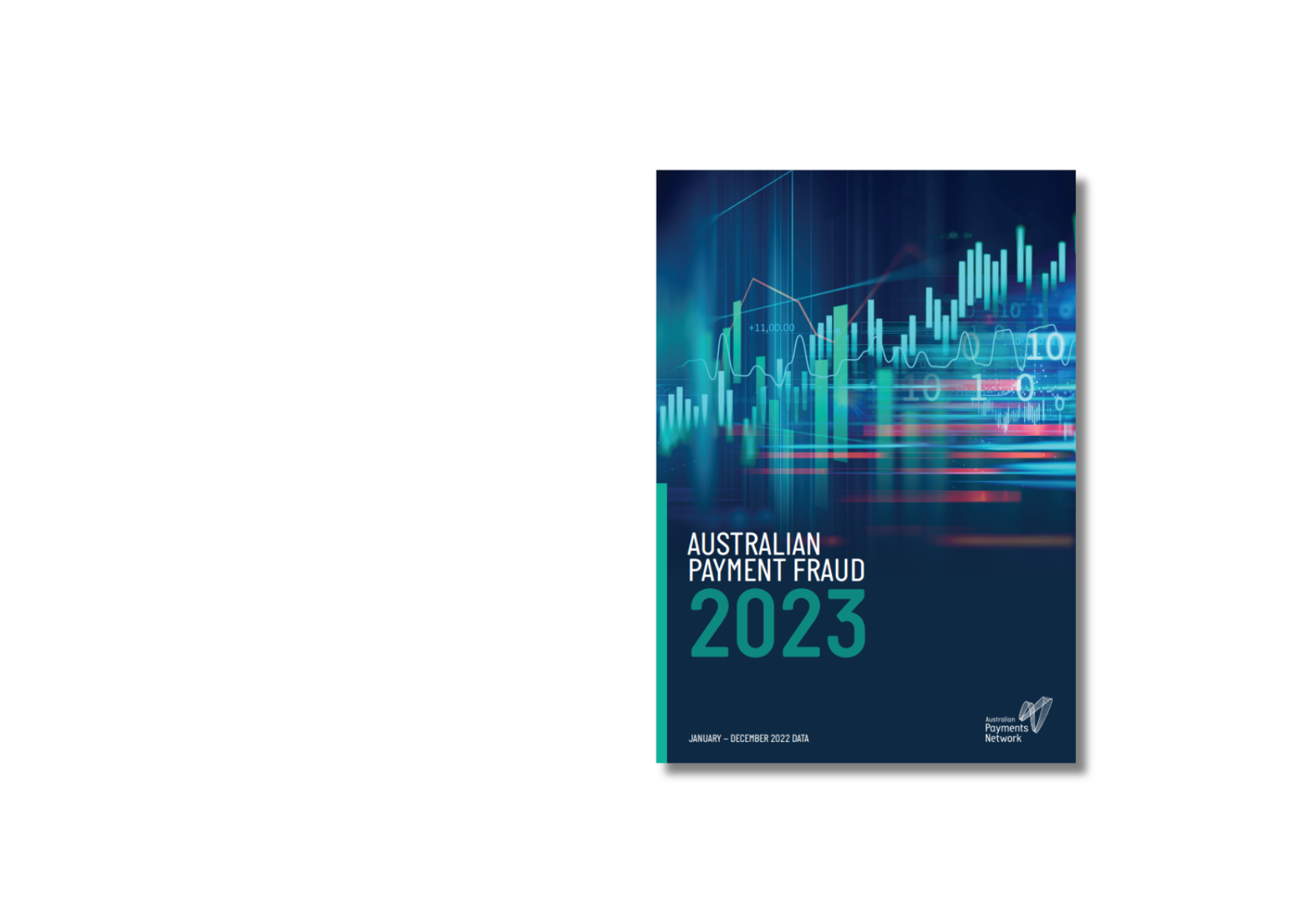
Fraud Statistics Jan 22 – Dec 22
According to the 2023 Australian Payment Fraud Report, in 2022, fraud on payment card transactions increased by 16.5% on the previous year to $577 million, in line with the increase in total spending on cards, which was up by 16% to $1 trillion over the same period. The rate of fraud on Australian card payments was 57.5 cents per $1,000 spent, up slightly from 57.3 cents in 2021.
The data indicates that the fraud rate has stabilised since the introduction of the industry’s card-not-present (CNP) Fraud Mitigation Framework (CNP Framework) in 2019, with the 2022 fraud rate remaining well below the fraud rate of 75.0 cents per $1,000 spent in 2017.
The CNP Framework requires merchants who consistently exceed agreed fraud threshold targets to strengthen customer authentication and apply other measures. The framework also encourages secure technologies such as real-time monitoring, machine learning and tokenisation.
AusPayNet sponsors the Economic Crime Forum (ECF), which brings together industry, law enforcement and government stakeholders to coordinate joint responses to economic crime, including scams, fraud, financial crime, and banking-related cyber incidents.
For more information on the data and payment fraud trends, read the 2023 Australian Payment Fraud Report below and the accompanying media release.
- Fraud on lost and stolen cards increased by 44.5% to $41.8 million
- Counterfeit/skimming fraud increased by 30% to $7.1 million
- Card-not-present (CNP) fraud increased by 14.4% to $516.8 million
- Cheque fraud decreased by 24% to $2.4 million
Source auspaynet.com.au
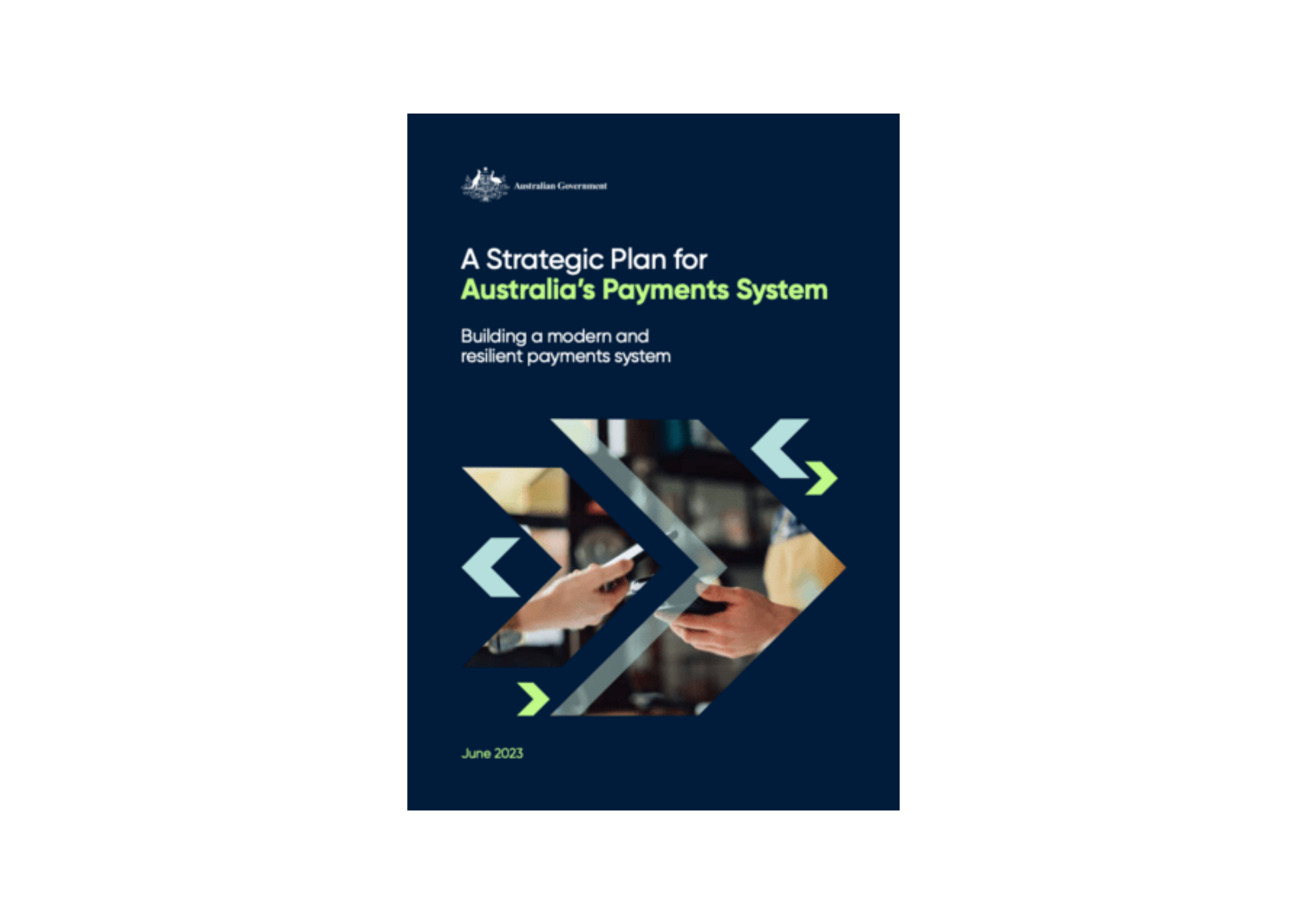
A Strategic Plan for Australia’s Payments System
The Government is releasing its Strategic Plan for the future of Australia’s payments system which sets out its policy objectives and priorities for the payments system.
The Strategic Plan was developed through a consultation process in collaboration with regulators, industry, consumer and business representatives.
The Strategic Plan provides businesses with certainty and clarity on the Government’s approach to important issues in the payments system, allowing businesses to invest with certainty and innovate. The Strategic Plan also outlines the Government’s commitment to ensuring that Australia’s payments system is safe, affordable, can be trusted and will remain readily accessible.
The Strategic Plan will be reviewed on an 18 month review cycle. This will allow the Government to report on its progress against its objectives and priorities, and ensure the Strategic Plan is responsive to advances in technology, competition and changes in consumer demand.
Source: treasury.gov.au/

For Australia’s financial sector, digital trust is the new currency
As adoption of banking apps grows, so does pressure to increase the range of capabilities the apps support, which has security ramifications.
Mobile app-based banking continues to find favour with Australians: more than two-thirds now use a mobile banking app or smartphone to do their banking, and it offers the highest customer satisfaction rating of any banking channel, averaging an 89.4% rating by customers of the ‘Big Four’.
As digital and self-service have been embraced by consumers, particularly in the form of increased use of apps, there’s inevitably pressure to build on that foundation.
A review of the apps of the five major Australian banks mid last year found customers wanted to see more capabilities and functionality added to the apps, particularly around money movement and management to improve financial wellbeing.
Some of these capabilities are being added in via third-party developed plugins created by fintechs, while other banks and credit unions are seeking to code these capabilities and features directly into the apps themselves.
Whichever app expansion strategy is pursued, a key concern will be that the additional functionality brings with it additional security risks. The larger the range of functions that the app can perform, the greater the amount of data it is likely to be handling.
All of these functions combine to create a broad potential attack surface for threat actors, who may view an ever-expanding banking app as a target that continues to increase in value.
Good security provides the confidence to expand apps
In a recent Deloitte survey, building digital trust was rated as the most important business strategy for success by financial institutions in the Asia-Pacific.
One of the top five benefits that cybersecurity investments had in this area was providing “confidence to try new things”, the survey found.
This means that at least in some banks, there’s a direct link between security and app capability growth; if a bank or credit union lacks confidence in their setup, they are less likely to try new things that could increase their security risk or exposure.
Banks and credit unions alike are acutely aware of their critical infrastructure role in Australia, and of the impact that a breach could have on customer confidence and goodwill. The critical nature of banking apps is often on display if they suffer downtime or degraded performance. Customer sentiment can turn quickly if they suddenly cannot perform critical tasks such as contactless payments at a supermarket register. And to be clear: these incidents aren’t often security-related. A security-related impact could prove catastrophic, particularly from an erosion of digital trust perspective, let alone what exposures individual customers could have.
Fortunately, credit unions and banking institutions tend to take a very proactive, best-practice approach to cybersecurity, and this extends to the oversight of their apps.
Many, for example, have focused on upskilling the defensive capabilities of their development teams. Without this education and verification, a lack of expertise may lead to teams taking shortcuts and/or lapsing into human errors, which could trigger configuration issues and code-level vulnerabilities.
Importantly for banks, these vulnerabilities could raise risk thresholds to a point that’s incompatible with, or in breach of, their regulatory requirements. Stringent regulations – including the Payment Card Industry Data Security Standard (PCI-DSS), the EU’s General Data Protection Regulation (GDPR) and additional global and national initiatives exist to address issues such as insecure data storage, insufficient authentication/authorisation, poor code quality and code tampering.
These standards create and drive vigilance among risk teams. In their pursuit of app expansion and increased customer satisfaction scores, it is important that developers or customer experience teams do not do anything that would undermine this vigilance and risk position.
Growing role-based security upskilling and awareness
To lay the foundations to proceed with banking app expansion with confidence, a holistic, people-driven security program is beneficial for creating the right mindset and foundational skills base.
A program that takes a dynamic approach based upon real-life threat management scenarios – as opposed to a static learning approach – will gain the most traction quickly. This can include the leveraging of motivational tools, such as rewards for successful “wins” and skills acquired.
Security learning pathways should also be available to everyone with a stake in the bank’s customer success. Developers are just one part of the ecosystem. Other parts of the organisation such as application security (AppSec) professionals and senior management also have key stakes in securing digital experiences and building digital trust. Executives, in particular, need to understand that security is not a “set it and forget it” discipline. A combination of tools and training is the most effective way to maintain the currency of security knowledge and best practices.
A positive security program focused on role-based education and awareness can lead to increased security engagement across the entire organisation, establishing the bank as “security-first.” From that position, unconstrained innovation can safely follow.
Written by Pieter Danhieux, CEO and Co-founder, Secure Code Warrior. Source: australianfintech.com.au

Anti-Scam Centre launches first ‘fusion cell’
The new National Anti-Scam Centre has launched its first so-called “fusion cell”, pulling together experts from regulators and industry to work on identifying ways of disrupting investment scams.
The Australian Competition and Consumer Commission, which operates the centre, announced yesterday that representatives from the ACCC, ASIC, banks, telcos and digital platforms will work on the project.
Fusion cells are “time-limited taskforces designed to bring together expertise from government and the private sector to address specific, urgent problems”.
The investment scam fusion cell will operate for six months and will target a number of goals: removing scam websites from the internet, stopping scammers reaching potential victims, sharing information about investment scams to assist the private sector to take disruptive activity; providing information to the public; and gathering intelligence to refer to law enforcement.
The ACCC said it will coordinate a series of these groups, with different participants, to target different types of scams.
The government announced in the May budget that it would provide A$58 million of funding for the centre over three years. Banks are expected to play a significant role in the centre’s work.
ACCC deputy chair Catriona Lowe said: “We’ll be using this funding to build the technology needed to support high-frequency data sharing with a range of agencies, law enforcement and the private sector.”
The funding was part of a package of measures announced in the budget, aimed at combatting scams and cyber crime. ASIC was allocated funding to allow it to identify and take down phishing websites and other sites that promote investment scams.
The Australian Communications and Media Authority was allocated funding to establish and enforce an SMS sender ID registry, aimed at impeding scammers seeking to spoof industry and government names in message headers.
Lowe said the Anti-Scam Centre will work with ASIC as it develops its scam website takedown service and support ACMA as it sets up the SMS sender ID registry.
Source: Banking Day, July 4, 2023.

From days to minutes: Payment services provider Indue accelerates its ability to innovate using Azure
Indue has been a significant player in Australia’s payments sector for more than 50 years. The payments technology provider is an Authorised Deposit Taking institution who specialises in helping organisations of all types adapt to and benefit from the latest innovations in payments technology.
Through its solutions – which encompasses everything from card management and mobile payments to direct entry transactions and real-time fraud detection – Indue aims to eliminate the need for multiple third-party engagements and streamline the payment system implementation process.
Indue is a founding member of Australia’s New Payments Platform (NPP), launched in February 2018 to modernise the nation’s payment infrastructure. The platform enables faster, more flexible and data-rich transactions to meet the evolving needs of Australian consumers, businesses and financial institutions.
Keith Bromwich, Head of Architecture at Indue, says Indue has helped clients adopt the NPP since its inception.

“Our role is to allow tier 2 and 3 financial institutions such as mutuals, regional banks and BAAS providers to access the NPP via our own platform,” he explains.
In June 2023, the NPP introduced PayTo, a new digital way for merchants and businesses to initiate real-time payments from their customers’ bank accounts. PayTo solves many existing challenges with direct debit payments, including processing delays, limited transaction information, and a lack of control for consumers and businesses over payments.
To ensure it could help clients adopt the new payment method, Indue embarked on an ambitious project in March 2022 to transform its technology infrastructure – largely made up of on-premise data centres – and adopt a more cloud-native approach.

In May 2022, Indue engaged Microsoft partner Arinco to help it develop enterprise-scale landing zones and a robust application programming interface (API) platform in Azure.
“The people we worked with at Arinco were absolute knowledge leaders,” says Bromwich. “They helped us make the right decisions by providing the pros and cons.”
Arinco used a flexible delivery approach to facilitate development timelines, which saw the first application landing zones for PayTo being implemented by early July 2022. This enabled Indue’s developers to build new capabilities for testing by October 2022.
As this was Indue’s first major deployment of modern web APIs in Azure, Arinco supported and educated Indue’s developers and engineers by leveraging its partnership with Microsoft.
“Firstly, we embedded consultants within Indue’s development teams, focusing on accelerating outcomes and providing best practice guidance for topics such as .NET development, Azure API deployment and security,” says James Westall, Account Executive at Arinco.
“Secondly, our consultants worked with Indue’s platform engineers, sharing our expertise with them as we developed code for each landing zone. This meant that at transition time, Indue engineers were starting from a solid knowledge base.
“Lastly, we partnered with Microsoft to deliver hands-on Azure Accelerate workshops. These covered key topics identified by Indue, enabling employees to get familiar with Azure in a safe environment with instructor guidance.”
The other challenge that Arinco helped Indue solve was the operational sign-off of its Azure capability.
“As an entity that’s regulated by the Australian Prudential Regulation Authority, Indue must be able to attest to the security, stability and robustness of its services,” explains Westall. “The deployment that we developed was designed to remain compliant using Azure and third-party security tools, including the capability to hold Payment Card Industry data.
“We also assisted Indue in developing several operational documents and procedures, ensuring key details about running solutions on Azure were available for external auditors.”
Arinco’s accelerated approach enabled Indue to launch its PayTo integration within the tight timeframe and begin onboarding clients in June 2023.
Enhancing innovation in the cloud
While Indue is still in the early stages of its cloud journey, its event-driven architecture in Azure is already delivering benefits. These include increased flexibility and scalability, which enable Indue’s developers and engineers to deploy any project – not just PayTo – in the cloud much faster and move from business idea to development workload in minutes or hours rather than days.

“The innovation piece is a key focus for Indue and its customers,” says Ryan Spain, Chief Information Officer at Indue. “Leveraging cloud-based technologies like Azure gives us access to a much wider variety of innovative capabilities in a fraction of the time compared to on-premise, and enhances the products and services we can offer.”
Indue’s move to the cloud has also helped them simplify its technology stack and reduce operational costs. Transitioning its Corporate Services (Virtual Desktop, remote access, and Office environment) to the Azure Virtual Desktop capability which operates within the enterprise-scale landing zone structure.
Now, key personnel can focus more on value-adding tasks rather than maintaining the performance and security of Indue’s hardware and software.
“We don’t have to worry about data centre connectivity or patching. All of that low-level maintenance is done by Microsoft,” says Bromwich.
Indue plans to grow its cloud footprint in Azure by kicking off two other major projects in 2023. One will focus on implementing a big data lake that leverages Microsoft’s advanced analytics capabilities. The other project will focus on migrating Indue’s on-premise Microsoft Dynamics 365 platform to Azure. Both projects will further enhance Indues’ ability to deliver innovative payment solutions and a better customer experience, according to Spain.
“This is a strategic partnership with Microsoft,” he says. “They’ve been on the journey with us from the start, and we really appreciate the assistance and guidance they’ve provided. The partnership has been a key enabler for facilitating both the PayTo integration and our broader cloud strategy.”
Source: Microsoft News 30 June 2023
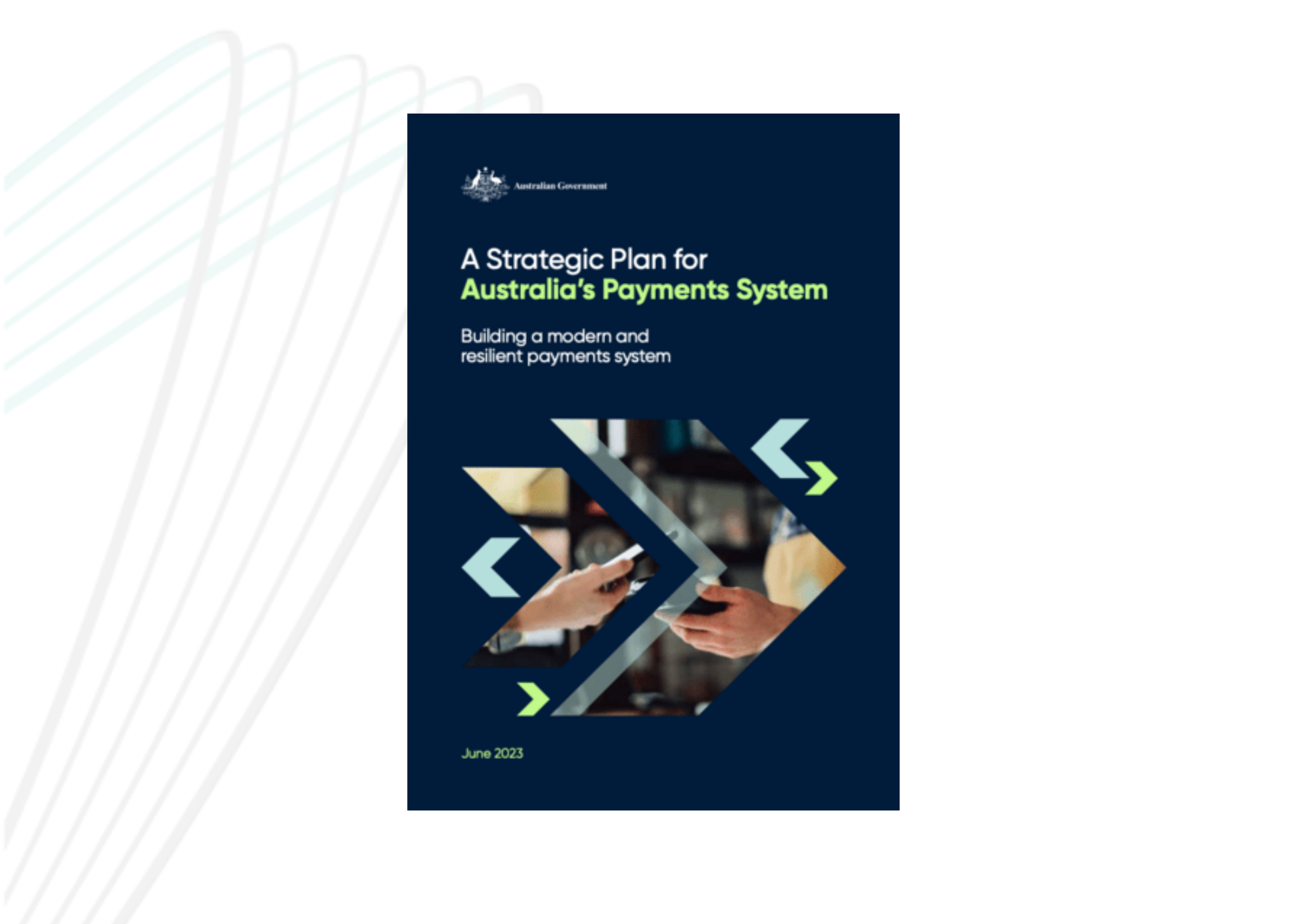
AusPayNet’s Response to Government’s Announcement on Modernising Australia’s Payments System
Government’s Strategic Plan for Payments has been much anticipated since its consultation late last year. Similarly, it was excellent to see today’s announcements of the consultations on the Payment Systems (Regulation) Act and on the new payments licensing regime. Why? Well, collectively they will, in two ways, ensure that Australia’s payments system is fit for the future by:
- enabling the prioritisation of payments initiatives and investments; and
modernising payments regulation to ensure a “same risk, same rules” approach. - Together, that will protect and benefit end-users and support innovation. The future of payments starts here and it’s an exciting one.
The Strategic Plan for Payments
A comprehensive plan for the future of payments has been attempted before: by the RBA in 2012 and more recently by AusPayNet. However, Government’s approach adds to those prior attempts by basing the prioritisation of payments initiatives and investments on Government’s policy objectives, and by pledging to review that prioritisation every 18 months.
The Plan also helpfully sets out a path for six key elements of the payments system on which AusPayNet is already engaged: scams; cybersecurity; the future of cheques; the future of BECS; access to cash; and cross-border payments.
Scams
As I have said in other forums, we have a once in a generation obligation to solve for scams, which currently affect far too many Australians. The plan reiterates Government’s prioritisation of the establishing of the National Anti-Scam Centre, and its intent to developing new cross-sectoral, industry anti-scam codes. AusPayNet will work with Government and relevant regulators to leverage AusPayNet’s Economic Crime Forum and understand how AusPayNet can best contribute to the anti-scam codes. Together we can make Australia hostile to scams.
Cybersecurity
In the cybersecurity section of the Plan, the Government calls for the card payments industry to begin migration to the Advanced Encryption Standard (AES) in 2025. This is important given, as the plan states, “the requirement for continued uplift in system-wide security standards and practices relating to the security standards and encryption methods for card payment systems.” That uplift requires Australia’s (and the world’s) card payments to migrate to post-quantum computer ready encryption (i.e. AES).
This process will involve migrating almost one million POS terminals, around 25,000 ATMs, all hardware security modules and all card networks in between. As the Plan notes, AusPayNet is currently leading a program of work for this migration, with a view to commencing the actual migration from 2025.
The Future of Cheques
On the future of cheques, the Plan is helpful in two respects.
Firstly, it specifies sunset dates for the Federal Government’s own use of cheques and for the cheques system itself. End-dates of 2028 for the former and 2030 for the latter may seem like long timeframes, but AusPayNet will work with the Federal Government on this, as well as with State Governments and other users. The proposed consultation paper on the future of cheque use in Australia and the support required to retire the cheques system – together with the regular review of the Plan – will be important in understanding whether this date can be brought forward. In considering this question, it is worth noting that both New Zealand and South Africa closed their cheques systems within a year.
Secondly, the Plan proposes reviewing the ongoing role of the Cheques Act. That legislation dates back to 1986 and is unique in legislating requirements around a specific payment type. No other payment method – cash, card, account-to-account – has specific legislation. Changing the Cheques Act would facilitate participants in the payments system – including end-users – proactively moving away from cheques where digital alternatives exist.
The future of BECS
On the future of BECS, the Plan supports the work that AusPayNet is already doing on an industry-led transition away from BECS. The Plan also spells out Government’s role in leading the way in this transition by moving its payments to alternative payment rails.
Access to Cash
The Plan notes that Government will support Australians having continued access to cash. This is important given cash remains a preferred payment method for some Australians. There are three factors which need to be monitored in this regard. The first is access to cash itself, monitored through the RBA’s periodic analysis. The second is acceptance of cash by merchants, which AusPayNet surveys annually. And the third is the efficiency of cash distribution, which the Plan notes is a focus for the RBA, supported by AusPayNet.
Cross-Border Payments
On cross-border payments, the Plan includes two aspects that I would like to call out.
The first is the Plan’s requirement that Australia’s high value payments (through AusPayNet’s High Value Clearing System and the RBA’s Real-Time Gross Settlement System) fully migrate to the ISO 20022 standard by the end of 2025. This aligns with AusPayNet’s existing plan under its program management of the ISO 20022 migration, whereby the current coexistence period for domestic payments ends in November 2024, ahead of the equivalent for cross-border payments in November 2025. It is also important in realising the benefits of the richer data associated with ISO 20022, particularly in terms of anti-money laundering (AML), know your customer (KYC), sanctions screening and straight-through-processing by both financial institutions and end-users.
Secondly, the Plan notes the Financial Stability Board’s roadmap – endorsed by the G20 – for making cross-border payments cheaper, faster, more transparent, and more accessible. AusPayNet’s Cross-Border Payments Advisory Council, which includes Treasury and the RBA, is coordinating Australia’s response to that roadmap and its targets.
The Payment Systems (Regulation) Act
Much like the Cheques Act, the Payment Systems (Regulation) Act (PSRA) is a product of its time (1998). The regulation of payment systems and their participants was simpler in the 1990s for two reasons:
- by regulating deposits (money-at-rest), payments (money-at-movement) were also regulated, because only Authorised Deposit-taking Institutions (ADIs) processed payments
- payment systems provided all payments services. Fast forward to 2023, and many payments are processed by non-ADI participants, and payments services are often provided using, rather than by, payment systems (think buy now, pay later, for example, which uses the card or account-to-account payments).
So, the review of the PSRA is important in enabling the RBA to regulate new forms of payment systems and services, as well as all their participants. The backstop will be a Ministerial designation power to be used in a situation of national interest. Together with a modern approach on payments licensing (see below), these measures will create a level playing field which will protect consumers and support innovation.
Payments Licensing
Treasury’s proposed approach on payments licensing equates to best practice globally. Regulation is now increasingly activity/function based. It is therefore eminently sensible for Treasury’s first consultation to focus on ascertaining the functions that should be subject to a payments license.
Essentially, if you are adding risk to the ecosystem by providing a payments function, you should be licensed and subject to the same regulation and standards as any other participant providing the same function. Simply put, “same risk, same rules”. This will protect end-users and it will support innovation.
It will also promote competition. Evidence from other jurisdictions such as the UK, Europe, Singapore that have payments (or ‘e-money’) licenses shows that innovators are supported by the wider ecosystem because they are licensed, in a way that they would not be supported if they were unregulated.
The first consultation on licensing is exactly that. As it suggests, further consultation will be required on the licensing regime itself, once the functions that are being regulated have been established. And as part of that further work, payments standards-setting bodies will need to be authorised, with their standards then applying to all licensees to ensure interoperability, consumer protection, security, and accessibility of and to the payments system.
To support that aspect of the licensing regime – which will be covered in a future consultation – AusPayNet is currently undertaking a program of work to become an authorised standards-setting body, building on 30 years’ experience and expertise in developing industry standards to respond to emerging trends comprehensively and with agility. We look forward to working with the Treasurer, Treasury, the RBA and other regulators on fleshing out the future regulatory regime for payments.
By Andy White, CEO, AusPayNet – www.auspaynet.com.au

We’ve launched our PayTo service offering
Indue is excited to announce the official launch of its PayTo service offering, enabling financial institutions and payment service providers and platforms to drive payment innovation and improved customer experiences.
A development of Australian Payments Plus on it’s New Payments Platform (NPP), PayTo modernises the way bank accounts are used for payments, helping businesses and consumers thrive in the digital economy.
Indue CEO Derek Weatherley said the PayTo launch is a natural extension of Indue’s NPP capability, which has been helping Australia’s leading mutual and community banks take advantage of flexible, real-time payments with industry-leading financial crime support since 2018.
“At Indue, we are committed to investing in product technology advancements that support our client’s digital transformation, innovation, and competitiveness, exemplified now through PayTo,” Mr Weatherley said.
“We have a team of NPP experts that have already begun to connect partners to PayTo, delivering them a faster, simpler, and smarter real-time payment service.
“We are thrilled to be part of the PayTo revolution and, as always, are keen to help our current and future customers keep pace with the changing Australian payments landscape.
“PayTo will enable a superior payment experience by streamlining payments and improving efficiency and control for consumers and businesses. This is achieved by PayTo while at the same time reducing risks and modernising the way money moves.
“Ultimately, PayTo further enhances Indue’s digital banking offering, providing a state-of-the-art payment services experience for our customers.”
Indue can connect financial institutions, payment service providers and platforms to PayTo .
To learn more and get PayTo ready, click here.

BioCatch Behavioural Insights
Fraud Cases From the Wild
In our digital world, behaviour tells all.
The BioCatch Behavioural Insights Report presents an overview of fraud attack trends and insights collected by our Threat Analytics team based on their experiences working on the front lines with global customers. In these short stories, we highlight how BioCatch is delivering actionable behavioural insights to create trust and ease across the entire digital identity lifecycle.
Read the BioCatch Behavior Insights Report – June 2023 today

Meet Head of Innovation – Jennifer Osborne
We sat down with our recently appointed Head of Innovation Jennifer Osborne for an insightful interview about her new role, Indue’s future, and the payments industry at large. Read what she had to say below.
WHY DO YOU THINK INDUE HAS INTRODUCED THIS ROLE?
Innovation is intrinsically linked to growth and business value, making it an essential ability amidst the disruption and change facing the payments sector today. To meet Indue’s core purpose of helping our customers drive their own competitive advantage, it’s essential we keep our product offering strong by staying on top of what’s in the pipeline. I believe Indue introduced this role as a way of continuing to meet our customer’s needs by bringing the wider community together to leverage knowledge and drive opportunity.
HOW HAS YOUR BACKGROUND PREPARED YOU FOR THIS ROLE?
I have worked across a variety of industries in my career, including financial services. That means I am coming to this role with an established understanding of the breadth and scale of the challenges that a lot of our customers face. From customer experience and operations to strategic portfolio delivery, I understand the banking lifecycle. I think my deep customer knowledge will set the tone for what I do in the innovation space at Indue. The customer always has and always will be at the core of our work.
WHAT IS YOUR VISION FOR THE ROLE?
As I mentioned, there is huge disruption and opportunity in our industry. My vision for the role is that we provide insights and guidance on evolving opportunities, driving a purposeful, customer-centric roadmap of innovative change through collaboration with our community.
SPEAKING OF OPPORTUNITY, WHAT DO YOU BELIEVE IS THE MOST NOTEABLE POSSIBILITY FOR INNOVATION IN THE PAYMENTS, FINANCIAL SERVICES, AND BANKING SECTOR?
There has been, and continues to be, a strong emphasis on digitisation and operational efficiencies. People these days are time poor and generally more impatient, meaning we have the opportunity to streamline and improve customer experiences.
CONVERSLEY, WHAT DO YOU THINK THE MOST SIGNIFICANT CHALLENGES TO INNOVATION IN THIS SECTOR ARE?
For the financial services and payments sector particularly, I think we’re seeing a significant change of pace and increasing cost of doing business. Customers are more informed now, demanding a different proposition. Data and security are front of mind, posing the difficulty of digitising services while keeping them exceptionally safe. At the same time, services need to remain easy to understand and adopt, as well as cost-efficient. It’s all a balancing act.
WHAT ARE THE THREE MAIN AREAS YOU INTEND TO FOCUS ON IN THIS ROLE OVER THE NEXT 12 MONTHS?
I think my focus areas can be summarised as three questions:
- What is the market doing?
- What are our customers trying to achieve?
- What opportunities exist to help them succeed?
Essentially, I hope to provide market insights and thought leadership at an aggregate level, understanding our customers challenges and delivering on the opportunities out there.
HOW DO YOU FORSEE INNOVATION ALIGING WITH AND CONTRIBUTING TO POSITVE SOCIAL AND ENVIRONMENTAL IMPACTS AT INDUE?
Change is inevitable, we just need to ensure it’s for the good of our people and our planet. Innovation and disruption are therefore required. I see Indue’s work aligning with that – we’re very conscious of and committed to ESG. We serve our diverse customers and communities through a variety of sustainable and social innovations, for example through our environmentally friendly bank cards and our accessibility offerings for visually impaired end-users.
WHERE DO YOU HOPE TO SEE INDUE IN 5 YEARS TIME?
There is so much knowledge and passion across us and our customers that the future is extremely exciting. We’re keen to grow and consolidate loyal partnerships with our customers, cultivating a highly connected community who maximise and optimise, together. Through our focus on and commitment to our customer’s purpose, I hope we continue to prove ourselves as the provider of choice.
DESCRIBE WHAT INNOVATION MEANS TO YOU.
The age-old question… innovation means different things to different people! For me, it’s about bringing renewed focus to optimise strategies. That might be through small incremental changes or more disruptive means, but either way it will deliver value in a customer-centric and sustainable way.

The Mutual Bank Partnership
For 135 years, The Mutual Bank has met the financial needs of the Maitland, Newcastle, and Hunter communities in New South Wales, serving and supporting them in building a sustainable future.
Since March 2022, Indue has provided The Mutual Bank and its members with a significantly expanded payment services suite, including Direct Entry, BPAY, NPP, Financial Crimes, Anti-money laundering, Card Services, High Value Payments, and an expansion of its Digital Payments offering.
The Mutual Bank CEO Geoff Seccombe said the partnership continues to be driven by a strong alignment in company values, product offerings, and payment needs.
“Our relationship with Indue began when we needed assistance in becoming the first local mutual bank issuer of Apple Pay in the region. But it is founded upon much more than a vested interest in innovative payments technology,” Mr Seccombe said.
“Indue earned our trust, respect, and business by delivering on its payment services promise, and it has kept it by continuing to share our community-first focus and partnership culture.
“I commend Indue for its support of the local communities in which we operate, and its unwavering commitment to environmental, social, and cultural initiatives,” Mr Seccombe said.
Indue CEO Derek Weatherley said that alignment with our clients’ sustainability practices, community programs, and employee wellbeing are core to our values.
“The best partnerships are achieved when company culture and core values align, which is what we have experienced with The Mutual Bank,” Mr Weatherley said.
“We have an excellent understanding of The Mutual Bank’s priorities and their wider community goals in operating in a socially responsible manner, prioritising positive social impact and a genuine ‘one team’ support model with on-the-ground support.
“We look forward to continuing to work with The Mutual Bank and its community” Mr Weatherley said.
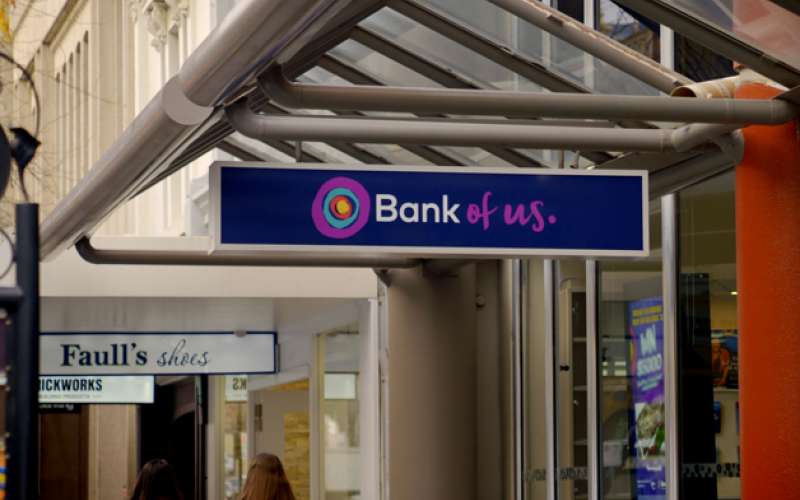
Orion protects Bank of us Customers
Tasmania’s Bank of us and its customers are reaping the significant fraud protection benefits of Indue’s Orion Financial Crimes Service, delivered as part of our exclusive full-service payments partnership.
As an agile solution that enables safer payments, ‘Orion’ offers real time, non-stop fraud detection, monitoring, and management through integrated AI machine learning.
Bank of us CEO, Paul Ranson said outsourcing payment services to Indue, including financial crime solutions and the provision of aggregated insights, predictability, and forewarning, has been of major benefit to the customer-owned bank.
“With Orion, more fraud cases are being detected and deterred before they hit accounts, drastically reducing our volume of disputes while simultaneously increasing our customer satisfaction and security,” Mr Ranson said.
“On the rare occasion fraud has transpired in the last 3 months since transitioning to a full-service partnership, Indue’s service has been incredible at enabling chargebacks to occur promptly, putting money back in our customers wallets faster.
“The necessity and truly incredible value of this service for Bank of us was illustrated when, on the first day of Orion’s operation at our bank, it saved just one of our customers $25,000.”
Indue CEO Derek Weatherley said the Orion service demonstrates industry-leading performance in financial crimes prevention, effectively reducing the burden on the non-major banks that we protect and serve, such as Bank of us.
“With more than 2.4 million accounts under management, Orion has access to a large pool of transactional data to detect trends, with rules tailored to meet the needs of individual organisations like Bank of us,” Mr Weatherley said.
“Our Australian-based team of fraud analysts do the heavy lifting, freeing up Bank of us to do the things they’re good at, like great banking products and services to Tasmanians, with enhanced peace of mind, knowing we’ve got them covered.
“For both Indue and Bank of us, who prioritise and care for customers, the reliable payments protection Orion provides is all that much more important.”
Beyond Orion, Indue’s range of services include the New Payments Platform, prepaid and gift card programs, mobile payments, the Nucleus Card Platform, and Payment and Bureau Services.
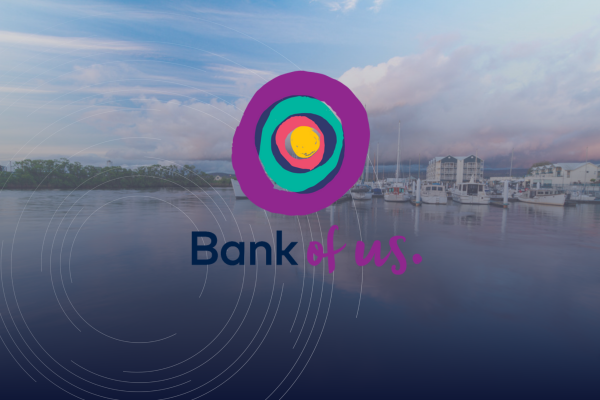
Bank of us upgrades fraud monitoring with Indue
As it targets August migration deadline.
Bank of us, a Tasmanian customer-owned institution, has signed Indue to upgrade its fraud monitoring, as it works through a broader payment migration project set for completion this August.
Bank of us has a retail presence in Tasmania and 33,000 customers.
The bank stated earlier this year it had invested in an upgrade to its fraud monitoring service, aimed at building greater protection for customer funds.
CEO Paul Ranson told iTnews the bank appointed Indue “as our exclusive full-service payments partner, which has included the adoption of Indue’s Orion financial crimes service.”
“The Orion financial crimes service monitors all card transactions in real-time, allowing for most fraudulent transactions to be detected and blocked before they hit our customer accounts,” Ranson said.
“The service will continue to be expanded to cover all other payment types from May,” he said, adding the financial crimes service is powered IBM’s safer payments platform.
He said since the upgrades, the bank has noted “a significant reduction in the number of fraudulent transactions affecting our customer accounts.”
Implementation of the financial crimes feature is part of a bigger project, kicked off last October, to migrate payment and settlement services over to Indue.
The project is expected to be completed by August 2023 and give customers access to more sophisticated end-to-end payment solutions.
Source: IT News, Apr 14, 2023:

AusPayNet Strategic Plan
12th April 2023
Current regulation is not fit for purpose due to the technological advancements and consumer behaviours which have led to emerging entrants disrupting the payments sector. To keep pace, promote smooth economic operations, and protect Australia’s position as a leader in the global marketplace, the Australian Government has set the regulatory wheels in motion.
In December 2022, Treasury released a consultation paper seeking input into the ‘Strategic Plan for the Payments System’. The purpose of this paper is to pursue feedback into the Plan for the payments system to ensure that Australians can continue to transact in a safe, secure, and efficient environment.
The Plan will be a comprehensive, long-term strategy that provides clarity on the Government’s policy objectives and priorities for the payments system. It will support a shared vision for the payments system and facilitate coordinated decision-making between the government, regulators, industry, and consumer and business representatives.
At Indue, we align with the sentiment and suggestions put forward by the Australian Payments Network CEO Andy White in his recent commentary. The Plan’s objective is commendable and necessary, however, its effectiveness is contingent upon strategic and impactful execution.
Mr White advised that Treasury’s priority for 2023 should be “ensuring the regulatory framework is fit-for-purpose and promotes competition” by progressing leadership, regulation, and licensing.
It is through this fit-for-purpose and fit-for-future framework that the industry will find clarity around how to compliantly operate more efficient, innovative, accessible, and trustworthy modern payments systems.
We eagerly await the release of the inaugural Plan as an opportunity to enhance the leading payments solutions we provide to mutuals, banks, corporates, governments, payment providers and other non-bank financial institutions.

Indue Upgrades High Value Payment Processing Capability
21st March, 2023
Indue is excited to welcome in the next era of high value payments processing, as the industry reached a significant milestone this week with a major multi-year upgrade to ISO20022 messaging standards, to future-proof the payments system and enable domestic and international payment system interoperability and data-rich messaging.
In conjunction with the rollout of this major industry upgrade, Indue has enhanced its high value payment processing technologies to maximise the operational efficiencies and security posture of the system.
Indue Chief Executive Officer Derek Weatherley said these new messaging standards will bring many benefits for customers and their operational staff, such as improved financial crime monitoring, rich data and international harmonisation via the SWIFT network.
“We have kept clients front of mind while redeveloping our high-value payment processing capabilities to ensure they capitalise on the value of the technology,” Mr Weatherley said.
“Among many benefits, our clients will have access to streamlined end-to-end processing and full self-service capabilities through the online portal that enables real-time transaction tracking, approval and auditing.
“The upgrades also support API messaging for updates, notifications and other functions, automated approval processes, significantly lowering operating costs and risks, as well as modernising the overall security posture, including multi factor authentication.
“Our processing capabilities align with the ISO20022 upgrades to ensure our clients can enjoy greater operational efficiencies, and we look forward to driving faster payment experiences with the roll-out of these technologies.”
The upgrade was launched with Auswide Bank in March 2023, with an iterative roll-out across our full client base underway.

Auswide Bank Partnership
21st March, 2023
Following the successful launch of a New Payments Platform (NPP) for Auswide Bank in 2022, Indue and Auswide have been busy behind the scenes to successfully implement Direct Entry, BPAY, Cards as well as Anti-Money Laundering (AML) and High Value payment capabilities.
Throughout the past year, Indue has enabled digital transformation, state-of-the-art customer experiences, and improved business outcomes for Auswide Bank, enabling them to best help achieve their goals of helping Australians achieve home ownership, create wealth, and access banking and financial services.
Auswide Bank Managing Director and CEO Martin Barrett said that Indue’s similar commitment to prioritising customers has assisted in delivering outstanding services to Auswide Bank communities and customers across the country.
“Indue’s full suite of end-to-end payment solutions are a key component of transforming our business with technology and providing digital payment choices for our customers, improving their experience and delivering stronger business outcomes,” Mr Barrett said.
“Efficiencies that have flowed through our operations as a direct result of Indue’s integrated service stack have exceeded all expectations – it is fantastic to have a partner with modern technology that does the heavy lifting for us”.
Indue CEO Derek Weatherley said “I am very pleased that this transition has closed so quickly and cleanly and my team remains energised to support Auswide Bank in bringing these services to their customers.”
“Since Indue’s appointment as Auswide Bank’s exclusive full-service payments partner earlier, we have expedited the implementation of NPP, Direct Entry, BPAY, Cards, AML and High Value payments” Mr Weatherley said.
“As a founding member of the NPP, our partnership with Auswide Bank enables the organisation and their customers to securely send and receive payments with other financial institutions in near real-time.
“Complementary to this, Direct Entry and BPAY provide cost-effective, convenient ways for customers to transfer funds between bank accounts and pay bills. The Indue and Auswide Bank relationship has been further enhanced by simple and adaptable payment card and mobile payment services, including switching and settlement, which provide maximum flexibility for Auswide Bank and their customers.
“The efficient and seamless implementation of these offerings demonstrates Indue’s industry-leading knowledge and ability to deliver cutting-edge integrated solutions to our customers.
“We are proud of the significant operational efficiencies that Indue’s integrated payment systems provide to Auswide Bank freeing staff up to focus on serving their customers and community. We very much look forward to continuing our successful partnership.”
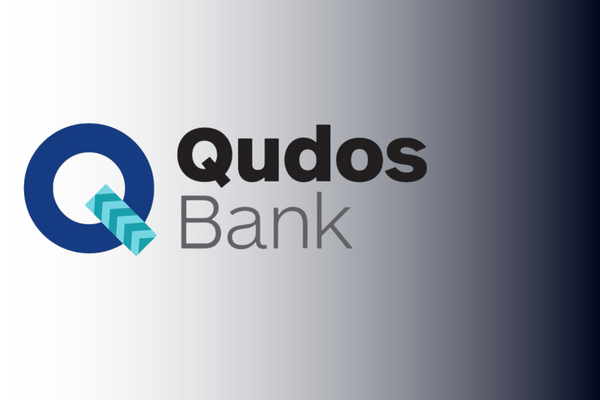
Qudos Bank selects Indue as their principal payments partner
We are delighted to confirm that Qudos Bank has reappointed Indue as their exclusive full-service payments partner.
Qudos Bank is one of Australia’s largest customer-owned banks with branches in Sydney, Melbourne and Brisbane and more than $5 billion in assets, offering a full range of financial products and services, including home loans, personal loans, transaction, and savings accounts, super and investing, and insurance.
Over recent years Qudos Bank has been on a digital transformation journey and provides a host of exceptional digital banking platforms and payments services. Qudos Bank CEO Michael Anastasi said the relationship renewal reaffirmed the strength and value of the long-term partnership with Indue to provide end-to-end payment services.
“We have a long term partnership with Indue and renewing the relationship supports continuing development in our innovation around digital banking offering and providing a state-of-the-art payment services experience for our customers, underpinned by market leading security in payments for our customers” Mr Anastasi said.
“Importantly, Indue’s customer-focussed culture is outstanding across the organisation and directly aligns to our central focus as a customer-owned bank on delivering banking services in the interests of our customers, providing synergies that will help Qudos remain at the forefront of excellent in customer service standards for our customers across Australia.”
Indue CEO Derek Weatherley said the renewal of the partnership will enable Qudos Bank to provide to their customers a comprehensive suite of end-to-end payment services coupled with market leading payment security. Qudos has been remarkably successful through a laser focus on customer advocacy and being easy to do business with – the partnership with Indue ensures that excellence in customer outcomes remains at the forefront of their business operations.
“Indue remains heavily invested in advancements in our product technology capability, reinvesting our profits into research and development via our Innovation Hub and the various working groups it supports and continuing to support the digital transition of our clients,” Mr Weatherley said.
“We couldn’t be more pleased Qudos Bank has chosen to extend our long-term partnership and we are looking forward to working together to build out future innovation pathways for real time, data rich, frictionless payment choices for customers. Qudos has been a great supporter of their community and we look forward to working closely with Qudos this year on supporting and driving community focused outcomes important to their organisation.
“The payment products and services suite provided to Qudos Bank by Indue will include NPP, PayID & Pay To, mobile payments, Orion Financial Crimes, Cards, Direct Entry, and BPAY services.”
-ENDS-

NPP Roadmap provides update on the platform’s uptake and capability development
The NPP October 2022 Roadmap has been published.
An update on the NPP roadmap is now available providing the latest numbers relating to the growing use of the NPP. There are now close to 89 million accounts able to make or receive NPP payments and the platform now processes more than 100 million transactions a month. One in three of all account-to-account credit transfers are occurring via the NPP. There are close to 13 million registered PayIDs, a 44 per cent increase since the same time last year with 315,000 new PayID registrations on average being added every month. Usage of PayID is growing with research conducted by NPP Australia revealing that 47% of users using PayID at least weekly.

ID8 Tour | Money 20/20 – Blockchain & Crypto
Blockchain and
crypto have made a surprising resurgence to the agenda at Money 20/20, likely
driven by the growth in central bank currency pilots and collaborations into potential
use cases for government issued digital currency. The Indue client tour
participants absorbed broad learnings on how the concept of a fully digital
decentralised network could benefit customers and clients in the payments and
banking sectors.
A wide spread of
blockchain use cases were presented, everything from connected cars through to
micro payments, with the major feature being the ability to move money in
real-time at lower cost, a presumption that we see either prove or disprove
itself in the years to come.
The focus on the
use of crypto in payments has been heavily on enabling cross-border
transactions, as well as the challenges posed by increasing regulation.
The bold headline
from proponents of the technology at Money 20/20 was that everything will be on
blockchain – it’s only a matter of time.
This optimism
comes with words of warning. These technologies continue to be developed
through a cycle of uncertainty and regulation remains a major challenge. With
improved regulation we will likely see a more stable and genuine value emerge
for crypto and the development of more businesses with underlying strength.
With these
expansive developments in the fintech space, Indue continues to stay tuned to
these innovations to provide our clients and their customers with strategic
guidance and forethought on the payments landscape of the future.

id8 Tour | Money 20/20 Diversity & Culture
The Money20/20 conference has given us the opportunity to hear from a wide range of world-class speakers, including global entrepreneurs and even a Grand Slam tennis champion, who have all touched on the intrinsic link between organisational culture, diversity, and performance.
The companies that are best positioned to establish a competitive edge are the ones that embrace a culture of prioritising diversity of people and thought, and equally, this diversity is the best form of due diligence when developing new business models or entering new markets.
In a broad ranging discussion about fintech and start-ups featuring Serena Williams, we heard about new business models and solutions that are focused on solving problems for customers, leveraging the power of partnerships, and driving a competitive edge through organisational culture embracing diversity.
We were also fortunate to hear from several women who have founded new payment fintech companies in the past two years, including Kontempo – a Mexico-based bank focused on providing credit to small businesses, Lucy – which is providing funding for female entrepreneurs, and the competitive edge through embracing diversity was a recurring theme.
The theme of modernising core was prevalent, ensuring foundations are built on future proofed architecture. Another common theme in this vein was ‘build core, partner everything else’. This includes leveraging partnerships for insightful and innovative product design, and the theme of diversity featured again through partnerships that support organisational diversity, with a US Bank focussing a commitment to diversity though partnering with fintechs who are focused on minority/women only businesses.

Money20/20 – Identity
With the evolving world of payments and transactions providing a new frontier for digital criminals, financial crime has been a central theme of Money20/20.
The focus has been on opportunities and challenges posed by emerging technology in providing increased security and protection and the on-going convergence of cyber and financial crime.
Blockchain and crypto were resurgent topics and there were lively debates about the security implications of Web3 and questions posed on whether Blockchain makes fighting crime easier or harder – the jury is still out.
With much financial crime involving identity theft, and as we continue to watch what is unfolding back in Australia, online identity verification has been a hot topic. We’ve learned there are many ways companies can better structure their fraud control frameworks to protect themselves and their customers, including by deploying biometrics technology, identifying risks in customer onboarding, and increasing friction in authentication processes for higher risk transactions.
What is clear is the tactics used by digital criminals are vast and dynamic, from account takeovers to synthetic ID fraud, SIM swap, phishing attacks, address spoofing, online money laundering and global data breaches.
As we close out the first leg of our incredible innovation tour with our clients, we are reminded that to combat financial crimes consumer education and intelligence sharing and collaboration are critical.

Indue Partners with BioCatch: Fraud detection technology fighting back against financial cybercrime
Fraud detection technology fighting back against financial cybercrime.
A new partnership with leading digital security analytics provider BioCatch will integrate behavioural biometrics into Indue’s end-to-end payment solutions, providing customers with increased protection against financial cybercrime.
Behavioural biometrics technology empowers users of online banking to make secure transactions against the rising threats of cybercrime, which cost Australians more than $300 million in 2021.
Indue Chief Risk Officer Jane Hinton said the new partnership with BioCatch will enable Indue to tap into the value of world-leading fraud protection analytics technologies to enhance the safety, security and trust of customer’s online transactions and digital banking.
“In today’s digital world, detecting and preventing fraud & mitigating the impact of social engineering scams is important as ever, so we are very pleased to be partnering with BioCatch to integrate advanced biometric technology into our payment solutions,” Ms Hinton said.
“We want to minimise the risk and maximise the security of online banking and embedding BioCatch’s best-in-class behavioural biometrics technology into our end-to-end payment solutions will create a seamless and safe digital experience for users.
“Most importantly it will provide additional peace of mind that online transactions through Indue’s payment platforms are secure and safe from the ever-growing threats of online financial crimes.”
The technology works by continuously monitoring digital movements and looking for signs of fraudulent activity, which is pinged immediately once identified. The AI systems observe behaviour such as mouse movements, typing cadence and interactions with the screen to calculate a risk score and distinguish between genuine and criminal activity.
BioCatch specialises in behavioural biometric technology and provides banks with account takeover protection, mule account detection, social engineering scam detection and account opening protection, providing institutions with comprehensive insights to fight back against cybercrime.
Find out how our Financial Crime solutions can help your business.

Bank of us commences long-term partnership with Indue
5 October 2022
We are pleased to announce that Bank of us has selected Indue as their exclusive full-service payments partner, enabling the bank to enhance their payment solutions for customers.
The new partnership between Indue and Bank of us will elevate payment delivery services, giving customers access to sophisticated end-to-end payment solutions that reinforce the customer first ethos of customer owned banks.
Bank of us Chief Executive Officer Paul Ranson said partnering with Indue will significantly enhance their suite of innovative offerings and ensure customers continue to be placed at the centre of all their payment experiences.
“Indue is a market leader in digital payment programs and partnering with them as our exclusive payments’ provider will provide a range of benefits for our customers and staff.
“Partnering with Indue to provide our end-to-end payment services will enhance the payment experience for our customers and ensure a frictionless digital experience across all customer interactions,” Mr Ranson said.
“Bank of us has always been driven by the needs and interests of our community, so it makes good sense for us to partner with Indue and provide our customers and their communities with the highest quality payment solutions,” Mr Ranson said.
Indue Chief Derek Weatherley said the strategic partnership between the two organisations reflected the shared values between Indue and Bank of us to help customers thrive by providing easy, efficient, and secure payment technologies.
“We see great alignment between Bank of us and Indue, as we both strive to ensure customers feel peace of mind in their payment experience,” Mr Weatherley said.
“Indue is very much looking forward to supporting Bank of us as they deliver enhanced product offerings to their customers and our comprehensive suite of innovative payment services will allow their customers to truly maximise the benefits of using a customer owned bank,” Mr Weatherley said.
Bank of us is Tasmania’s only customer owned bank and provides a full suite of financial products to more than 32,620 customers across seven retail stores.
Indue’s range of services includes the New Payments Platform, Orion Financial Crimes Services that protect against cyber fraud, prepaid and gift card programs, mobile payments, the Nucleus Card Platform and Payment and Bureau Services.

Indue Customers Benefit from Fiserv Payment Switch Upgrade
Indue customers can now enjoy the benefits of a state-of-the art payment switch, following a major hardware and software upgrade to the transaction switching platform from Fiserv in Australia.
The new platform will greatly enhance Indue’s ability to deliver fast, convenient and consistent service to customers.
Indue Chief Delivery Officer Kevin Lugg said the major benefits of the upgrade include scalability, improved capability and functionality, access to industry compliance updates, API enablement, as well as providing a more flexible, interoperable connectivity into the Fiserv payments ecosystem.
“Upgrading the existing platform to the latest version of payment switching software and state-of-the-art hardware infrastructure provides a highly scalable, reliable and secure payment solution for Indue customers.
“The upgrade provides customers with a single, cost-effective and versatile transaction switch, reducing complexity and compliance overhead and ensuring scalable delivery to support future growth.
“The platform provides tandem non-stop capability and great mirroring, resulting in less down-time, and sets a solid foundation that enables Indue to further support customers as they move into the next phase of their digital journey.
“Customers can increase throughput seamlessly without the need for additional upgrades or investment because the platform immediately provides additional transaction processing on demand.
“It also provides access to out of the box API servers, with enhanced API architecture that will establish a standardised integration framework to enable ease of integration with digital channels in the future.”
Mr Lugg said it was critical for the Indue team to work collaboratively with strategic partner Fiserv, customers and partners to achieve a successful implementation of the upgrade.
“Upgrades to a platform such as this can only be successful with a highly collaborative approach and in this case involved a multi-week effort by Fiserv, Indue and its customers and partners across a series of geographically dispersed command centres.
“Indue worked closely with our strategic partner Fiserv and customers with a lead-in period of testing followed by a lead-out phase involving combined command centres to test all services, products and capability.
Indue is proud to partner with Fiserv, a leading global provider of financial services technology, to provide our customers with a dependable, fully integrated, end-to-end payment switch solution to meet their complex transaction processing requirements.

Indue Delivers Rapid NPP Implementation For Auswide Bank
Auswide Bank customers can now send and receive payments with other financial institutions in near real-time, following the successful launch of a New Payments Platform (NPP) offering by Indue.
Indue Chief Customer Officer Fred Perry said the implementation of NPP for Auswide Bank was remarkable due to its rapid speed to market and seamless delivery.
“Since Indue’s appointment as Auswide Bank’s exclusive full-service payments partner earlier in 2022, we have worked tirelessly to expedite this NPP implementation in addition to our DE and BPAY services,” Mr Perry said.
“As a result, the platform was launched in less than three months.
“The real key to completing the full NPP implementation so quickly, while ensuring the platform integrated seamlessly into Auswide’s current banking offering, was the strong collaboration between the Indue and Auswide Bank teams.
“The launch of NPP for Auswide demonstrates Indue’s ability to deliver integrated solutions efficiently and seamlessly to our customers, with industry-leading knowledge of the technical
and regulatory requirements needed to successfully complete a full NPP implementation.”
Auswide Bank Chief Customer Officer, Damian Hearne, said the implementation of the NPP for customers has been highly anticipated and will be a game-changer for every-day banking needs.
“The New Payments Platform really brings banking in-line with the way people operate on a day-to-day basis. Our expectations for sending and receiving information are aligned to the internet and the digital applications we use each day. The NPP will allow our customers to perform their banking requirements faster, smarter and more securely without the stress of when funds will arrive.”
Indue remains committed to supporting our customers through their digital transformations and providing state-of-the-art customer experiences and business outcomes.

Is the end of the cheque finally in sight?
Real-time, data-rich payment technology is transforming the way people pay for goods and services, consigning the once-popular paper cheque to dwindling niche sectors.
The end could finally be in sight within five years if cheques’ current decline in popularity continues, according to an AusPayNet report[1].
“Cheques are just clinging on,” says Grant Halverson, the chief executive of banking and payments firm McLean Roche Consulting.
“Most consumers have stopped using them except for some very infrequent types of payment. The biggest users are government departments, both state and federal, so when they’ll get rid of them cheques will be gone.”
Work has continued to amend legislation that specifies payment types, such as replacing the Pay Doctor via Claimant Cheque scheme in the Health Insurance Act with an automatic electronic funds transfer.
“Our analysis is that this will solve almost 75% of the government-related cheques issued,” according to AusPayNet.
COVID-19 accelerated digitisation of payments
The COVID-19 pandemic has also accelerated the trend away from cheques as lockdowns prevented in-person transactions and heightened the need to quickly distribute government subsidies.
Services Australia was the first government department to send relief payments in real-time via BPAY Group’s Osko system to those affected by the 2019-20 summer bushfires and COVID-19 disaster payments in 2020-21.
Osko allows payments to be made in seconds, including on weekends, and also includes far more detailed data about the payment.
These were key attractions of cheques in a largely pre-digital age, according to the RBA[2], given cheques could be written on a 24-7 basis and could include information (such as an attached invoice) to accompany the payment.
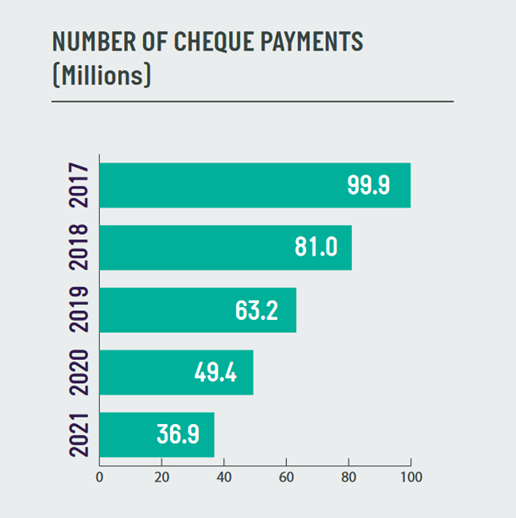
Source: RBA Payment Statistics
Charities leave cheques behind, BPAY a new choice
Charities have traditionally received millions of dollars in donations via cheques, particularly from older Australians.
Fundraising Institute of Australia (FIA) member data from 2019 showed that up to approximately 30% of fundraising revenue was received via cheques. The FIA wants to maintain cheques as a payment method although the pandemic has also encouraged older Australians to adopt digital payment methods.
More than three-quarters (77%) of Australians aged 65 and over were using online banking at June 2020 compared to slightly more than half (59%) just three years earlier, according to ACMA[3].
AusPayNet continues to work with industry bodies, including the not-for-profit sector and government, to increase awareness of the decline in cheques and of payment alternatives.
Meanwhile, some charities are now adding BPAY as a payment method, such as Rural Aid or Save the Children.
It allows the payer to confirm who they are paying at the time of payment, while the charity can issue the payer with a unique “Donor Number” as their reference.
“This makes it easy to reconcile the payment when it’s received, and they know who to send the tax receipt to,” says BPAY Group Managing Director Kim Tyler.
“Donors can also set up recurring payments using the same reference, while funds are received the next business banking day by the charity – they don’t need to wait for the cheque to clear.”
Property settlements go electronic
Another key reason for the rapid decline of cheques has been the adoption of e-conveyancing when buying a property.
Property settlement once required the buyer to hand over a bank cheque in exchange for the documents required to register them as the new property owner.
A PwC report commissioned on behalf of digital exchange PEXA estimated that up to five cheques were required per transfer and one additional cheque per discharge in 2015.
Now more than 80% of all property transfers and 95% of all refinances nationally are conducted over the digital PEXA exchange.
“The banks have enormous cost in creating and holding the cheque books,” Halverson says. “Everything about them is wrong: printing paper, the time it takes to turn them around, the cashflow you lose, and the lack of information.”
AusPayNet says it continues to monitor cheque usage into 2022, to ensure that current cheque users are not left behind as individual financial institutions ultimately make the decision that it is no longer a commercial decision to issue them.
[1] Future State of Payments Action Plan. Conclusions from AusPayNet’s Consultation. August 2020. Retrieved from https://www.auspaynet.com.au/sites/default/files/2020-08/APN_Future_State_Conclusions_Consultation_Paper_Aug20_0.pdf
[2] The Ongoing Decline of the Cheque System | Bulletin – June Quarter 2017. (2017). Reserve Bank of Australia. Retrieved from https://www.rba.gov.au/publications/bulletin/2017/jun/7.html#box-a
[3] The digital lives of younger and older Australians | ACMA. (2022, April 07). Retrieved from https://www.acma.gov.au/publications/2021-05/report/digital-lives-younger-and-older-australians
Source: BPAY Pty Ltd bpay.com.au (ABN 69 079 137 518).

A Look at Gen Z Banking Habits and Attitudes
Compared to other generations, fewer Gen Z customers expect to remain with their primary financial services organization a year from now. Do you know what Gen Z wants?
They are mobile-centric, diverse, ambitious and just starting their careers. They also have strong opinions on what they expect from their financial services organization. Our BAI Banking Outlook Special Report shares essential insights on Gen Z, the newest generation of banking customers.
Source: BAI 2022, www.bai.org

The Growth of Buy Now Pay Later
Buy Now Pay Later services have exploded in recent years, particularly among the younger set who are turning away from traditional credit.
The Buy Now Pay Later market has seen impressive growth in recent years. More than 3.3 million Australians (15.7%) used a Buy Now Pay Later service in the year to June 2021 – up from 6.8% in September 2018. The promise of convenient, frictionless, instant spending is appealing to shoppers, particularly those looking to purchase discretionary items.
While the payment method is more popular than ever right now, Buy Now Pay Later has been around for some time. Retailers like Harvey Norman, Bing Lee and JB Hi-Fi have long offered customers the option to purchase big-ticket home and technology items on interest-free credit. Meanwhile, department stores like David Jones and MYER have layby, and run special payment terms during busy periods like Christmas.
In the past few years, a bevy of new players have entered the scene, causing huge disruption across the retail sector. The likes of Afterpay and Zip are shaking things up in Australia and overseas, and they’re targeting a young, digitally savvy, mobile-first demographic. Afterpay currently has 3.6 million active users across Australia and New Zealand with transaction values over eight billion Australian dollars, while Zip has 2.5 million active users with 2.6 million Australian dollars in transaction value.
How the new wave of Buy Now Pay Later works
There are several different models under the Buy Now Pay Later umbrella. The most recent entrants, like Afterpay and Zip, charge the merchant a fee based on a percentage of how much the consumer spends. The retailer is generally happy to fork out this fee because they’re focused on the “incremental sales, larger purchase size, access to new customers and increased incidence of repeat purchases” that Buy Now Pay Later platforms facilitate.
Consumers make their repayments through an app with a linked debit or credit card, with debit being the clear winner. The majority (85%) of Afterpay users make their repayment transactions using a debit card , and ASIC reports an 80/20 split favouring debit cards when it comes to the credentials held on file across the Buy Now Pay Later providers.
Targeting youthful shoppers
When it comes to Buy Now Pay Later platforms, the RBA highlights a skew towards a youth audience, with more than half (55%) of users aged under 40. These younger consumers tend to have little credit history and they like the convenience of Buy Now Pay Later. Most platforms let them make purchases without the need to apply or gain approval like a traditional credit card would. Plus, they can easily keep track of their spending by logging into the provider’s app.
The downside, though, is that this easy access might cause shoppers to fall into debt. They’re spending money they don’t technically have, and providers like Afterpay and Zip don’t have to follow responsible lending regulations like credit card providers do. There’s also nothing stopping users from accessing multiple Buy Now Pay Later platforms at the one time.
The future of Buy Now Pay Later
Buy Now Pay Later providers are meeting a demand among younger consumers for payments that are instant, convenient and mobile-first. It’s safe to assume the sector will continue to grow rapidly as more industry verticals embrace the payment option. Along with retail, Buy Now Pay Later has made its foray into travel, healthcare and dental.
It’s likely the landscape will eventually need government regulation to address potential high levels of bad debt (in the wake of COVID-19) and increased competition on the market. Changes may prompt providers to rethink how they deliver their services and the prices they charge merchants.
Looking ahead
As the world of banking continues to make strides forward, Australian consumers are likely to be at the forefront of the next evolution. At Indue, we help businesses adapt and meet the changing expectations of consumers, by delivering innovative, compliant and secure payment systems.
To learn more about the trends shaping the payments landscape and what it means for your business, contact us today

The Rise of Fraud and Cybercrime
Payment providers are under pressure to ensure that customer demands for convenience don’t come at the expense of higher fraud and cybercrime.
.
Payment providers have long had to balance the trade-off between meeting mandated security requirements and providing convenience and the latest technology for consumers.
Over the past five to 10 years, this pressure has become more intense, as the demand for a wider variety of fast and convenient payment options. This, however, sometimes comes at the expense of security with criminals taking advantage of the situation.
Fraud and Scams in Australia
Australians lost a record $323 million to scams in 2021. Money lost to scams almost doubled in one year, with more than 286,000 Aussies reporting they were scammed last year.
These figures represent a ‘significant’ increase of 84% compared to 2020, when Aussies lost $175.6 million through the year.
Investment scams did the most damage according to the latest figures from the Australian Competition and Consumer Commission’s (ACCC) Scamwatch.
Investment scams accounted for $177 million, followed by dating and romance scams which saw people losing $52 million.
December saw the most money lost ($43.2 million) and August 2021 saw the highest number of scams reported (40,874).
New South Wales residents were collectively duped of $110 million – the highest, followed by Victoria where residents reported $74 million lost.
Crispin Kerr, Australia-New Zealand vice president at cybersecurity company Proofpoint, said the data paints an unfortunate picture of just how effective scammers were at taking advantage of Australians in the past year.
“The 84% increase in losses to scams in 2021 is significant and is just the tip of the iceberg when it comes to understanding the true impact on Australians,” Mr Kerr said.
“Based on the numbers for December, during the holiday season, people can become desensitised to receiving numerous advertising links for shopping deals and the like and may not think twice about opening a dangerous file or clicking a suspicious link.
“The data shows scammers were extremely active in 2021 and we anticipate this will only increase as scammers continue to evolve and update their tactics.”
How are Aussies getting scammed?
While investment and romance scams were the most damaging, there were a number of other scams that saw Aussies losing millions.
Investment scams accounted for more than half of all the money lost to scams last year, and increased in prevalence by 32% compared to 2020.
“Investment scams can seem very attractive, and scammers can come across as legitimate in their promise of financial gain through the purchase of shares, funds, cryptocurrency or other high returns,” Mr Kerr said.
“However, the reality is that these get-rich-quick schemes enable scammers to steal personal and financial information to siphon funds for their own gain.”
Social media sites were the main hub for money loss via romance and dating scams, with 40% of scams reported resulting in money lost.
“Scammers also utilised social engineering particularly during lockdowns when people were at their most vulnerable to steal millions from Australians in dating and romance scams,” Mr Kerr said.
Phishing scams – where scammers aim to gain personal information – had the highest number of reports in 2021, making up one quarter of all scams reported. This is an increase of 61% on the year prior.
Scams relating to threats to life or arrest disproportionately affected younger Australians aged 18 to 24 years old, and accounted for the highest losses at $3.3 million.
Employment and job scams also more than doubled in 2021 to $2.6 million, and identity theft scams increased threefold to $10 million.
Who is getting scammed?
Older Australians suffered the greatest loss according to the ACCC’s figures, with people over 65 years old losing a total of $81.9 million throughout the year.
This demographic also reported the highest number of scams (46,282), followed by Australians aged 35 to 4 years old with 43,526 scams reported.
Men lost more to scams than women, with men reporting $190 million lost compared to $131 million reported by women.
No age group was exempt from losing money to scams, but the amount lost to scams did increase with age in 2021.
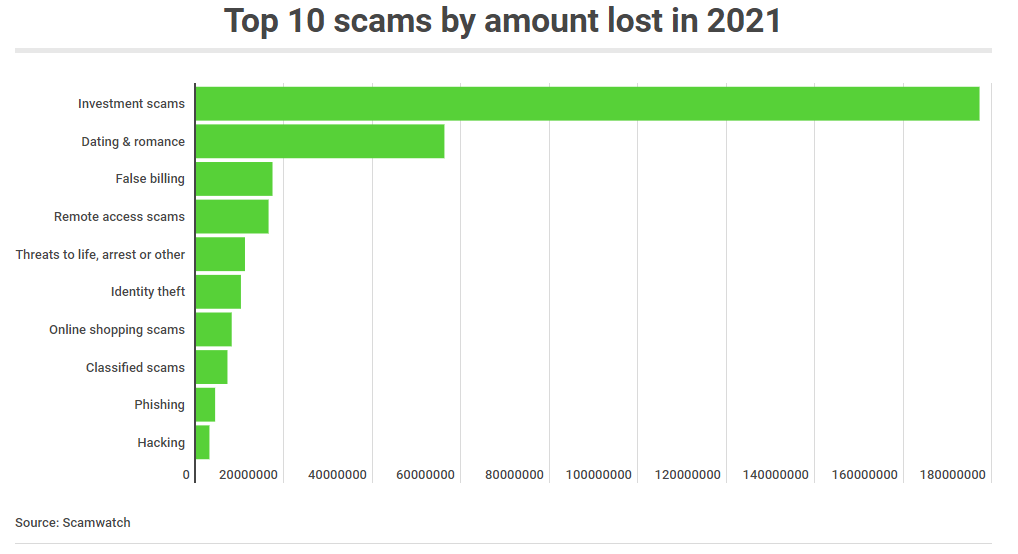
Source: https://www.savings.com.au/news/scamwatch-2021
The risk of card-not-present transactions
When it comes to card fraud, however, card not present (CNP) transactions continue to dominate, making up 87% of total transactions. In 2019, AusPayNet launched the CNP Fraud Mitigation Framework to address and control this type of fraud.
Usually CNP fraud involves breaches by third parties, through hacking of IT systems of a retailer or other company. Stolen card details can then be stored by criminals and used well after the breach. Card on file transactions – where a customer keeps their card on file with a merchant they use regularly – are also becoming a preferred target of cybercriminals.
The good news about card fraud
Global fraud losses for card issuers, merchants and acquirers of card transactions from merchants and ATMs are large, totalling almost US$28 billion in 2018 – a huge increase from the US$7.6 billion lost back in 2010.[1]
Having said this though, in the past couple of years, the number of cases of payment fraud globally has been declining. This success has come through coordinated action within the payments industry, through measures including:
- a widespread roll out of chip and PIN (or chip and signature in the US) for card transactions at a physical point of sale (POS)
- the use of strong two-factor authentication for ‘card not present’ payments, as mandated in several countries
- improvements in fraud mitigation software, including the application of machine learning and artificial intelligence, and
- the roll out of tokenisation to protect card information held on file in databases and in mobile handsets.
The future of scams
Globally, the COVID-19 pandemic has seen a spike in scams seeking to exploit fears about the virus, which include targeting government payments and superannuation withdrawals. In Australia, just before the pandemic broke out in early 2020, there was also a spike in scam activity related to bushfire donations.
In response, governments and financial institutions are taking responsibility to educate themselves, consumers and businesses about the types of scams out there to help others avoid being exploited. They’re also doing more to identify and track account takeovers, shutting down “fake named” and “mule” accounts that scammers use to receive payments.
Predictions on fraud and scams are almost impossible to make, as criminals are always changing their methods and targets, partly to circumvent government efforts to address fraudulent activity. However, by having an action plan of “education, awareness and tracking”, governments, banks, consumers and businesses can take control to prevent themselves from being another scam statistic.
Looking ahead
As the world of payments continues to make strides forward, Australian consumers are likely to be at the forefront of the next evolution. At Indue, we help businesses adapt and meet the changing expectations of consumers, by delivering innovative, compliant and secure payment systems.
To learn more about the trends shaping the payments landscape and what it means for your business, contact us today
[1] Nilson Report, The Nilson Report Issue 1164, November 2019.

What Banks Can Learn from the Fintech Playbook
The competitive playing field for banks is evolving quickly, introducing agile new competitors and challenging traditional formulas for success. Customers, not products or business lines, are the centre point of strategies and business models today. The ability to leverage large volumes of data and new technologies to understand customers’ journeys and deliver personalised offers and experiences is now considered critical to driving loyalty, engagement and, ultimately, growth.
Backed by insights from 8000 global customers and 140 bank C-level executives, the World Retail Banking Report 2022 discusses how banks can seamlessly embed themselves in the customers’ digital journeys to enhance loyalty and drive growth by leveraging data and AI/ML technologies.
Have a look at the new World Retail Banking Report 2022
Source: Capgemini 2022

Real-Time Payments Are Reshaping Economies – New Report
Australia’s New Payments Platform (NPP), now available to more than 75 million account holders, has experienced steady growth since its 2018 launch.
But with NPP now expanding its use cases with the launch of new overlay services, such as the PayTo service, real-time volume is expected to gradually increase, recording a CAGR of 19.9% from 2021-2026.
How can banks and financial institutions throughout Australia prepare for and benefit from this growth?
Have a look at the new 2022 Prime Time for Real-Time global payments report for a comprehensive look at Australia’s real-time landscape.
The ACI Worldwide report shares 53 global real-time markets to show the trends, technologies and initiatives driving real-time success around the world.
The report includes:
- Economic impact analysis for 30 countries
- The increasing necessity of cloud and payment hubs
- Regional and local fraud management essentials
Source: ACI Worldwide 2022

Mutuals are leading the charge in Open Banking
8 out of the 10 fastest Data Holders are customer owned banks
In Feb Frollow published their report on Open Banking API performance, comparing the speed and reliability of Data Holder APIs. The report shows that when providing transactional data, 8 out of the 10 fastest Data Holder brands are mutuals.
Though, the fastest Data Holder is not a mutual: Neobank 86:400 was fastest in February, just as they were the previous 5 months.
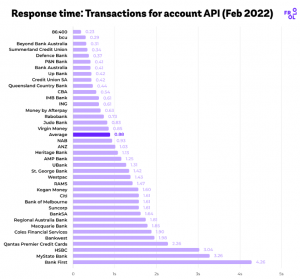
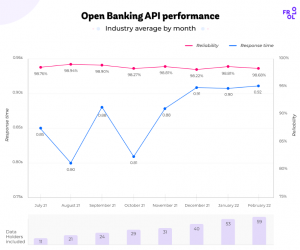
Mutuals aren’t just leading the way as Data Holders, some of them are establishing themselves as first movers in the use of Open Banking data too.
In February three customer owned banks became ‘Active’ on the CDR Registry as Data Recipients. P&N Bank, bcu and Beyond Bank all activated their connections using the Frollo Open Banking platform, as one of the final steps before launching their Open Banking powered financial wellbeing apps.
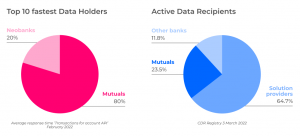
Tonina Iannicelli (Senior Manager, Digital, Beyond Bank) knows how critical it is to leverage technology for the benefit of their customers. “Open Banking provides us the opportunity to work for and with our customers by doing the heavy lifting on behalf of our customers, collecting their financial data from various institutions to help manage their finances – all in one place.
This is just the start, and we are excited to see how else we can work with our customers to get them decisions quicker, offer services that they value, and continue to nurture our relationship with them”.
P&N Group General Manager Technology Transformation, Erik Fenna, said unlike the listed banks, customer-owned banks such as the Group’s retail brands P&N Bank and bcu have a laser focus on customers rather than third-party shareholders, meaning the customer is at the heart of everything they do.
“We are focused on making banking easier for our customers by putting more control of their overall financial wellbeing and day to day banking in their hands through Open Banking,” Mr Fenna said.
“By offering customer-centric technology that solves key financial pain points, such as money management and the home loan application process, not only will we make it easy to bank with us, importantly we will also make it easy for our customers to get ahead.”
Simon Docherty (Chief Customer Officer, Frollo) isn’t surprised to see mutuals leading the way. He explains: “Open Banking offers the biggest opportunity for customer centric businesses, as it can unlock better customer experiences, as well as more personalised products and services.
Their focus on delivering value for customers has made Open Banking the perfect tool for mutuals to deliver on their promise, by providing financial wellbeing tools, improved access to credit and better deals on their finances.
We’re excited to help those early adopters in the mutual bank sector use Open Banking to deliver better customer outcomes.”
Source: Frollo March, 2022.

Cashless society looms: Australians tipped to move away from cash by 2025
Australians are ditching cash at the fastest rate in history as contactless payments and the boom of buy-now-pay-later methods threaten to radically reduce the use of physical money. The annual Global Payments Report predicts that in Australia, cash will account for only two per cent of value from all point-of-sale transactions by 2025. This doesn’t mean cash will only be used for two per cent of all transactions, but rather that the value of these cash purchases will pale in comparison to those made with other methods such as credit or debit cards.
The report also predicted that within two years, digital wallets (such as apps that allow customers to use their smartphone or smart device to pay) will overtake credit and debit cards to become the leading e-commerce payment method by 2024. Currently debit cards are most used payment method at the registers comprising 41 per cent of all transactions, followed by credit cards (35 per cent), digital wallets (11 per cent), cash (seven per cent) and buy-now-pay-later (four per cent). In Australia buy-now-pay-later services such as Afterpay are predicted to account for 14 per cent of all e-commerce purchases by 2025, up from its current 11 per cent. The steep decline in the use of cash comes as many Australians change their purchasing behaviour during the COVID-19 pandemic to avoid contact where possible. Analysis by the Australian Banking Association found that ATM withdrawals – perhaps the largest indicator of general cash use – decreased by 20 per cent in the year to August 2021. “COVID-19 accelerated trends in our society and changed the way we live our lives. Working from home will forever be more prominent within the workforce, we have steered away from using cash and as a result are seeing an increase in card and technology payments and the existing trend of doing banking online instead of in a branch has only continued,” said ABA chief executive Anna Bligh. “As we have seen more people go away from using branches, it’s no surprise to see banks invest in areas where customers prefer to bank, such as in their online platforms and apps. “Interestingly, one major Australian bank reported digital banking is now the primary channel for its customers aged between 16 and 69, with digital interactions up 10 per cent since 2019. This same bank reported a steady branch usage drop of 32 per cent since January 2019.” ABA data shows that one in ten Australians regularly leave home without taking their wallet, and more than one in three Australians use digital wallets on their smartphones at least weekly. As cash use declines, so too does the use of physical bank branches.
Source: 9news.com.au, Stuart Marsh, Senior Producer, 10/3/22

Auswide Bank appoints Indue as exclusive partner to deliver payments transformation
We are pleased to announce that Auswide Bank has selected Indue as their exclusive full-service payments partner.
An ASX-listed regional bank based in Bundaberg with 17 branches across Queensland, Auswide Bank has operated for more than 55 years with assets under management of more than $4 billion.
Auswide Bank has an Australia-wide lending presence supported through branches, business bankers, accredited mortgage brokers and online, and offers an extensive range of finance and banking products to help their customers realise their financial dreams.
Auswide Bank Managing Director Martin Barrett said the partnership announced today strengthens an already proven relationship, with Indue to provide end-to-end payment services that will support the bank’s digital transformation, provide a state-of-the-art customer experience and business outcomes.
“Auswide Bank has worked with Indue for 6 years and the extension of agreement is another exciting step in our relationship,” Mr Barrett said.
“Both organisations are focused on placing our customers at the centre of everything we do, and we couldn’t be more pleased to be partnering with Indue to help us continue to deliver outstanding service to our communities and customers across Australia.
“Indue will provide a full suite of end-to-end payment solutions, which is a key component of transforming our business with technology and providing digital payment choices for our customers, improving their experience and delivering stronger business outcomes.”
Indue CEO Derek Weatherley said Auswide Bank’s strategy was strongly supported by Indue’s strategy and Indue was very well placed to serve Auswide Bank in their mission to serve their customers.
“At Indue we have a deep commitment to our partners, and our ‘customer first’ approach is directly aligned to Auswide Bank’s focus on their customers and community,” Mr Weatherley said.
“This new partnership will provide Auswide Bank customers with access to a comprehensive suite of end-to-end payment services delivered through Indue’s ongoing digital transformation program.
“Indue reinvests our profits into research and development to ensure our customers are continuously able to deliver relevant payment solutions to their customers. Auswide Bank and its stakeholders will be a major beneficiary of these investments as we continue to develop and deliver these innovative payment solutions.
“Auswide Bank will benefit by tapping into Indue’s evolving suite of digital payments that bring real time, data rich, frictionless payments to customer’s anywhere, anytime, with the peace of mind brought by our market leading real time fraud and AML capabilities.
“The payment services suite provided to Auswide Bank will include Direct Entry, BPAY, NPP, Financial Crimes, Anti-money Laundering, Card Services, High Value Payments and PEXA. Auswide Bank plan to launch NPP and NPP Fraud as a matter of priority.”
Mr Weatherley said the teams were looking forward to working together for a swift transition over coming months.
-ENDS-
For more information please contact:
Indue Head of Marketing & Communications – Clare Mitchell
cmitchell@indue.com.au – 0429 889 556
Auswide Bank Head of Marketing – Karyn Kelly
kkelly@auswidebank.com.au – 0414 011695

Indue becomes Tier 1 BECS member
Payments solutions provider Indue today announced it has become a Tier 1 Participant Member of the Bulk Electronic Clearing System (BECS), the low-cost work horse of the Australian payments system, which processes more than $14 trillion Direct Entry transactions annually.
Indue Chief Executive Officer Derek Weatherley said he was pleased that Indue had transitioned seamlessly from a Tier 2 to a Tier 1 participant in BECS. This was a major industry change and went ahead without disruption to our clients, their customers or other industry participants. This change is also significant because organisations seeking a Tier 1 sponsor now have broader choice in a traditionally limited market.
“This was a seamless transition for our valued clients, and importantly this move future proofs our Direct Entry offering against decisions made by banks or other third parties. We now control our own destiny in respect of Direct Entry service continuity for the future, as we no longer rely on other parties to assure service continuity. This is important to our clients as they navigate a shifting state of play in account to account payments in the coming years.
“This change rounds out our position as a Tier 1 provider of all account-to account payment systems, complementing our New Payments Platform offering and our real time account to account Orion fraud solution” Mr Weatherley said.
Indue currently provides Direct Entry services to a large and diverse customer base including Mutual Banks, Credit Unions, Banks, Mortgage Originators, Gift and Prepaid Solution Providers, Government Agencies, ATM Operators, FinTechs and Church Funds, processing over AUD$75 billion annually.
ENDS
For more information please contact:
Clare Mitchell – Head of Marketing & Communications
cmitchell@indue.com.au

The Mutual Bank appoints Indue as their principal payment partner
Today we are delighted to confirm that The Mutual Bank has chosen Indue as their principal payments partner.
The Mutual Bank, a $1 billion mutual bank based in the Hunter region of NSW, has been serving the people of the Hunter since 1888. It offers a full range of financial products and services, including home loans, transaction and savings accounts, digital banking and payments services, credit cards, business banking and insurance.
The partnership will provide The Mutual Bank and its members with access to Indue’s comprehensive suite of end-to-end payment services delivered through Indue’s ongoing digital transformation program, which has focused on major investments key to the mutual sector.
The Mutual Bank CEO Geoff Seccombe said ‘the relationship formed today strengthens an already proven partnership that started with a digital payment solution and is now moving to end to end payment services’.
Indue CEO Derek Weatherley said ‘The strategic partnership with The Mutual Bank reflects the relevance of our ‘member first’ ethos as well as the strength of our product roadmap for the mutual industry, which has been delivered through a $50m program focussed on the future of customer experience in payments. Indue’s evolving suite of digital payments bring real time, data rich, frictionless payments to mutual members anywhere, anytime, with the peace of mind brought by our market leading real time fraud and AML capabilities’.
Indue CEO Derek Weatherley said the seven-year strategic partnership was a pleasing evolution of a relationship that formed when Indue worked with The Mutual Bank to assist them to be the first locally based issuer of Apple Pay in their region.
“Indue already provides Mobile Payments services to The Mutual Bank, and as part of that existing relationship we developed a trusted partnership based on mutual respect. It became clear as we worked together that there was tight alignment between our values, our product offering, and their payments needs. It became evident that Indue was an ideal partner to support The Mutual Bank in their mission to serve the Hunter community.
“The payment services suite provided to The Mutual Bank by Indue will now be significantly expanded to include Direct Entry, BPAY, NPP, Financial Crimes, Anti-money laundering, Card Services, High Value Payments, PEXA and an expansion of their Digital Payments offering, which will create efficiencies and deliver resilient and secure payments to their members.”
Mr Weatherley said the teams were very much looking forward to working together through a speedy transition and to build on our successful partnership to date with The Mutual Bank. Our servicing model takes the pressure off The Mutual Bank to take the lead on payments as we do this for them, giving them the space to focus on what matters to them, which is serving their community.
“We see significant cultural alignment with both organisations being ‘member first’ – focused on serving their customers and communities – and we couldn’t be more pleased to be partnering with The Mutual Bank to help them continue to deliver outstanding service to the community of the Hunter.”
The Mutual Bank CEO Geoff Seccombe ‘Indue earnt our trust and respect by delivering on their promise and their customer first focus was directly aligned to our focus on our members and community’.
See press release
ENDS
For more information please contact:
Clare Mitchell – Head of Marketing & Communications
cmitchell@indue.com.au

Credit cards still stagnant as the humble debit card’s popularity improves
Credit card use is still below its pre-pandemic levels, while debit cards are seeing somewhat of a resurgence in 2021.
The latest Reserve Bank (RBA) credit and debit card data for March 2021 reflects how these cards have been used in the 12 months since the pandemic truly impacted Australians’ way of life.
According to the most recent data, the number of active accounts fell slightly from February to March to still be 7.25% below the March 2020 level (14.48 million accounts).
Debit cards meanwhile are 3.5% above pre-pandemic account numbers (35.28 million), with a minor monthly increase in the number of cards on issue.
That doesn’t mean people aren’t using their credit cards – far from it.
The number of month-on-month credit card purchases increased by 3.25% (more than 268 million), and the value of these purchases rose by almost 5.5%.
Since March 2020, the number of credit card purchases is up by more than 9%.
But these figures are nothing compared to the debit card.
Over the past 12 months, debit cards have seen a more than 20% rise in the number of purchases to 796 million in a month, and the value of these purchases has increased by 19.3% to roughly $36.3 billion.
Credit card use plunged during the COVID-19 pandemic, particularly among younger Australians, and many got busy wiping off their credit card debt during lockdowns, with some help from stimulus payments, super withdrawals and increased savings.
So while credit cards are still being used, it would seem they’re being used more conservatively:
- Balances accruing interest (i.e. debt) fell slightly over the month, and is now 26.3% below its pre-pandemic levels
- Total balances on credit cards rose by 0.6% in March but are still down more than 16% over 12 months
- The average balance accruing interest is about $1,550 dollars ($2,908 for total balances)
- And even the number and value of cash advances (which tend to charge high interest rates) are down 7.5% and 15.7% respectively
The aversion to the higher interest charges on credit cards seems to be one reason for their decline compared to debit cards.
Payments expert Grant Halverson told Savings.com.au last month that “out of date” product is another reason.
“Credit card debit, which is now 1.3% of all consumer debt, is fading badly because the major banks … are still hooked on airline point programs – which only attract transactors not revolvers – while they push mortgages as the major debt vehicle – which is working,” he said.
“Debit has been growing double digits since 2009 – that’s picking up consumer spend and debt is now split across a range of lending.”
Travel Spending is Back for Credit Card Users
Points chasers and travel enthusiasts seem to have reacted positively to news of the New Zealand travel bubble and interstate travel incentives, according to Citi’s April Credit Card Index.
Credit card spending in April was 35% higher compared to April last year when spending was at its lowest point in years due to the pandemic.
Much of this growth has been driven by increased travel spending, particularly when it comes to rewards points redemption, which was halted for most of last year.
Head of Credit Cards and Loans at Citi, Choong Yu Lum, said rewards redemption on Citi cards rose 6% in April.
“Resurging after a year’s lull are travel and airline categories: general travel and experience redemption was up 10%, and Velocity points up 14%,” Mr Lum said.
“It is another strong indication that our Trans-Tasman bubble is working when it comes to stimulating spend in tourism.
“Additionally, we expect that increased domestic travel has contributed to this spike.
“The announcement of the New Zealand travel bubble early in the month has propelled airline spend…and (we) anticipate this will increase over the next few months as more families are reunited with their loved ones from across the Tasman.”
Article Source: savings.com.au

Study pinpoints two key areas that banks can improve on
Australian banks are not delivering appropriate omnichannel customer service and struggle to keep up with changing approaches to customer loyalty, according to new research.
The study, conducted by software company Pegasystems and research group Omnipoll, found that poor omnichannel customer service results in more than half (54 per cent) of all customer interactions having at least one issue.
Customers’ top challenges included being forced to call or visit a branch after failing to complete an action online (36 per cent), waiting longer than expected for service in a branch or on the phone (28 per cent) and being transferred from one agent to another (25 per cent).
On the positive side, the study found signs of improved customer service from Australia’s banks over the past two years. The industry had an 86 per cent customer satisfaction average across Australia. This is more than energy/utilities providers (74 per cent), telecommunications (78 per cent) and general insurance (80 per cent).
According to the survey of 1,221 Australians aged over 18, banking customers say the number one driver of satisfaction is easy interaction with their bank.
It found that “digital” customers – those that travel cashless, regularly use online banking and prefer to pay with their phone – are the most satisfied with their banks and more likely to recommend them to other people, but they are also the least loyal.
Indeed, 49 per cent of “digitals” have considered switching banks in the past six months, compared to 36 per cent of “traditional”, the most loyal group, who are also the least satisfied and least likely to recommend their bank.
The researchers attribute this lack of satisfaction among “traditionals” to poor omnichannel service through the pandemic, particularly with branches closing.
The traditional segment – mainly comprising customers over 50 years old – also rated their banks poorly on proactively helping them with money management. Despite this, traditionals still show the most loyalty and longevity, with six in 10 traditionals having been with their bank for more than 15 years.
The researchers attribute the growing lack of loyalty in the digital segment to multiple reasons. Firstly, only 32 per cent of all customers feel their bank is good at rewarding loyalty, while only 38 per cent feel they are given the best possible prices or rates.
Digital customers are also much more likely to have products across multiple banks, which significantly reduces switching challenges. Therefore, if digital customers are unhappy with their current provider, switching is a much simpler process than it would be for traditional customers.
“While banks are doing well to achieve high customer satisfaction, there is work to be done in delivering seamless omnichannel customer journeys and providing proactive customer service,” says Jonathan Tanner, senior director, industry principal financial services and insurance APAC, at Pegasystems.
“Given the level of first-party data banks have on their customers, there are plenty of opportunities to enhance customer relationships and improve customer journeys by providing more personalised service.”
Tanner adds: “Traditionals, in particular, are looking for more personalised, proactive service. As banks continue to close branches, they will need to support traditional customers in transitioning to digital banking to ensure they don’t feel left behind.”
“As this research shows, loyalty is no longer an accurate indicator of customer satisfaction, especially for digital customers who are more often on the lookout for better deals and service and more willing to change providers. This means customer relationships and seamless customer journeys will be pivotal to banking providers’ long-term success.”
Article Source: rfigroup.com

AusPayNet reminds consumers and merchants to be vigilant online as latest card fraud figures released
Data released today by the industry self-regulatory body Australian Payments Network (AusPayNet) shows a 9.2% rise in fraud on payment card transactions in the 12 months to 30 June 2021 (FY21) alongside an increase in online spending during COVID-19 lockdowns.
With total spending on cards rising 5.4% to $847.3 billion during the same period, the fraud rate in FY21 was 57.8 cents per $1,000 spent, up from 55.8 cents per $1,000 in FY20, but well below the rate of 73.8 cents in FY18.
Card-not-present (CNP) fraud – mainly affecting online transactions – rose 12.3% to $442.0 million in FY21 as e-commerce surged during successive periods of COVID-19 lockdowns in various parts of the country. In FY21, CNP fraud accounted for 90% of all fraud on Australian cards.
Lost-and-stolen card fraud dropped 9.2% to $28.0 million, and counterfeit/skimming fraud fell 37.3% to $8.9 million, an acceleration of a long-term downward trend for this type of fraud.
AusPayNet CEO Andy White said rising e-commerce volumes underscored the need for industry coordination to target the activities of fraudsters.
“Online transactions continue to grow strongly and inevitably this attracts the attention of organised fraud groups,” Mr White said.
“Industry-wide efforts to mitigate CNP fraud will remain critical, but we all need to remain vigilant when transacting online,” he said.
CNP fraud involves valid card details being stolen and used to make purchases or other payments without the card being present at the point of sale, usually online. Consumers are not liable for fraud losses on payment cards and will be refunded, as long as they take due care with their confidential data.
The end of FY21 coincided with the conclusion of the second full year of operation of the industry’s CNP Fraud Mitigation Framework. Under the Framework, merchants who consistently exceed agreed fraud threshold targets are required to introduce strong customer authentication. The Framework also encourages secure technologies such as real-time monitoring, machine learning and tokenisation.
“We expect to see the full benefit of the CNP framework as we emerge from the pandemic,” Mr White said.
Release of the latest payments fraud data comes soon after the inaugural meetings of AusPayNet’s Economic Crime Forum (ECF). As the successor to the Fraud in Banking Forum, the ECF brings together industry stakeholders to coordinate joint responses to economic crime including scams, fraud, financial crime, and banking-related cyber incidents.
“Alongside our focus on CNP fraud, last month we launched our scams strategy. Over the coming year we look forward to working with industry to reduce the impact of scams on vulnerable businesses and individuals,” Mr White added.
Consumers and merchants are reminded how they can be vigilant online in the lead up to the Christmas holiday season.
Steps consumers can take include:
- Only providing card details on secure and trusted websites – look for the locked padlock icon and be wary of offers that look too good to be true
- Treating unsolicited emails and text messages from people they don’t know with suspicion – don’t click on the link provided and don’t be tricked into divulging confidential data such as passwords
- Regularly checking statements and immediately reporting any unusual transactions to their financial institution
- Registering for, and using, their financial institution’s online fraud prevention solutions, whenever prompted
- Undertaking checks to ensure the online business with which they’re transacting is legitimate
- Always keeping PC security software up-to-date and doing full scans regularly.
Guidance for merchants:
- Use tools that help you authenticate your customers: a tool that supports risk-based authentication in the first instance, and strong customer authentication for transactions identified with a higher risk profile, is critical to reducing fraud.
- Invest in tokenisation: merchants holding sensitive account holder information can become targets for fraud. Tokenisation replaces this information with a unique digital identifier (a token).
- Regularly speak to your acquirer and gateway providers about what you can do to secure your business.

Top Five Banking Predictions for 2022
Top Five Banking Predictions for 2022
Keen to keep pace with the impact of recent global events and an accelerated digital shift, how are financial institutions, consumers and SMEs adapting their behaviours in coming months? RFI Global’s infographic explores our top predictions for 2022.






Indue Limited appoints new Chief Commercial Officer
MEDIA RELEASE
8th November 2021
LEADING payments and technology services company Indue Limited has announced Fred Perry as Chief Commercial Officer effective January 2022.
Mr Perry is set to drive the company’s commercial business with a focus on accelerating growth, product optimisation and driving competitive advantage for our clients in all their payments needs.
Indue Chief Executive, Derek Weatherley, said he was excited for Indue’s future under the commercial leadership of Mr Perry.
“We are thrilled to appoint Mr Perry as Chief Commercial Officer and are confident the business will thrive under his leadership given his past performance in driving significant change for organisations and his solid background in delivering results for the financial sector,” Mr Weatherley said.
Mr Perry has 24 years’ experience optimising client value in industries including business and wholesale banking, financial services and venture capital. He joins Indue from RACQ where he held the role of General Manager of Strategic Delivery and Enablement, leading the Transformation Office, and the role of RACQ Bank Chief Operations Officer where he built and fostered an environment of collaborative relationships, innovation, integrity and dedication to excellence.
Prior to this Mr Perry worked in senior roles with ME Bank, Angus Polar, Centrepoint Alliance Ltd and spent more than 11 years at National Australia Bank in the roles of Head of Sales Growth and
Optimisation, Head of Transformation and Head of Analytics.
He holds a Master of Business Administration from University of Newcastle, a Post Graduate Diploma of Finance and a Diploma of Marketing Management.

Indue gains ISO certification for information security management
Payment solutions provider Indue today announced it had received an International Organization for Standardisation (ISO) 270001:2013 certification for information security management — one of the
most widely recognised and internationally accepted standards for the security of assets.
The ISO certification features requirements on how to implement, monitor, maintain and continually improve an Information Security Management System (ISMS) in accordance with the standard,
including preserving the confidentiality, integrity and availability of information to ensure risks are adequately managed.
Indue Chief Executive Officer Derek Weatherley said the accreditation reinforces the organisation’s proven security processes and credentials against the global standard.
“This is a significant achievement for Indue, which specialises in helping customers gain competitive advantage through innovative payment solutions,” Mr Weatherley said.
“The certification strengthens our approach to information security, and demonstrates to our customers and partners that we maintain the highest levels of data security.
“We are trusted by our customers to store and process their most valuable data, so this certification provides assurance that we have all the necessary controls in place to ensure this important information is protected.
“Particularly in the context of COVID-19 where we’ve seen an increase in the risk of data security breaches alongside a surge in online transactions, we’ve continued to demonstrate our commitment to secure payment products, supported by rigorous compliance, program oversight and our transaction monitoring and protection system, Orion Financial Crimes.”
Data security has never been more important, with COVID-19 restrictions forcing many businesses to move to remote data almost overnight, significantly increasing the risk of data breaches.
By implementing and following the necessary steps to comply with the ISO 27001:2013 standard, organisations can identify, control and eliminate security risks, ultimately certifying the security practices adopted within the organisation.
ISO is an independent, non-governmental, international organisation that develops standards to ensure the quality, safety and efficiency of products, services and systems.

Indue appoints accomplished business leaders to the Board
Indue appoints accomplished business leaders to the Board
Leading banking payments, financial crime management and technology services company Indue
Limited has today announced the appointment of accomplished business leaders Susan Rix AM and
Abigail Cheadle as new independent non-executive Directors to its Board.
Their appointments follow the retirement of current Board members Robin Burns and Sally Collier.
Ms Rix and Ms Cheadle join the Board in January 2021.
Ms Rix is a tax and advisory partner with BDO in Brisbane and has had a distinguished career in
corporate advisory and non-executive roles across numerous sectors spanning more than 35 years.
Her current Board roles include Chair of Harcourts Group, Queensland Performing Arts Trust (Chair of
Risk Management and Audit Committee) and Chair of AEIOU Foundation. Ms Rix is also a
Queensland University of Technology Council Member and Business School Adjunct Professor. Her
previous Board roles have included Queensland Rail (Chair of the Audit and Risk Committee), Port of
Brisbane Corporation and Mater Misericordiae Ltd.
Her experience includes the various aspects of commercial, financial and taxation matters.
Ms Cheadle is an accomplished corporate advisor, executive and non-executive Director with
experience growing finance, services and technology companies.
She spent 17 years of her 27 year career in Asia where she held executive positions with Kroll (head
of investigations for Asia), KordaMentha (partner in charge of Forensics), Deloitte (head of Singapore
Forensic), and Ernst & Young(Forensic Accounting service line leader for Asia Pacific). She is
presently non-executive Director and Chair of Audit and Risk Committee for two ASX listed
companies, namely: Isentia Group Ltd and Shriro Holdings Ltd. Ms Cheadle was previously a non-
executive Director and Chair of the Audit, Risk and Compliance Committee for two other ASX listed
companies, namely: QANTM Intellectual Property Ltd and SurfStitch Group Ltd.
Indue Chair Frank Gullone welcomed Ms Cheadle and Ms Rix to the Board, and said he looked
forward to their contribution and the opportunity to leverage their depth of corporate experience.
“Together, they bring to the Board outstanding and relevant experience, and deep expertise in
business strategy, transformation, risk and governance.
“Susan and Abigail’s diverse backgrounds and skills will further strengthen the Indue Board and
complement the expertise of the existing Directors in the strategic development of the company.

Indue appoints new Independent Director
Indue appoints new Independent Director
Leading payments, financial crime management and technology services company Indue Limited has announced Tim Oldham will join the Board as a non-executive Director on 27 September 2021
Mr Oldham is a highly credentialled Australian non-executive Director and currently serves on the Boards of Bank of China Australia and Waves of Wellness Foundation He is a retained advisor to Barwon Investment Partners, chairing its Risk and Compliance Committee. He has previously been a non-executive Director of Vietnam International Bank
As a former senior banking executive, he has deep experience across credit, operational, market, compliance, liquidity and business risk, including risk governance leadership.
Over the past 25 years, Mr Oldham has had a strong focus on risk management in financial services, both as a practitioner and as a consultant.
Most recently he was Chief Risk Officer for CBA’s International Financial Services division based in Hong Kong with oversight of banking and insurance businesses in China, Vietnam, South Africa, and Indonesia.
Prior to that he was lead partner for Deloitte Australia’s financial services risk advisory practice for four years, and was Head of Business Risk and Credit Strategy for Westpac’s Institutional Bank for three years. Earlier he was with Macquarie Group for 16 years, acting as an advisor on risk to Macquarie’s corporate and government clients, and as a Division Director in Macquarie’s Risk Management Group.
Commenting on Mr Oldham’s appointment, Indue Chairman Mr Frank Gullone said: “Tim will bring a wealth of banking experience gained in Australia and overseas. His specific background in risk management will add further depth to Indue’s solid base in the area.”
ENDS
For more information please contact:
Clare Mitchell, Senior Marketing Manager, Indue Limited E: cmitchell@indue.com.au

A proliferation of payment options has reduced our reliance on cash.
A proliferation of payment options has reduced our reliance on cash.
The million dollar question is: are we ever going back? A proliferation of digital payment methods and the Covid-19 pandemic has prompted a radical change in the way consumers use and keep cash in the past year.
According to research by the Australian Competition and Consumer Commission (ACCC), for the year ending June 2020, the number of cash withdrawals dropped by 19 per cent to 625.6 million compared to the prior year. This follows declines that have been occurring since 2013, with ATM withdrawals dropping by 30 per cent in the past five years.
There are more than 27,000 ATMs in Australia, which performed more than 423 million transactions in the year ending October 2020. Reserve Bank of Australia figures reveal we collectively withdrew $110.3 billion.
It might sound substantial, but the fact is that cash withdrawals from ATMs have been in decline since 2012, leading to the Big 4 banks to reduce the number of ATMs across the country.
The displacement of cash as a method of payment has been occurring ever since the first payment was made by a card back in the 1974. Today cash usage is down across all age, household income and transaction size categories.
1974. Today cash usage is down across all age, household income and transaction size categories.
Analysis by the Reserve Bank of Australia (RBA) shows that the amassing of $50 and $100 notes reached ‘unprecedented’ levels during Covid-19 lockdowns last year. This occurred at the same time as cash being used much less for everyday transactions, with suggestions early on that the virus could live on bank notes for many days.
Much of the recent fall has been due to the impact of Covid-19, with the number of cash withdrawals between April to June 2020 falling 46.7 per cent to 98.3 million from 184.6 million over the same period in 2019.
Right now, there are about $90 billion notes on issue, and $4 billion coins circulating in the economy. But the cost to the economy of using cash is a function of the cost of producing notes and coins, the amount of cash in circulation, and how often it is used.
The reasons for using cash differs significantly between low and high users. For low cash users, merchants’ lack of card acceptance drives them to use cash; whereas heavy cash users find it helps them to budget to use cash – because you can only use what you carry.
A big driver here towards cards in favour of cash, of course, is the acceleration of online shopping post-pandemic, which in turn has had major ramifications on banking infrastructure.
Ultimately, this helps to make the digital wallet ecosystem more attractive to merchants and the shift to cashless more likely to be permanent.

Retail merchants of all sizes across all regions of the world adapted to the pandemic by moving more of their sales online
Will the abrupt, pandemic-induced e-commerce shift reshape retail’s future?
Retail merchants of all sizes across all regions of the world adapted to the pandemic by moving more of their sales online.
Last year as millions sheltered at home, e-commerce proved crucial to keeping retail sales flowing. Now, as outbreaks begin to subside and mobility returns, e-commerce’s share of total sales has fallen from its 2020 peak, raising questions about the lasting impact of the abrupt shift to e-commerce.
Transaction data offer two reasons for optimism that the accelerated uptake in online selling will persist even after the pandemic. First, the digital revolution now extends beyond large digital goods merchants to include more small and medium-sized businesses (SMBs). Second, SMBs that enhanced their digital offerings in 2020 now have a distinct advantage. Expanded sales channels have led to enlarged customer bases and provided a firm basis for the continued development of digital capabilities.
Online sales should settle on a new (higher) normal
Evidence from Australia and Singapore indicates that e-commerce gains are sustained even after outbreaks are brought under control. In both countries, local transmission of the novel coronavirus largely ended late last year and consumers’ visits to retail outlets soon recovered. Greater mobility helped brick-and-mortar retail sales to rebound, yet online sales as a share of the total remain 3 to 5 percentage points higher than prior to the pandemic.
Achieving a similar expansion in online sales prior to the pandemic would have taken between four to five years based on previous adoption rates in these countries. Years of development were compressed into a single year, leaving consumers more familiar with buying online and merchants with new sales channels.
2020: The year retail merchants of all sizes went digital
According to our analysis of VisaNet data, retail merchants of all sizes across all regions of the world adapted to the lock-downs and pandemic by moving more of their sales online.¹ While the shift was more pronounced for large businesses, SMBs were not far behind. In Canada, for example, while one in three large businesses pivoted to expand their online sales, one in four small businesses did the same. Adaptations to survive the pandemic and investments made last year have opened up new channels for merchants of all sizes to reach consumers in more ways.
Interestingly, transaction data further shows that half of the increase in SMB online sales last year came from businesses that had no or minimal online business before COVID-19. Prior to the pandemic, three out of every five small Visa SMB retailers had no online sales in 2019. Responding to the challenges from the pandemic, 7 percent of these firms made their first online sales in 2020. Though traditional brick-and-mortar retail remains the main channel for sales among small businesses, the pandemic has accelerated the pace of adoption of digital channels.
These first-time participants showed strong returns on the investment, with their sales as much as 20-30 percentage points higher than their peers who did not shift to digital selling. Moreover, digitally-enabled SMBs emerged from the pandemic more resilient to lockdowns. Of these newly-online merchants, 86 percent were able to stay open in 2020 with limited closures, compared to just 70 percent of their peers with offline-only sales who managed to avoid extended periods of inactivity during the year. The secret to their success was in the wider markets these newly digitally-enabled firms enjoyed—markets that were opened to them through e-commerce and electronic payments.
Through digital channels, SMBs reached a larger pool of customers
Digitally-enabled merchants were able to drive stronger sales as the shift online expanded their customer base.² Prior to the pandemic, online sales accounted for less than 20 percent of all sales for the majority of retail SMBs in countries around the world. This limited their reach to customers within a set geographic radius around their physical stores. Moving online opened up markets that previously may have been unreachable before the pandemic.
Within the subset of SMBs that had at most 20 percent of their sales online in 2019, those that increased their online throughput in 2020 experienced a 14 percent increase in customers compared to a 3 percent decline for those that stayed offline, according to the VisaNet analysis. In fact, the growth advantage that small businesses with expanded digital channels have over their peers can be almost entirely attributed to their relative success in attracting new customers. In the United States in particular, SMBs that did not increase their online presence lost about 4 percent of their customers, whereas those that did enjoyed a 1 percent expansion.
This shift to online also coincides with a shift in consumer preferences in favor of online shopping. A recent Cybersource study reported³ that mixed-channel retailers received the highest customer satisfaction scores, compared to merchants that had either exclusively-online or brick-and-mortar sales channels. The COVID year has already left a lasting imprint on small businesses. Vaccine rollout delays or broader spread of new COVID-19 variants would likely only reinforce and accentuate the digital transformation and deep technological shift in retail that was precipitated by the pandemic.
More highlights:
- A few years’ worth of e-commerce gains were compressed in a single year
- Retail’s digital transformation extends to small and medium-sized businesses
- Adding an online channel helped businesses reach a larger set of customers
- COVID-19’s economic Impact Index
Read the complete March Global Economic Insights report
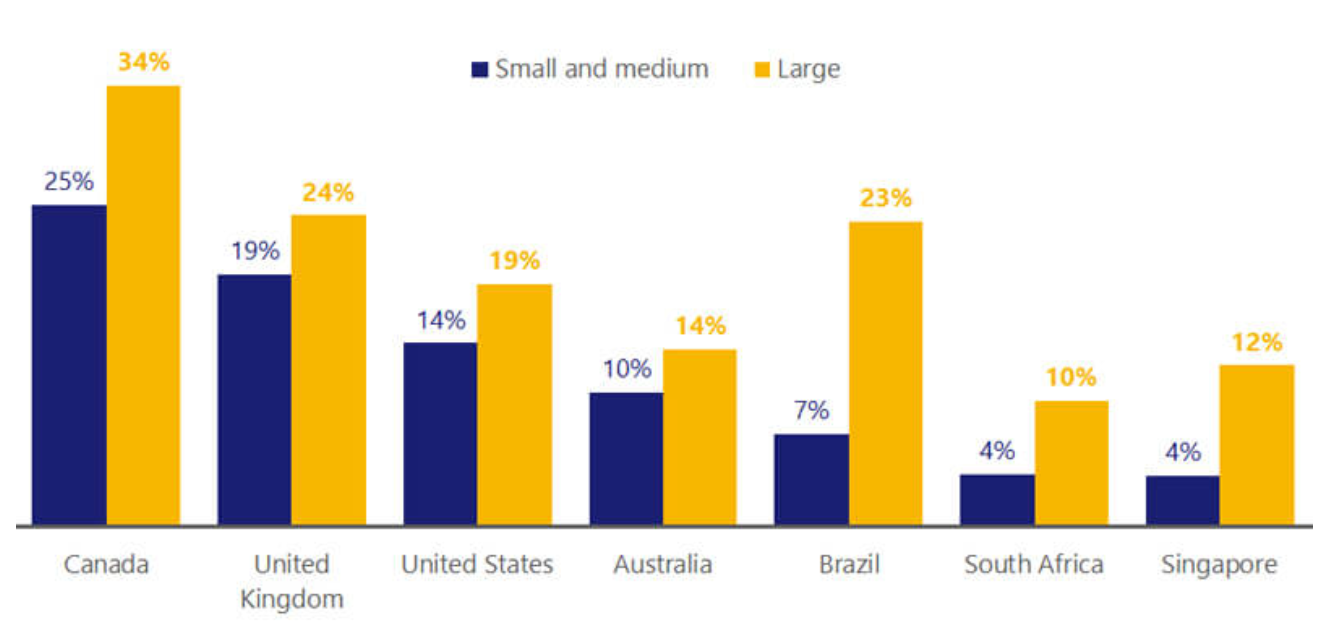
Footnotes:
- ¹ Analysis is based on a sample of about 3 million Visa merchants located in 25 markets around the world. The sample includes the subset of Visa merchants in the retail trade category (excluding gas stations and food service establishments) that were minimally active in both 2019 and 2020. A merchant’s segment is defined based on the merchant category code where it registered the largest purchase volume in 2019. Small- and medium-sized businesses are defined as having total purchase volume in 2019 that was not within the top quartile of all Visa merchants within the same market and merchant category. Online transactions in this document are card-not-present transactions.
- ² A merchant’s client base is measured by the unique count of Visa cards that made domestic purchases at that merchant during the calendar year.
- ³ Cybersource 2020 Global Shopping Index Report.
Source: Visa Global Perspectives, April 9 2021.

Consolidation looming for lenders, says Fiserv boss Kees Kwakernaak
Consolidation looming for lenders, says Fiserv boss Kees Kwakernaak
Story by Joyce Moullakis
Fiserv’s local boss Kees Kwakernaak expects another wave of consolidation in the banking sector, as evolving technology triggers more change and scale and customer experience becomes increasingly important.
Mr Kwakernaak, head of Nasdaq-listed Fiserv’s Australian and New Zealand operations, sees further banking rationalisation and marked changes across the payments sector over the next four years.
“You get sort of these plateaus then you see another (consolidation) wave again, and that’s happening in a lot of countries and there is no doubt we are going to see that here,” he said.
Mr Kwakernaak added that it was unlikely Australia would still have about 65 smaller banks in the future, and highlighted the experience in the US where the number of community banks had halved in a few years.
Fiserv — which has a market capitalisation of $US82.9bn ($108.7bn) — is a global payments and financial services technology group that processes about one in eight transactions in Australia.
Already this year, Bank of Queensland has agreed to buy ME Bank for $1.325bn and renewed debate has surfaced over whether Suncorp will sell its bank.
At the smaller end of the sector, in January Teachers Mutual Bank signed a memorandum of understanding with authorised deposit-taking institution Pulse Credit Union for a merger.
Mr Kwakernaak said he didn’t expect further rationalisation in the Australian market to deter new non-bank players from entering Australia, particularly those that “play close” to the customer.
He noted banks were trying to keep a lid on costs but also working out how to invest in improving interactions with customers.
“It will be hard for many of them to continue to invest in the legacy (systems), but then also in the new customer experience,” Mr Kwakernaak added.
He believes consumer habits and technology uptake during COVID-19 has underpinned fundamental and structural change in the payments market, with customer experience a key battleground.
“Some people say that COVID-19 has fast-tracked everything by three years … I’m not sure that is true.
“We’ve all just seen some change that we would not have expected and in particular around the mix,” Mr Kwakernaak said.
He highlighted the unexpected take-up of QR codes and consumers having many more options in the way they shopped and paid.
“I would not have thought that QR would be a real option in Australia 14 or 15 months ago,” he said.
“Even though it works well in Asia and makes a lot of sense, I think we were wrong on that because the convenience of the QR code is clearly there and again it’s a habit.”
Mr Kwakernaak also pointed to the NSW government’s vouchers given to households to stimulate dining and recreation spending, which were administered by a phone app or website, as highlighting how payments were changing.
He sees technology being used by banks to facilitate “hyperpersonalisation” for customers and more collaboration between players. “Open banking will also allow the banks a lot more to collaborate,” Mr Kwakernaak said.
“I actually think we are going to move a little bit away from that disruption stage to more collaboration.
“Technology is going to make that easier.”
In three to five years, he expects more real-time payments will occur between businesses and in business-to-customer segments, rather than staying focused on person-to-person transactions.
Fiserv delivered the centralised infrastructure that supports the real-time New Payments Platform locally, in partnership with SWIFT.
Mr Kwakernaak’s comments come against the backdrop of separate reviews of the payments sector by the Reserve Bank and Treasury.
The latter is due to report to the government this month.
“We are not looking at a broken system, so I think it will be more about fine-tuning than wholesale change,” he said of the Treasury review.
In the buy now, pay later sector, competitive dynamics are changing after giant PayPal unveiled its “Pay in 4” instalment option.
Commonwealth Bank is also getting more involved after last month announcing a bigger push into buy now, pay later to give retailers a much cheaper and direct instalment payment option.
Mr Kwakernaak said the developments would enable large sections of both companies’ customer bases to access the platforms, and probably change broader pricing to merchants.
“That will be a good test of the loyalty towards some of the other schemes,” he added.
In December, Fiserv outlined an agreement with Bank of Queensland covering card issuing and management to support the bank’s BoQ and Virgin Money Australia brands.
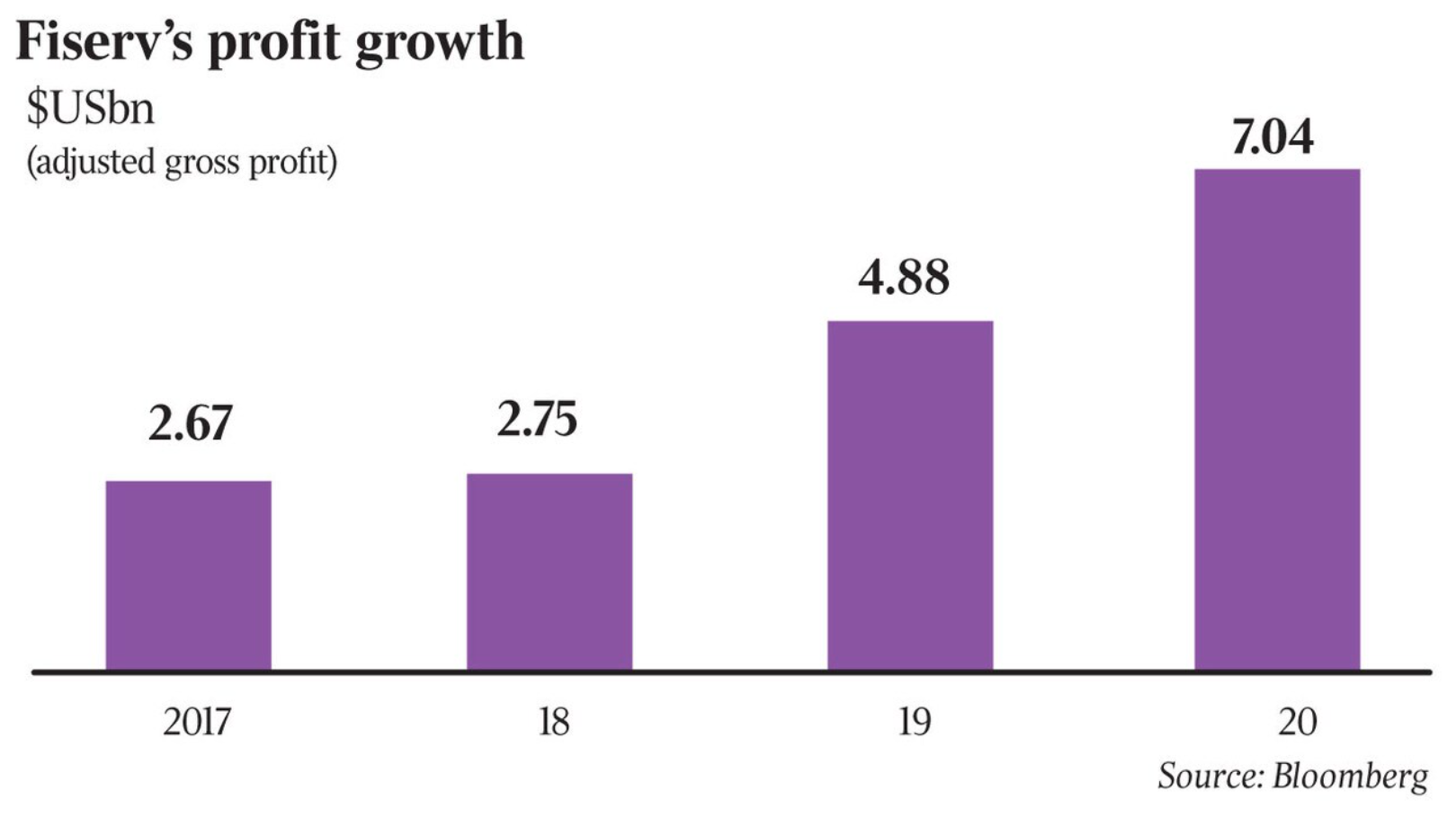 Fiserv — which took over First Data in a $US22bn deal two years ago — last month announced a bolt-on acquisition of Pittsburgh, Pennsylvania-based technology company Pineapple Payments.
Fiserv — which took over First Data in a $US22bn deal two years ago — last month announced a bolt-on acquisition of Pittsburgh, Pennsylvania-based technology company Pineapple Payments.
Source: The Australian. 12 April 2021.

Orion Financial Crimes – Case Study
Fighting financial crime with award-winning technology
Orion Financial Crimes – Case Study
The growing sophistication of financial crime remains an ever-present threat, particularly as we move to a predominantly cashless society, and engage with more ways to pay. Left exposed or unprotected, fraudsters can swiftly take their toll on financial institutions’ bottom line and reputations.
To stay on top of innovative financial crime perpetrators, financial institutions must have the best people, processes and technology in place to efficiently detect and monitor fraudulent behaviour. This valuable mix can sometimes take years to develop without the support of specialist providers.
Financial institutions are often faced with having to run multiple, costly technology solutions that tackle independent payment channels. This can lead to siloed people and processes supporting these multiple solutions. Managing multiple solutions also runs the risk of delaying the detection of fraud and potentially missing a fraud event entirely, exposing vulnerabilities for fraudsters to exploit.
These were just some of the challenges Indue’s client — a well-known Australian bank — faced while attempting to protect its 400,000-plus customer base prior to engaging Indue’s financial crimes experts.
Results we achieved for a leading Australian bank
-
50% cut in fraud losses in the first month
-
60% reduction in false-positive fraud results
-
400,000-plus customers better protected
Challenges
As a leading Australian bank, reliable fraud monitoring was essential to keep up with the fast, real-time transaction speeds of today’s payments networks. The bank was fighting fraudsters without the ability to decline in-flight transactions in real time, the outcome was fraudsters had the opportunity to achieve far greater attacks utilizing velocity and speed to their advantage.
The bank’s incumbent technology was also returning significant false-positive fraud results, thereby clouding analyst assessments and creating cost inefficiencies for operations. This enabled real fraud to hide behind genuine behaviour, which was often missed during assessments.
Critically, fraud was being monitored only during office hours by the client’s operations team. This often resulted in a backlog of events for next day review, while providing an opportunity for perpetrators to schedule attacks during out of hours and unmonitored periods.
How Indue helped: 5 key priorities
Shared vision: Indue’s financial crimes experts were able to see the bigger picture and work in partnership with the bank on their longer-term business planning goals and objectives, to provide a solution that could grow and adapt over time.
 Partnership: The client was seeking a supplier who would take a true partnership approach. A partner who could work with them to co-create an integrated solution that could simplify the management of multiple payment channels and return better results than its existing provider.
Partnership: The client was seeking a supplier who would take a true partnership approach. A partner who could work with them to co-create an integrated solution that could simplify the management of multiple payment channels and return better results than its existing provider.
Collaboration: A key success factor was the focus on collaboration between the client and Indue. The teams worked closely to ensure each other’s strengths were being leveraged, that the client was listened to and understood, that there was clarity on the problems that needed solving, and that there was alignment on identifying technical challenges and key performance outcomes.
Understanding: Built on years of experience, the Indue team understands that the closer you can work with a client’s team, the better the outcome. It was through establishing a close working relationship Indue was able to provide direction & guidance to help them decide how they wanted and needed to interact with the service. As the client was reshaping their own fraud management approach, Indue was able to provide guidance and counsel.
Feature Rich Service: The bank required a 24×7 alert triage service thereby providing round the clock monitoring and protection for their 400k+ customer base. Powered by award-winning IBM Safer Payments, the Indue solution was able to reduce the risks associated with the client’s multiple payment channels. Further, Indue’s investigation Case Management tool made an outsourced service much easier to manage back in the clients own shop. Finally, the Indue aggregation model was able to deliver insights from across a broad range of industry financial crime learnings, providing the client with greater visibility of the financial crime landscape.
“Financial crime is a unique, fast-paced and often highly complicated problem to solve. It requires people, process and technology working together harmoniously to achieve results.”
Dean Wyatt, Head of Financial Crimes, Indue
Results, return, future plans
Following the implementation of Orion Financial Crimes Solution, the bank saw immediate results with card fraud losses cut by 50% in the first month alone. More fraud was detected through less alerts and false-positives reduced by 60%.
Better outcomes overall were achieved in prevention and detection by addressing both fraud and scams, and significantly reducing chargebacks to customers.
The bank is now looking to add further payment channels to Indue’s solution, taking full advantage of the single-view capability of Orion Financial Crimes and IBM Safer Payments.
Critically, the bank can now focus its attention on higher value programs to drive its customer-first value proposition while working with Indue to protect its customers.
Orion Financial Crimes
Orion Financial Crime’s ability to inherently integrate people, processes and technology provides a cutting-edge solution with real-time capability, integrating artificial intelligence and machine learning to deliver a 24/7 fraud monitoring solution.
 Launched in 2003, Orion Financial Crimes went live with IBM Safer Payments in 2018, providing real-time fraud & scam detection and management, anti-money laundering and counter-terrorism financing monitoring, sanctions checking across Australia and New Zealand.
Launched in 2003, Orion Financial Crimes went live with IBM Safer Payments in 2018, providing real-time fraud & scam detection and management, anti-money laundering and counter-terrorism financing monitoring, sanctions checking across Australia and New Zealand.
To find out how you can tap in to Indue’s team of experts & specialists in fraud management contact us today.

Top three 2020 financial crime trends
Top three 2020 financial crime trends
The global pandemic and subsequent economic downturn has presented a new set of challenges for financial institutions
The global pandemic and subsequent economic downturn has presented a new set of challenges for financial institutions as they work to keep pace with financial crimes across the sector. With advancements in technology, changes in human behaviour and an increase in vulnerability as a result of COVID-19, it has never been more important for organisations to remain ahead of the financial crime curve and put up a solid defence in a post-pandemic world.
As the nation continues to navigate the ‘new normal’, we took a look at the top three financial crime trends of 2020 with Indue’s Financial Crimes team as a friendly reminder to stay vigilant and safeguard against professional perpetrators.
1. Rise of ecommerce
There’s no doubt the way we choose to pay has materially changed since the onset of COVID-19. With lockdown restrictions across the country, we’ve seen traditional brick and mortar stores exchanged for convenient and contactless ecommerce channels.
As a result, ATM withdrawals and cash-out transactions have dropped considerably, with the RBA reporting a 52% and 30% decrease respectively for the quarter ending June 2020.
Meanwhile, a recent report by Australia Post revealed ecommerce has grown by a mammoth 80% year on year in the eight weeks since COVID-19 was declared by the World Health Organisation, with an average of 2.5 million households buying something online each week in April 2020, compared to 1.6 million in 2019.
This significant shift to online transactions has seen a corresponding increase in online fraud. Indue’s Head of Financial Crimes, Dean Wyatt, said the company’s internal fraud metrics in relation to ecommerce had reported a 28% rise to 98% since the global pandemic hit.
“With an increase in online traffic comes an increase in fraud associated with ecommerce merchants, putting customers’ personal details at risk,” he said.
“On the other hand, we’ve seen instances of petty theft and stolen cards decline as a result of restrictions such as curfews and people generally travelling less, including people shifting to working from home arrangements.
“The good news is we’ve been able to hone in on this change using our multi-channel Orion Financial Crimes service, and align our analytics to identify and track suspicious behaviour in real time, to ensure our customers remain protected.
“Customers need to be aware that if they’re using new types of payments, they need to be following the same rigor as you would when paying instore.”
2. The art of social engineering
Social engineering by definition seeks to exploit human psychology to access and obtain personal information, and it’s this type of scam that continues to outsmart targets.
From phishing attacks (fraudulent emails or texts that appear to come from a reputable source) to baiting (a false promise to pique a victim’s greed or curiosity), the goal of the ‘social engineer’ is to trick individuals into giving up sensitive information or visiting malicious URLs to compromise their systems.
“We have seen a strong shift to perpetrators compromising people directly and involving them in the scam, rather than solely relying on targeting accounts or cards,” Dean said.
“Compromising identity details across driver licences, passports, and email or social media accounts is hot property at the moment because financial services are inherently integrated with those types of documents, information and platforms.
“People are fooled by sophisticated attacks that purport to ‘know you’, calling with pieces of information already collected, with the intention of gathering further details from the victim. When scammers are able to access detailed personal information, they can easily create new accounts or lines of credit under individuals’ names.
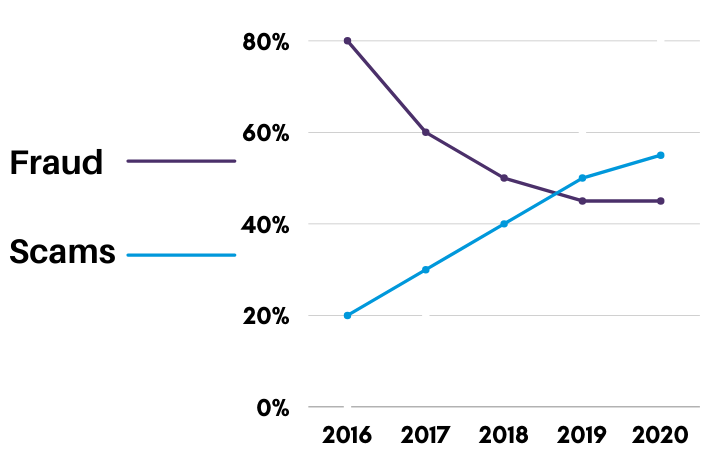 “At Indue, we have seen a considerable rise in social engineering over the last four years, to the point where it is now a larger problem than fraud. In 2016, financial crimes represented 80% fraud compared to only 20% social engineering scams, but as of 2020, we’re now seeing 45% fraud compared to 55% scams.”
“At Indue, we have seen a considerable rise in social engineering over the last four years, to the point where it is now a larger problem than fraud. In 2016, financial crimes represented 80% fraud compared to only 20% social engineering scams, but as of 2020, we’re now seeing 45% fraud compared to 55% scams.”
According to the Australian Payments Network, the most common contact method for scam activity in Australia is by email, but scams via phone result in the most financial loss.
3. Money laundering and terrorism financing
A key focus for institutions and regulators has been the growing trend of traditional financial crimes, like money laundering and terrorism financing, with both AUSTRAC and the Financial Action Task Force (FATF) reviewing controls and payment systems to identify potential weaknesses that could be exploited by criminals across the sector.
Money laundering seeks to disguise the proceeds of crime as legal income, while terrorism financing, as the name suggests, funds terrorist activities, both of which have the potential to trigger global repercussions.
Tough financial penalties have been handed down in recent times — the Commonwealth Bank of Australia and Westpac have both been hit with fines totalling $2 billion relating to serious breaches of anti-money laundering and counter-terrorism financing laws.
“With the shift of payments to a digitized world, more criminals are taking advantage of the opportunity to leverage these methods and innovative ways of sending financial transactions to each other,” Dean said.
“The rise of financial crime and the importance of protecting payment ecosystems has never been more important. With AUSTRAC’s presence increasingly felt in Australia over the last few years, I see it remaining a consistent focus beyond 2020.
“Genuine customer behaviour is certainly playing into it as well — with a strong shift to online payments, criminals are increasingly moving from hard cash to online transfer methods and attempting to hide between the genuine customer activity.
“As part of our Orion Financial Crimes solution, our anti-money laundering and counter terrorist financing service monitors customer account behaviour and transactions for unusual patterns, to detect activity that may be reportable under the Australian Anti-Money Laundering and Counter Terrorist Financing Act.”
Find out more
Learn more about Indue’s Orion Financial Crimes service, a multi-channel detection system that harnesses transactional data,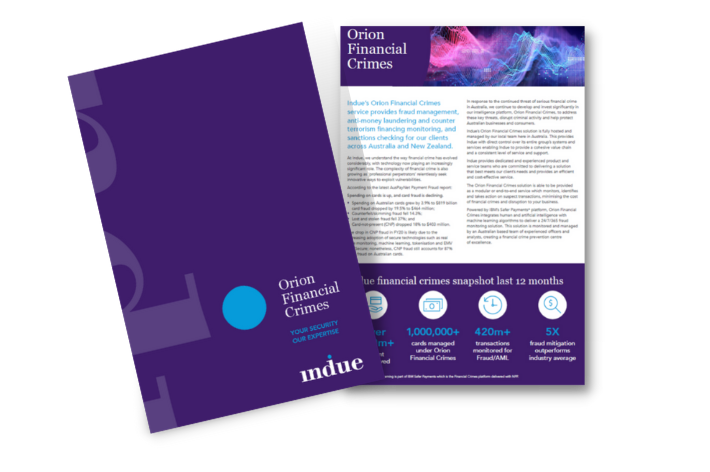 customer behaviour and biometrics to expose anomalies and identify fraudulent activity. Delivered by an expert team, the service is forward-thinking with a machine learning/artificial intelligence component and places customers ahead of the curve, providing a safety net when it comes to material risks and losses.
customer behaviour and biometrics to expose anomalies and identify fraudulent activity. Delivered by an expert team, the service is forward-thinking with a machine learning/artificial intelligence component and places customers ahead of the curve, providing a safety net when it comes to material risks and losses.
References
1. https://www.rba.gov.au/payments-and-infrastructure/resources/payments-data.html
2. https://auspost.com.au/content/dam/auspost_corp/media/documents/2020-ecommerce-industry-report.pdf
3. https://www.auspaynet.com.au/sites/default/files/2020-08/Fraud_Report_2020.pdf

Listen up: Payments Australia Podcast
Listen up: Payments Australia Podcast
Featuring Dave Hemingway Chief Commercial Officer
Join Dave Hemingway as he shares his insights on the evolution of Indue and the challenges currently being faced, alongside his notable career journey through payments.

Biometrics to secure over $3 trillion in mobile payments by 2025
Biometrics to secure over $3 trillion in mobile payments by 2025
A new study has found that biometrics will authenticate over $3 trillion of payment transactions in 2025, from just $404 billion in 2020.
A new study has found that biometrics will authenticate over $3 trillion of payment transactions in 2025, from just $404 billion in 2020.
The report found that biometrics, including fingerprint, iris, voice and facial recognition are becoming critical to offering compelling app experiences, as mobile payments begin to take off in the payments landscape.
The extraordinary growth of over 650% will be fuelled by increased use of OEM Pays (such as Apple Pay and Samsung Pay), for both remote and in-store payments, as these applications have already embraced biometric authentication methods.
The research recommends that all payment apps take notice of biometrics and build the most seamless user experience leveraging biometric capabilities, or risk losing out to more secure OEM Pay alternatives.

Biometric usage lagging behind hardware adoption
The research found that although biometric capabilities will reach 95% of smartphones globally by 2025, only 35% of these smartphones will be used for making biometric payments in e-commerce in the same year.
The research identified that stored card-on-file payments without biometric security remain common in e-commerce, and that it will require significant efforts by stakeholders to transition spend to biometrically-secured methods.
“While biometrics are now an established part of the ecosystem, payments and e-commerce apps have not kept pace with the rate of innovation,” explains Research co-author Susan Morrow. “Merchants must adopt biometric capabilities rapidly and educate users to best secure the increasingly massive e-commerce market.”
Contactless payments driving biometrics use
The research also found that contactless mobile payments are a major driver of increased biometrics use, with the number of contactless mobile transactions secured by biometrics increasing by over 520% between 2020 and 2025.
The research identified contactless cards as the main threat, as they do not require the extra verification step, meaning that payment vendors need to incentivise wallet use to drive greater adoption of biometrics.
Source: Alex Rolfe – Payments Cards and Mobile 2nd February 2021.

Indue appoints accomplished business leaders to the Board
Indue appoints accomplished business leaders to the Board
Leading banking payments, financial crime management and technology services company Indue Limited has announced the appointment of accomplished business leaders Susan Rix AM and Abigail Cheadle as new independent non-executive Directors to its Board.
Their appointments follow the retirement of current Board members Robin Burns and Sally Collier.
Ms Rix and Ms Cheadle join the Board in January 2021.
Ms Rix is a tax and advisory partner with BDO in Brisbane and has had a distinguished career in corporate advisory and non-executive roles across numerous sectors spanning more than 35 years.
Her current Board roles include Chair of Harcourts Group, Queensland Performing Arts Trust (Chair of Risk Management and Audit Committee) and Chair of AEIOU Foundation. Ms Rix is also a Queensland University of Technology Council Member and Business School Adjunct Professor. Her previous Board roles have included Queensland Rail (Chair of the Audit and Risk Committee), Port of Brisbane Corporation and Mater Misericordiae Ltd.
Her experience includes the various aspects of commercial, financial and taxation matters.
Ms Cheadle is an accomplished corporate advisor, executive and non-executive Director with experience growing finance, services and technology companies.
She spent 17 years of her 27 year career in Asia where she held executive positions with Kroll (head of investigations for Asia), KordaMentha (partner in charge of Forensics), Deloitte (head of Singapore Forensic), and Ernst & Young(Forensic Accounting service line leader for Asia Pacific). She is presently non-executive Director and Chair of Audit and Risk Committee for two ASX listed companies, namely: Isentia Group Ltd and Shriro Holdings Ltd. Ms Cheadle was previously a nonexecutive Director and Chair of the Audit, Risk and Compliance Committee for two other ASX listed companies, namely: QANTM Intellectual Property Ltd and SurfStitch Group Ltd.
Indue Chair Frank Gullone welcomed Ms Cheadle and Ms Rix to the Board, and said he looked forward to their contribution and the opportunity to leverage their depth of corporate experience.
“Together, they bring to the Board outstanding and relevant experience, and deep expertise in business strategy, transformation, risk and governance.
“Susan and Abigail’s diverse backgrounds and skills will further strengthen the Indue Board and complement the expertise of the existing Directors in the strategic development of the company.”
ENDS
For more information please contact:
Clare Mitchell, Senior Marketing Manager, Indue Limited E: cmitchell@indue.com.au

McKinsey’s Global Banking Annual Review 2020
2020 Annual Review Released
McKinsey has released their latest report “Global Banking Annual Review 2020: A test of Resilience”
“A test of resilience: Banking through the crisis, and beyond”
The following article on the Global Banking Annual Review 2020 has been sourced from the McKinsey & Company website.
“Ten months into the COVID-19 crisis, hopes are growing for vaccines and new therapeutics. But victory over the novel coronavirus still lies some nine to 12 months in the future. In the meantime, second and third waves of infection have arrived in many countries, and as people begin to crowd indoors in the months ahead, the infection rate may get worse. As a result, the potential for near-term economic recovery is uncertain. The question of the day is, “When will the economy return to its 2019 level and trajectory of growth?”
Welcome to the tenth edition of McKinsey’s Global Banking Annual Review, which provides a range of possible answers to that question for the global banking industry—some of which are perhaps surprisingly hopeful. Unlike many past shocks, the COVID-19 crisis is not a banking crisis; it is a crisis of the real economy. Banks will surely be affected, as credit losses cascade through the economy and as demand for banking services drops. But the problems are not self-made. Global banking entered the crisis well capitalized and is far more resilient than it was 12 years ago.
Our research finds that in the months and years to come, the pandemic will present a two-stage problem for banks. First will come severe credit losses, likely through late 2021; almost all banks and banking systems are expected to survive. Then, amid a muted global recovery, banks will face a profound challenge to ongoing operations that may persist beyond 2024. Depending on scenario, from $1.5 trillion to $4.7 trillion in cumulative revenue could be forgone between 2020 and 2024. In our base-case scenario, $3.7 trillion of revenue will be lost over five years—the equivalent of more than a half year of industry revenues that will never come back.”
Download McKinsey’s Global Banking Annual Review
Read the full report here: Global Banking Annual Review 2020: A test of resilience: Banking through the crisis, and beyond.
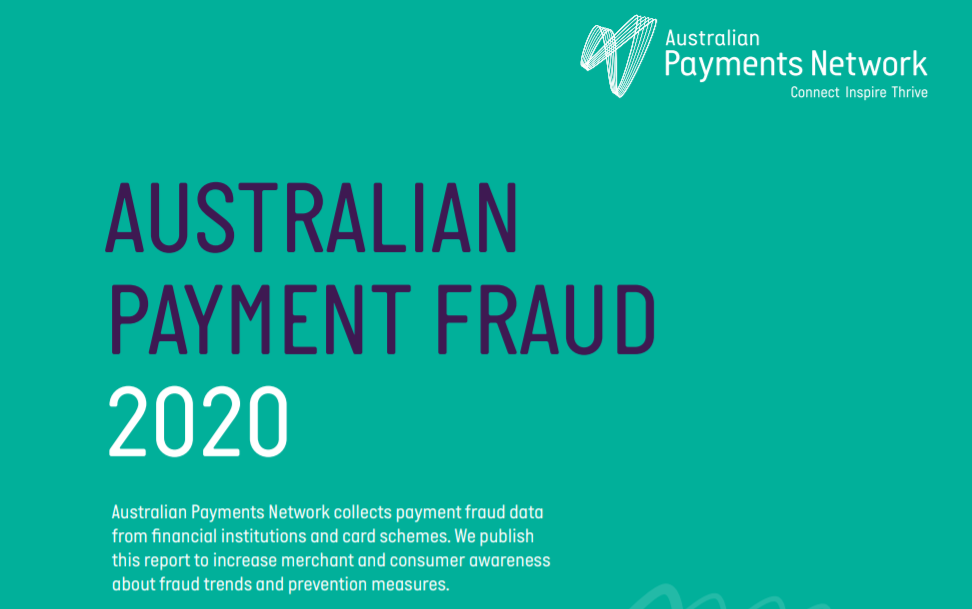
AusPayNet 2020 Payment Fraud Report – Fraud Statistics Jul 19 – Jun 20
AusPayNet 2020 Payment Fraud Report – Update
AusPayNet has released their latest 2020 fraud statistics, indicating that Industry effort drives continued decline in card fraud.
Auspaynet Releases Fraud Statistics Jul 19 – Jun 20
2020 Fraud Statistics released December 2, 2020 by the industry self-regulatory body Australian Payments Network (AusPayNet) show fraud on payment card transactions declined 15.4% in the 12 months to 30 June 2020 (FY20).
The following article has been sourced from AusPayNet’s website.
Continued decline in card fraud
The fraud figures for the 12 months to 30 June 2020 (FY20) show fraud on payment card transactions dropped by 15.4% to $447.2 million continuing the trend recorded in the 2019 calendar year.
Within this total:
- Card-not-present (CNP) fraud – affecting mainly online transactions – dropped by 14.0% to $392.4 million.
- Lost and stolen card fraud dropped by 28.5% to $30.8 million
- Counterfeit/skimming fraud fell be 24.8% to $14.0 million
The decline, which came as spend on cards totalled $803.4 billion (up 0.5%), translates to a rate of 56 cents per $1,0000 – down from 66 cents per $1,000 in FY19.
The FY20 data includes the first full year in operation of the industry CNP Fraud Mitigation Framework, which came into effect on 1 July 2019.
Download the 2020 Payment Fraud Report & Latest Fraud Stats:
For more information on the data and payment fraud trends, including a “Spotlight on Scams”, read Auspaynet’s 2020 Payment Fraud Report here.
You can also read their December Media Release and Payment Fraud Stats July 19-June 20.
Article & Image Source: Australian Payments Network (Auspaynet)

Stay COVID-safe with contactless giving | Indue Digital Gift Card
Stay COVID-safe with Contactless Giving
Contactless payment methods have never been more important. The ‘tap-and-pay’ approach to purchasing everyday essentials has well and truly become the norm, with the global pandemic forcing us to rethink our daily movements, including how we choose to pay.
The Rise of Contactless Payments
The rise of contactless payments can be seen right across the sector, made even more accessible following the temporary increase of PIN limits for contactless payments from $100 to $200 to reduce the need for physical contact with payment terminals, a move led by the Australian Payments Network (AusPayNet)[1].
This sentiment can also be translated to the gift card space. What has traditionally been a somewhat ‘hands-on’ process — from purchasing in-store to the act of giving itself — gift cards are now turning completely digital and Indue are the first in Australia to utilise the Visa network to make this happen.
It’s a move that’s in line with shifts in consumer behaviour. A 2019 survey by Roy Morgan of more than 50,000 consumers revealed 72 per cent of Australians are embracing digital payment solutions and mobile payment wallets in lieu of more traditional physical payment methods while shopping[2], and this has only been amplified as we tackle the global pandemic.
New Contactless Gift Card
Indue Chief Commercial Officer Dave Hemingway said Indue’s new contactless digital gift card offering further embeds the business’ payment expertise in the retail sector, setting a new benchmark in retail technology.
“Consumers expect fast, convenient and secure payments, and Indue is proud to redefine the boundaries to create an exciting, new product that we’re certain will benefit retailers and consumers across the country, even more so from a COVID-safe perspective,” Dave said.
“Building on our 20-year partnership with Visa, together we’ve created an entirely new product allowing major retailers to utilise a digital gift card that is universally accepted without requiring point-of-sale integration, paving the way for future advancements in this sector.”
With the widespread impacts of COVID-19 affecting several industries across the country, technology will play a key role in helping businesses bounce back. There has never been a more crucial time for retailers in particular to consider digital gift cards as a way to secure a solid consumer base and boost sales through a convenient, safe and seamless purchase journey.
In this increasingly contactless environment, the rise of innovative, digital solutions that not only streamline gift giving and receiving, but protect our overall health, will no doubt become a necessity as we continue to navigate the ‘new normal’.
Find out more about Indue’s innovative gift card offering here, or contact us today.
References
[1] https://www.auspaynet.com.au/insights/Media-Release/ContactlessLimitsCOVID-19
[2] https://www.finder.com.au/australians-digital-payments-roy-morgan-survey#:~:text=A%20new%20survey%20from%20Roy,Zip%20and%20mobile%20payment%20wallets.&text=Bill%20payment%20services%20were%20the,in%20the%20past%2012%20months.

Digital gift card convenience | A new way to give
A new digital way to give
Contactless convenience is the ultimate win for consumers when it comes to Indue’s new digital gift card offering.
Innovation in the Australian Gift Card Market
The Australian gift card market is valued at up to $2.5 billion annually[1], making it the most popular gift given in Australia. Market research has shown that while gift givers would prefer to gift something physical to convey thought and meaning, recipients generally prefer to receive digital gift cards for the convenience factor. Indue has tapped into this sentiment, creating a multi-merchant digital gift card solution, providing multiple options for the recipient to choose where they spend.
Just six months in the making in partnership with Visa, the Indue digital gift card provides the same level of security and convenience customers know and trust when they tap-and-pay on their mobile phone or wearable device. Lost or forgotten cards are a thing of the past with a balance displayed in real time, enabling recipients to check their balance on the go and removing the need to attempt multiple transactions to spend the remaining value.
Digital Gift Card Convenience
Consumers want the convenience they’ve come to expect from using their smart device for transactions, so it’s only natural that digital gift cards provide a better customer experience overall.
The digital gift card also offers added flexibility when it comes to purchasing them online, particularly around peak holiday periods.
“Digital gift cards extend the buying window at the busiest times of the year, in particular the lead up to Christmas,” said Indue Chief Commercial Officer, Dave Hemingway.
“When people are buying plastic gift cards online, that stops at around 19 December because purchasers are concerned they won’t arrive in time. Consumers now have the ability to buy a digital gift card online on Christmas Eve, with an almost instant digital delivery to the recipient.”
Find out more about Indue’s innovative gift card offering here, or contact us today.
References
[1] https://treasury.gov.au/publication/gift-cards-in-the-australian-market-report-2/gift-cards-in-the-australian-market-report/part-ii-the-australian-gift-card-market

InFocus Cyber Security Interview
Is there a risk that security is compromised when providers compete on convenience?
Cyber security interview with Dave Hemingway by Lance Blockley, InFocus
 Emerging Payments Association’s InFocus takes a look at Cyber Security, a theme that is more important than ever, following the wide-scale shift to remote working, and the increase in usage of e-commerce and digital identity.
Emerging Payments Association’s InFocus takes a look at Cyber Security, a theme that is more important than ever, following the wide-scale shift to remote working, and the increase in usage of e-commerce and digital identity.
In this first interview for InFocus, Lance Blockley is talking to Mani Amini CEO at Secure Forte and Dave Hemingway CCO at Indue.

NPP Roadmap Released (New Payments Platform)
New Payments Platform (NPP): October 2020 Roadmap Released
The October 2020 New Payments Platform (NPP) Roadmap has been published by NPPA, outlining plans to enhance and extend the NPP’s capability
The October 2020 NPP Roadmap includes an update on the enablement of international payments via the platform as well as case studies from organisations leveraging the New Payments Platform’s capabilities to deliver innovative payments experiences and improved business efficiencies.
You can download the NPP Roadmap here.
www.nppa.com.au
www.payid.com.au
Source: NPP Australia

Indue gains ISO certification for information security management
Indue gains ISO certification for information security management
Indue has received an International Organization for Standardisation (ISO) 270001:2013 certification for information security management — one of the most widely recognised and internationally accepted standards for the security of assets.
ISMS Continual Improvement
The ISO certification features requirements on how to implement, monitor, maintain and continually improve an Information Security Management System (ISMS) in accordance with the standard, including preserving the confidentiality, integrity and availability of information to ensure risks are adequately managed.
Indue Chief Executive Officer Derek Weatherley said the accreditation reinforces the organisation’s proven security processes and credentials against the global standard.
“This is a significant achievement for Indue, which specialises in helping customers gain competitive advantage through innovative payment solutions,” Mr Weatherley said.
“The certification strengthens our approach to information security, and demonstrates to our customers and partners that we maintain the highest levels of data security.
“We are trusted by our customers to store and process their most valuable data, so this certification provides assurance that we have all the necessary controls in place to ensure this important information is protected.
“Particularly in the context of COVID-19 where we’ve seen an increase in the risk of data security breaches alongside a surge in online transactions, we’ve continued to demonstrate our commitment to secure payment products, supported by rigorous compliance, program oversight and our transaction monitoring and protection system, Orion Financial Crimes.”
Data security has never been more important, with COVID-19 restrictions forcing many businesses to move to remote data almost overnight, significantly increasing the risk of data breaches.
By implementing and following the necessary steps to comply with the ISO 27001:2013 standard, organisations can identify, control and eliminate security risks, ultimately certifying the security practices adopted within the organisation.
ISO is an independent, non-governmental, international organisation that develops standards to ensure the quality, safety and efficiency of products, services and systems.

New digital gift card a win for retailers
Indue’s new digital gift card a win for retailers
Indue, in partnership with Visa, is transforming the gift card experience for Australian retailers and consumers with its innovative new offer.
A convenient, contactless payment option
Paving the way for future advancements in the sector, the new digital gift card allows major retailers to offer a digital gift card that is universally accepted, without requiring point-of-sale integration.
In addition to offering a convenient, contactless payment option for consumers, the product also provides the ability to capture consumer data to generate targeted engagement. Recipients of the digital gift card are required to download the retailer’s app in order to provision their digital gift card into Apple Pay or Google Pay, creating an opportunity to gather purchasing metrics, serve up additional offers to consumers and link in to the broader shopping experience.
Enhancing Consumer Engagement
“There’s no ability to connect with a consumer when they use a plastic gift card — it’s an anonymous transaction. Our digital gift card technology, which integrates seamlessly with retailers’ existing apps, encourages tighter engagement,” said Indue Chief Commercial Officer, Dave Hemingway.
“Our mission is to ensure the millions of Australians who access their money through our clients’ companies have access to market-leading payment products, and we’re thrilled to have delivered once again with our digital gift card.”
Operating costs for retailers who offer digital gift cards are also lower, removing the need to pay for manufacturing and distribution. Expiry dates for many gift cards need to be printed on the card at the time of manufacture, which could result in stock issues if the cards are unable to be sold within a set period, whereas Indue’s digital gift cards generate an expiry date at the point of purchase.
Importantly, Indue’s digital gift card is flexible in its deployment, providing both B2C and B2B distribution solutions.
“Digital gift cards don’t necessarily need to be distributed via e-commerce. For example, we’ve had enquiries around digital gift cards to distribute to staff as part of a loyalty program, so there are a range of different distribution models that we can harness,” Dave said.
Find out more about Indue’s innovative gift card offering here, or contact us today.

IBM Safer Payments – Indue’s fraud monitoring platform wins Award
IBM Safer Payments, Indue’s fraud monitoring platform, voted best in Asia
The next generation platform powering Indue’s Orion Financial Crimes fraud monitoring solution, has been recognised at the Asia Risk Technology Awards 2020.
Fraud Detection & Prevention Product of the Year Award
IBM Safer Payments, the next generation platform powering Indue’s Orion Financial Crimes fraud monitoring solution, has been recognised at the Asia Risk Technology Awards 2020 as Fraud Detection and Prevention Product of the Year.
The Awards, recently held in Singapore, are the longest-running and most prestigious in the region, recognising vendors that deliver innovative and forward-thinking technologies to meet the financial services industry’s complex challenges.
IBM Safer Payments won the award specifically for bringing agility to combatting fraud and for its differentiated capabilities — a solution that is particularly well positioned to serve Australian clients as disruptions associated with faster payments and the emergence of challenger banks gathers momentum.
Commitment to Next-Gen Risk Solutions
Indue’s Chief Commercial Officer, Dave Hemingway, said this important industry acknowledgement for partner IBM demonstrates Indue’s commitment to bringing next generation risk and compliance solutions to serve Australian customers, and to meeting their specific industry and business needs.
“We began leveraging IBM Safer Payments in 2018 as part of our Orion Financial Crimes service, to reduce the risks associated with the introduction of the New Payments Platform — with real-time payments comes a greater risk of fraud and cyber crime,” Mr Hemingway said.
“Indue is now using IBM Safer Payments to its full capacity and we’re seeing incredible benefits as a result.
“The pace of change within the industry, particularly due to COVID-19 where we’ve seen a significant move to online transactions, has meant we’ve been able to harness the capability of IBM Safer Payments, and adjust and adapt to meet these changes in behaviour, fast.
“It’s reassuring to know that what we’re doing and the tools we’re using in the financial crimes space is backed by world-leading, award-winning technology and we’re proud to be leading the way.”
24/7, Australian-based Fraud Monitoring Solution
Indue’s Orion Financial Crimes solution integrates artificial intelligence and machine learning algorithms to deliver a 24/7, Australian-based fraud monitoring solution, powered by IBM Safer Payments.
With the integration of IBM Safer Payments, the Orion Financial Crimes team has experienced a 20% reduction in false-positive rates, and have been able to make rule changes up to 90% faster when compared to traditional platforms, while managing all payments channels in the one system.
Indue consistently outperforms the industry average in financial crimes prevention, offering credible, major bank grade anti-fraud capabilities for small to mid-tier banks.
Find out more about Indue’s Orion Financial Crimes Service.

Indue names Frank Gullone as new Chairman
Indue names Frank Gullone as new Chairman
The Board of leading banking payments, financial crime management and technology services company, Indue Limited, has named Frank Gullone as its new Chairman following the decision by Chair Robin Burns to step down at the end of his current term later this year.

Mr Burns was appointed to the Indue Board in October 2017 and was elected Chairman in December 2018.
Following the announcement, Mr Burns said: “It has been a privilege and honour to serve as a Director and Chairman of the Board over these past three years, during a period of significant regulatory, technological and economic change across our industry”.
“I believe now is the appropriate time to transition to a new Chairman as we continue with the Board renewal process.
“I am also delighted with the Board’s selection of Frank Gullone as the next Chairman. Frank will continue to drive Indue’s strategic agenda and ongoing digital transformation.”
With Mr Burns at the helm, Indue has successfully launched its Mobile Payments product with both Apple Pay and Google Pay, accelerated migration of Cards and AML to the next generation “real time” financial fraud monitoring technology and led the company’s refreshed strategy ‘FOCUSS 2023: Technology to Transformation.
“On behalf of the Board, I would like to thank Robin for his contribution and the solid foundation he has laid for the future and wish him all the best,” Mr Gullone said.
Mr Burns said he would remain on the Board until the end of his current term as a Director in November 2020 and Mr Gullone would assume the role of Chairman effective immediately, to ensure a smooth transition to new Board leadership.
Mr Gullone was appointed to the Indue Board in April 2013 and is Chair of the Risk Committee. He holds senior executive, Chairman, non‐executive Director and corporate advisory experience across the financial services sector, professional services and a range of other associated industries.
With more than 35 years’ experience, Mr Gullone is also Founder and Chair of the strategic management consultancy, Gullone Group Consulting and advises leaders of organisations on strategy and leadership.
He is also the former Chairman of multi-award winning superannuation industry fund Kinetic Super. He retired from that role following the successful merger with Sunsuper in 2018.
Mr Gullone’s executive career includes roles as CEO of Superpartners, Managing Director of the Centre for Investor Education, Executive Director at Freehills and General Manager of ANZ Trustees at ANZ Funds Management — part of the ANZ Banking Group. He commenced his professional
career with J. B. Were and Son Group in 1982, where he progressed to become the Group CFO.
Commenting on his appointment, Mr Gullone said: “I appreciate the trust placed in me by the Indue Board and I look forward to my ongoing work with the Board and management to ensure we deliver long‐term value creation for our customers and shareholders”.
For more information please contact:
Clare Mitchell, Senior Marketing Manager, Indue Limited E: cmitchell@indue.com.au

5 Trends influencing payments by CEO Derek Weatherley
The top five payment trends influencing 2020
The digitisation of payments, changes in ecommerce and acceleration of mobile wallet adoption are global payments trends in 2020 challenging the industry to keep pace. These trends are not only forcing businesses to change the way they operate, but are also putting data security at the forefront of business strategy.
With the future of payments quickly coming into focus — thanks in no small part to the impact of COVID-19 — Indue CEO Derek Weatherley shares his insights on the top five payment trends influencing 2020.
- The ecommerce experience and embracing the evolution
Even prior to the COVID-19 pandemic, ecommerce was expected to continue to grow rapidly in 2020. But restrictions and public space shutdowns have significantly changed consumer behaviour, with a 29 per cent increase in ecommerce spending locally month-on-month since lockdowns began in March1. On the other hand, physical transactions have decreased and people are using less cash — a longer-term trend accelerated by the global pandemic as some businesses discourage the use of cash.
Helping drive this trend is a population seeking more flexible and convenient ways to pay. Combine this with confidence in stronger digital security and a willingness within the retail sector to embrace technological change, Australia is starting to see mobile payments take off. In 2019, The Reserve Bank of Australia reported 83 per cent of point-of-sale card transactions were contactless payments, signifying a rise of almost 20 per cent in three years2. COVID-19 is only adding to this rise with the payments industry temporarily increasing the contactless card PIN limit from $100 to $200 to minimise physical contact with the payment terminal and help reduce the risk of COVID-19 transmission.
One trend to keep a close eye on is the digital wallet. Roy Morgan’s latest Digital Payments Report revealed that digital wallets such as Apple Pay, Google Pay and Samsung Pay are being used by roughly one in 10 Australians (9.8 per cent) — up from 6.8 per cent a year ago3. This upward trend will continue, but the mobile wallet race hasn’t fully played out just yet as the industry looks to cater for all the different use cases.
One thing is clear — the payment industry will continue to evolve to meet the needs of merchants as consumers demand improvements to the overall ecommerce and contactless experience.
- Congestion, Competition and the Customer Dollar
It’s a busy time for payment systems operators, with heightened conversation taking place across payment schemes in the industry. We’ve also seen in recent times a significant transformation of the base-level clearing and settlement capabilities, causing disruption for many in this space and providing future innovative payment solutions.
The high level and pace of change is causing congestion and headaches for financial institutions and payment providers. As older forms of payment are migrated, schemes are coming into competition with each other, creating congestion and ultimately higher costs for consumers.
This will likely settle in the next three to five years as the industry settles on its future scale approaches to utility payment processing, but the medium-term landscape remains challenging and costly.
Understanding what’s next in payment industry platforms comes down to understanding the value proposition in the eyes of consumers and merchants and their respective appetite to pay. We expect to see competition between providers of closed and open payment platforms increase, as they contest for a larger slice of their customer dollars and loyalty4.
- Money moves fast and attacks are evolving
Data security in the world of payments has never been more crucial and with innovation comes security issues as payment products and services evolve. The speed of transactions have increased through advancements like New Payments Platform (NPP) real-time payments, and we are exposed to significantly larger and more valuable data footprints online, which all contribute to a heightened risk of fraud. By investing in sophisticated machine learning payment technology, Indue now has the capacity to draw from a much larger pool of data and undertake significantly more sophisticated real time analysis to detect trends that benefit — and protect — each individual client.
Indue’s Orion Financial Crimes solution integrates human and artificial intelligence (AI) with machine learning algorithms to deliver a 24/7 fraud monitoring solution. This solution provides a broad gambit of services, including real-time fraud and anti-money laundering monitoring across all payment channels. This is a significant shift in how financial institutions trade on trust, and therefore need to put reputation and security at the forefront of their business priorities. Without robust data security measures, businesses run the risk of damaging their brand and making consumers feel uncertain about the safety and security of their accounts.
We have transformed our financial crimes services and continue to invest in leading-edge payment technology to better monitor trends and ultimately protect our customers from fraud. Assurance of identity in a virtual world is another key area of focus in an increasingly digitised world and an area where we are assisting our customers to adapt to with ongoing innovation in this area.
- Less friction, more function
Product commoditisation will not only challenge business models, but shift the economic climate, especially in the banking and fintech sector. Digitisation and ease of payments have changed the way customers think, decreasing the value of traditional competitive differentiators in the process — payments are now instantaneous, simple and 24/7.
As consumers become more and more accustomed to these seamless transactions, it presents a challenge to providers who need to balance the cost of creating a frictionless experience and meeting consumer expectations. Expect to see structural shifts among the players operating in this environment as they look to drive revenue through new or enhanced customer experiences, and make use of data analytics to anticipate customers’ changing needs and expectations4.
- Wake up to new ways
COVID-19 has made embracing and adapting to the work-from-home environment a must for businesses. The shift has provided opportunities for businesses to expand their workforce and recruit talent from anywhere, as most payment organisations aren’t restricted by location.
Even before COVID-19, Indue embraced work from home and flexible working hours, revising the way we manage talent to reap the positive benefits of a geographically dispersed workforce and provide an increased work/life balance across the organisation.
The final word — what do these 2020 payments trends mean for our customers?
Our customers rightly focus their investment dollars on driving the top line, and leave the distraction of digitisation and changing payment rails to us to handle on their behalf. However, with continued evolution of the online world, it’s important that our customers sensibly invest in the modernisation of their platforms, particularly those platforms that make their customers lives easy. They don’t need to be on the leading edge, but do need to keep pace.
References
1 https://www.adnews.com.au/news/online-shopping-orders-have-increased-49-this-year
2 https://www.mobiletransaction.org/au/tap-and-go-trending-in-australia/
3 http://www.roymorgan.com/findings/8308-digital-payment-solutions-december-2019-202003100329

RBA News: RBA Research Discussion Paper 2020-06
RBA News: RBA Research Discussion Paper 2020-06
The Reserve Bank of Australia has released the following Research Discussion Paper:
Consumer Payment Behaviour in Australia: Evidence from the 2019 Consumer Payments Survey
by James Caddy, Luc Delaney and Chay Fisher
Abstract
Since 2007 the Reserve Bank has conducted a Consumer Payments Survey (CPS) every three years, which provides comprehensive information on how Australians make their payments. The 2019 CPS was conducted just before the emergence of COVID-19 in Australia and gives a detailed snapshot of consumer payment behaviour prior to the changes in spending patterns induced by the pandemic. The survey provided further evidence that Australian consumers increasingly prefer to use electronic payment methods rather than cash for their day-to-day payments. Many people now tap their cards (or sometimes phones) even for small purchases. When paying with a card in person or online, consumers are more often choosing to use a debit card rather than a credit card. As a result, debit cards were the most frequently used consumer payment method in the 2019 survey. Consumers are also increasingly taking advantage of the ability to make payments using a range of innovative new payment services that have emerged in recent years, often facilitated by mobile technology and the use of digital payment credentials. Despite the trend towards electronic payments, cash still accounted for a significant share of lower-value payments and a material proportion of the population continue to make many of their payments in cash.
Read full article

How Australians Pay Snapshot
How Australians Pay Snapshot
2019 Consumer Payments Survey

Panic, Pandemic & Payment Preferences: RBA Assistant Governor, Speech
Panic, Pandemic and Payment Preferences
The Disruption Evolved series by Morgan Stanley features guest speakers who are leaders in their field and at the forefront of industry. In June this year, Michelle Bullock, Assistant Governor (Financial Systems) RBA, delivered a compelling keynote focussing on the potential implications for payment systems in the midst of the Covid-19 pandemic. With a focus on Panic, Pandemic and Payment preferences, Michelle’s shares her insights as we navigate these extraordinary times.
Below is a transcript of Michelle’s address.
Michelle Bullock
Assistant Governor (Financial Systems)
Keynote Address at the Morgan Stanley Disruption Evolved Webcast
Online – 3 June 2020
Thank you to Morgan Stanley for the opportunity to speak this morning.
We are living through quite extraordinary times. The COVID-19 pandemic is having dramatic effects on economies around the world, impacting employment, businesses and households. Monetary and fiscal policies have been heavily mobilised to help bridge the impact of the containment measures on economic activity. But the health crisis has also disrupted aspects of the retail payments system; payment patterns have seen large, sudden shifts as merchants and consumers have changed both their payment preferences and their mode of interaction. Payment service providers have tried to accommodate these shifts in preferences in a fast-changing environment…”
Read full article

AusPayNet 2020 Payment Fraud Report Released
Australian Payments Network 2020 Payment Fraud Report
AusPayNet has released their annual Payment Fraud Report, showing data and payment fraud trends.
Auspaynet Report Shows Card Fraud Declines Sharply
The Australian Payments Network’s 2020 Payment Fraud Report shows that in 2019, card fraud fell by 19.5% to $464 million – the biggest decline ever – as total card spending rose 3.9% to a record $819 billion.[/vc_column_text][vc_column_text]This translates to a fraud rate of 56.6¢ per $1,000 spent, a significant drop from 73.1¢ per $1,000 in 2018.
- Fraud on Lost and Stolen cards fell by 37% to $35 million
- Counterfeit /Skimming fraud fell by 14.3% to $16.8 million
- Card-Not-Present fraud fell by 17.7% to $402.6 million
The drop in card-not-present (CNP) fraud, mainly affecting online transactions, is the first ever and coincides in part with the introduction in July 2019 of the industry CNP Fraud Mitigation Framework.
The industry is committed to tackling CNP fraud, which accounts for 87% of all card fraud, and remains vigilant as e-commerce volumes increase during the COVID-19 pandemic.
Download the 2020 Payment Fraud Report:
For more information on the data and payment fraud trends, including a “Spotlight on Scams”, read Auspaynet’s 2020 Payment Fraud Report here.
You can also read their Media Release and Payment Fraud Stats Jan-Dec 2019.
Article & Image Source: Australian Payments Network (Auspaynet)

NPPA Update: Five million PayIDs registered in Australia
Five million PayIDs registered in Australia
NPPA – Five million PayIDs have now been registered by Australian consumers and businesses looking for a simple and cashless way to receive instant payments straight into their bank account.
The PayID service, which is available in the internet or mobile banking of nearly 90 Australian banks, credit unions and building societies, was launched when the New Payments Platform went live in February 2018.
PayID enables registered users to receive instant payments into a bank account via a simple identifier, like a phone number, email address, ABN or business name, instead of a BSB and account number.
It replicates the speed and ease of cash, while also providing additional assurance through a payee confirmation step – the ability to see the name of the person or business associated with a PayID prior to a payment being made. This confirmation step reduces payments being mistakenly made to the wrong person or business.
Since its launch, people have turned to PayID as a simple and cashless way to pay family and friends, from splitting bills to sending money to family members during emergencies.
“Research suggests to us that the uptake of PayID has been largely driven by word–of–mouth and the experience of paying another person’s PayID,” said CEO of NPP Australia, Adrian Lovney.
PayIDs Registered for a Quick Cash Payment
“When a user asks another person to pay their PayID, it’s often in situations where they require a quick cashless payment, or they don’t want the hassle of remembering and sharing a BSB and account number.
“When the payer experiences the speed and ease of paying another person’s PayID inside their usual internet or mobile banking app, they’re more likely to register their own PayID with their financial institution. It’s almost like a ‘paying it forward’ situation,” he said.
Businesses have also turned to PayID as a cost–effective alternative to cash or cards, particularly during the COVID-19 pandemic. Since March, more businesses have advertised PayID as a payment alternative, particularly those who rely on cash on demand such as cafes, hairdressers or services such as mobile dog washing.
Use by Payment Innovators
Payment innovators are also using the NPP’s PayID capabilities to enable real-time and contactless point of sale payments. Azupay, which has been developed by an Australian fintech, works by creating a unique, single-use Azupay PayID at the time of payment, which automatically includes the merchant information required for reconciliation such as the amount and a description. Customers then use that PayID, either by entering it manually or via a QR code, to make the payment without the need to input additional information.
The NSW Government’s Department of Customer Service recently began offering Azupay payments for Liquor and Gaming licence renewals with further rollout plans currently underway.
Source
This article originally appeared on nppa.com.au (NPP Australia)
Indue is one of the 13 founding members of the NPP initiative, which facilitates real-time settlements of payments with funds available in your account in less than a minute.

2020 Pandemic: How might it change the ways we pay?
2020 Pandemic: How might it change the ways we pay?
Although the total number of payments in the Australian market is currently suffering a severe decline, as economic activity is strongly curtailed, what might happen to the ways consumers pay after the 2020 pandemic? Guest writers, David Oierholm and Lance Blockley of The Initiatives Group, offer their view.
The COVID-19 2020 Pandemic is having an unprecedented impact on how we live and work. We are planning for the worst and hoping for something better. No matter how long it takes for the crisis to pass, 2020 will be a year that is not forgotten quickly.
It will undoubtedly be a period of change, some of which will alter the way we do things forever.
We are likely to wash our hands more frequently, and we will be much better at conducting remote meetings using platforms such as Zoom, Webex, Skype for Business, GoToMeetings, etc. Telemedicine will likely become more prevalent, as will the ability and propensity to work from home effectively.
We will be super-sensitised to microbes, and, given the economic impacts being experienced, we may be more concerned about the sustainability of the companies we buy things from, together perhaps with more conservative views regarding our ongoing employment and income. Indeed, the cross-border supply chains that have been constructed over the last 15+ years of globalisation have been shown to be a potential weakness (e.g. a key global production site of surgical masks being in Wuhan), so perhaps domestic manufacturing will get a boost everywhere and cross-border commercial transactions decline.
Although the total number of payments in the Australian market is currently suffering a severe decline, as economic activity is strongly curtailed, what might happen to the ways consumers pay? Not necessarily in the short term – although many merchants are now refusing to take cash, travel card issuance & usage has crashed, and cross-border payments (a key revenue source for the international schemes) are drying up. Rather, we are looking at the potential longer term residual impacts.
In The Initiatives Group white paper “The Changing Face of Consumer payments in Australia”, we identified that the way we pay takes a long time to change. It is all about trends, and long ones at that. The following graph was used to show how the ways we pay have changed over the past 15 years. The trends are clear – cash and cheques are on the decline, and fast becoming in the minority of transactions. Electronic payments continue to increase. Cards are now more than 60% of transactions, with the growth in debit cards far outstripping credit cards. It is now quite normal to pay for a morning coffee (currently only available as “take away”) using a card – not so long ago a $3.50 purchase would have been made with cash.
The trends are clear – cash and cheques are on the decline, and fast becoming in the minority of transactions. Electronic payments continue to increase. Cards are now more than 60% of transactions, with the growth in debit cards far outstripping credit cards. It is now quite normal to pay for a morning coffee (currently only available as “take away”) using a card – not so long ago a $3.50 purchase would have been made with cash.
What might happen to cash?
“Fed Plans Release of Clean Cash As Virus Spreads” (pymnts.com, March 22, 2020)
The decline in the use of cash will accelerate, along with an associated decline in ATM usage (noting that for every ATM withdrawal that does not happen, an additional 10-15 electronic transactions will be generated, mainly on debit cards).
 Cash carries bacteria 1 (no prior studies seem to have focused on viruses!). Both cash and bacteria travel fast. Even though it has been found that polymer notes, like those used in Australia, carry less bacteria than (absorptive) paper notes such as those in the USA and China, consumers and merchants alike will be less keen on handling cash, and more keen on using electronic payments. Indeed, the UK has just lifted the contactless limit from GBP30 to GBP45 to help further reduce the use of cash. More locally in Australia, one of your authors has found that cash is no longer accepted at the local Coles Supermarket, Harris Farm Markets and the golf club (which is closed for now anyway).
Cash carries bacteria 1 (no prior studies seem to have focused on viruses!). Both cash and bacteria travel fast. Even though it has been found that polymer notes, like those used in Australia, carry less bacteria than (absorptive) paper notes such as those in the USA and China, consumers and merchants alike will be less keen on handling cash, and more keen on using electronic payments. Indeed, the UK has just lifted the contactless limit from GBP30 to GBP45 to help further reduce the use of cash. More locally in Australia, one of your authors has found that cash is no longer accepted at the local Coles Supermarket, Harris Farm Markets and the golf club (which is closed for now anyway).
So, are plastic cards the answer?
Australians are the world leaders in the use of contactless open-loop payments, with well in excess of 90% of card present transactions being contactless. This means that, for transactions under $100, we don’t need to touch a terminal that somebody else has used or handed us. We also don’t have to hand our card over to a stranger. That’s good, right?
Well, maybe not… unfortunately there are studies, albeit in the USA, where contactless payments are still in their infancy, that have shown that cards “can be grimier than cold hard cash”.2
However, it still feels safer to use a card that only you have held than notes and coins that have gone through multiple hands, so plastic cards will quickly pick up transactions from cash.
How about other transactions that use the card rails?
Mobile Wallets
Despite the high ownership of smartphones and Australians’ love of contactless payments, until recently, the take up of mobile wallets such as Apple Pay, Google Pay and Samsung Pay (the “Pays”) has been slow. It may depend on your industry and your demographic, but The Initiatives Group has heard conflicting reports. Claims of 25% of POS transactions being handled via the Pays have been offset by merchant claims of far far lower percentages, hence we would suggest that the average across all contactless payments is still under 10%.
Regardless, the use is set to accelerate. Your phone may or may not be a great carrier of bacteria, but it is something you will touch anyway, so what’s the difference if you now use it for payments and avoid fiddling around with your wallet for a card.
Wearables
Whilst wearables are only another form factor for using the Pays, their use is likely to increase as an even more “contactless contactless” form of payment. Notwithstanding we believe that wearables, perhaps other than smart watches, will remain relatively niche.
In-app payments
In-app payments are likely to be a big winner from the COVID-19 crisis. Seamless payments will be the most contactless of contactless payments. Whilst in the short-term popular use cases such as Uber transport will take a significant hit, there will be many new use cases that become available earlier or even more popular – think of ordering home delivery (from supermarkets, for prepared food e.g. Menulog, Ubereats) and petrol stations (where something like the Caltex app avoids the need to enter the shopfront). We will be more ready to form new “safe” habits, and, if used frequently enough, these use cases will be habit forming, just as the adoption of contactless card payments was slow until Woolworths and Coles offered them (back in 2012).
We found the new 13cabs “No Touch Parcel Deliveries” of interest. Whilst no-touch may not be as big a deal from 2021, here is another reason to get into the habit of using in-app payments for taxi services. In the future will we see the groceries delivered paid within the 13cabs app, or the taxi delivery paid for within the Coles or Woolworths app?
Peer to peer payments
As handling cash becomes less popular, might we now see electronic peer to peer payments use accelerate. Perhaps this will provide stimulus to the use of PayID, Beem It and card-tocard systems. Although current social distancing and work-fromhome orders may well diminish the need to pay our friends and relations in the near term.
eCommerce card not present
In the short-term, eCommerce spend on travel and discretionary items has tanked, however online ordering of grocery goods and fresh foods is up globally. Discretionary spend, such as fashion, will recover once people are again allowed to physically interact. Grocery and fresh food ordering online will be a new habit – whether for home, work or locker delivery, or click and collect. Although it may not maintain at COVID-19 levels, this will likely fuel more rapid long term growth in eCommerce retail spend.
Monthly payments
The economic impact of potential (or actual) unemployment, of recession and of media noise about depression, will all make consumers more wary of both the sustainability of companies that they deal with and their own ability to pay in annual large lump sums. We predict this will lead to a preference for annual payments to be made monthly (already a trend before the crisis), and not necessarily by auto direct debit (as consumers may wish to retain control). In addition, this preference may lead to consumers demanding that they are not penalised with any surcharge for paying monthly.
Noting that, just as the decline in ATM use accelerates the volume of electronic payments, so too does monthly payment . . . 12 transactions rather than one.
New products
Adversity is often the mother of invention, so it is likely that we will see a range of new electronic payment products, use cases and services being created.
Opportunities only for the card rails?
An emphatic “No”. As noted above, online real-time payments over the NPP may be accelerated – whether by Osko, other overlay services or by ‘pay anyone’ (previously via direct entry) payments growing faster. The increased volumes allowing the NPP to become less expensive per transaction.
Perhaps a trend towards mobile phone payments will improve the use case for NPP payments on your phone at POS, enabled by QR codes? Notwithstanding, we do expect that there will be even more new overlay service activity that takes advantage of the NPP.
Conclusion – How might Covid 2020 Pandemic Change the Way We Pay?
The current COVID-19 crisis will see payment volumes drop sharply as economic activity stalls. Within the remaining payment activity, the mix of payments will change:
- The reduction in cash and ATM usage that has been occurring over many years will accelerate into a steep decline
- The cross-border usage of payment cards will drop to low levels
- Use of contactless card and mobile payments will rise
- Use of remote services/ordering, and with them the associated remote payments (eCommerce, in-app, other online), will increase
- A move to monthly payments.
Depending upon the length of the crisis, many of these changes will become habitual and are likely to outlast the short term impact of the virus – such that the retail payments mix in the Australian economy will be altered forevermore.
Disclaimer: The opinions expressed in this article are the author’s own and do not necessarily reflect the view of Indue. The Initiatives Group has advised participants in the payments market since the 1990’s – including issuers, acquirers, third-party processors, technology providers and associations. The Initiatives Group has a strong relationship with Indue, and can help participants in the payments sector generate more value from their markets and customers. To find out how, please get in touch.
Sources:
1 A Oxford University study in 2014 found that the average European banknote contained 26,000 bacteria which could be potentially harmful to a person’s health; and market research has found the majority of European consumers rank physical money as being more unhygienic than the hand rails on public transport
2 https://www.fastcompany.com/90480199/how-companies-can-support-their-employee-caregivers-duringthecovid-19-outbreak

Open Banking Delay: ACCC Update (March)
Open Banking Delay Update: Open Banking in Flux
In late December 2019, the Australian Competition and Consumer Commission (ACCC) confirmed further delays to the scheduled launch of the Open Banking Regime.
Shifting Timelines of the Open Banking Regime and CDR
The first shift of the timeline was announced in January 2019 when Treasury released an updated timeline for the rollout of the Consumer Data Right (CDR) regime. The Open Banking delay was largely due to the need to continue testing the robustness of the new infrastructure, which saw the July 2019 original launch date evolve into the commencement of a beta testing phase for only the major banks.
The updated timeline had February 2020 set as the new targeted public launch date, where consumers would be able to instruct the major banks to share their credit card, debit card and deposit account data with accredited third parties.
The subsequent delay announced late last year shifted the February 2020 launch date to July 2020, a full 12-months after it was originally supposed to roll out.
Vigorous Security Mechanisms for Open Banking
One of the key objectives of the Open Banking reform is to foster fair and healthy competition within the finance industry. In order to achieve this, there needs to be the exchange of highly sensitive data, which requires vigorous security mechanisms to be in place and relies heavily on new privacy considerations. The ACCC confirmed the additional lead time will be used to ensure the comprehensive testing of a system that the Australian finance industry will have to adopt in earnest in the coming years.
“The CDR is a complex but fundamental competition and consumer reform and we are committed to delivering it only after we are confident the system is resilient, user-friendly and properly tested,” ACCC commissioner Sarah Court said.
“Robust privacy protection and information security are core features of the CDR and establishing appropriate regulatory settings and IT infrastructure cannot be rushed.”
Under the new timeframe, major banks will have to share data on credit and debit cards, deposit accounts and transaction accounts from July 1, 2020. From November 2020, the major banks must be able share information relating to mortgage and personal loan accounts.
For ADIs outside the Big Four banks, the delayed implementation timeline will be:
- 1 July 2020 – product data for deposit accounts, debit and credit card accounts to be shared
- 1 February 2021 – product data for mortgages to be shared
- 1 July 2021 – consumer data on each of these product types to be shared
Open Banking Delay & Accreditation Debate
The postponement of the launch may have also been indirectly affected by ongoing pressures amongst the finance community, namely the FinTechs and consumer groups. In a submission to a Senate inquiry into fintech policy, FinTech Australia described the accreditation process for open banking as one of its top concerns.
FinTech Australia is a member driven organisation that is building an ecosystem for Australian fintechs to advance the global economy. The organisation represents more than 300 start-ups in the financial sector.
“Requiring a company to become accredited, expending significant time and upfront costs, simply to undertake initial tests is cumbersome and economically unviable,” says the submission. FinTech Australia estimates it will likely cost upwards of $100,000 for a fintech to become an accredited data recipient, increasing the barrier of entry to the markets that would be affected by the new regime.
From a consumer perspective, the accreditation process should be as comprehensive and vigorous as possible given the nature of the data being shared. Consumer groups, in response to the same Senate inquiry, are supportive of the accreditation criteria and CDR rules. Fintechs should not be exempt from the full accreditation process and the CDC rules should evolve if loopholes surface. The Consumer Action Law Centre, who is a non-for-profit consumer advocacy organisation, stated in its joint submission with The Financial Rights Legal Centre that the industry will need “well resourced regulators to provide adequate oversight and amend and improve the standards and recommend changes to the governing legislation, when and where FinTech arbitrage leads to demonstrably poor consumer outcomes”.[/vc_column_text][vc_column_text el_class=”ind-textBox”]
References
Financial Technology and Regulatory Technology Inquiry Submissions

3DSecure 2.0 – eftpos Enters the Fray
3DSecure 2.0: eftpos Enters the Fray
With the introduction of 3DSecure, eftpos has continued its journey to ensure its cardholders have the highest standards in transactional security without adding unnecessary friction to the cardholder experience.

3DSecure – Securing Payments
3DSecure (3Ds) is a security protocol that provides an additional layer of protection for cardholders and merchants alike for card-not-present (CNP) eCommerce transactions. It is used to authenticate the cardholder whilst undertaking a payment, ensuring that the person conducting the transaction is indeed the cardholder.
The purpose of the 3DS protocol is to facilitate the exchange of data between stakeholders – the merchant, cardholder and card issuer. The objective is to benefit each of these parties by providing the ability to authenticate cardholders during a CNP eCommerce purchase, reducing the likelihood of fraudulent usage of payment cards.
Issuers of Visa and MasterCard card products have already been exposed to 3DSecure 1.0 and its recent version 2.0 successor in the form of ‘Visa Secure’ and ‘MasterCard SecureCode’, respectively.
Indue is finaliaing a program of work with all of its Visa card issuing clients to upgrade Visa Secure version 1.0 to version 2.0. Version 2.0 introduces the requirement to have dynamic cardholder verification (i.e. one-time password via SMS) instead of static cardholder verification (i.e. cardholder identity questions).
eftpos enabling 3DSecure 2.0
Based on industry feedback and continual working groups, eftpos has undertaken the same initiative as the other card schemes and has commenced the process of establishing its own 3DSecure requirement. The scheme is currently working on finalising its solution design and technical specifications.
Indue has advocated to eftpos that its 3DSecure solution be compatible with the other card schemes’ solutions – namely Indue wants to ensure that eftpos’ final solution design allows the reuse of what its card issuing clients have already built to support the other schemes’ solutions. This would ensure that eftpos cardholders benefit from the same security protections as other scheme cardholders whilst leveraging the effort already expended to build a 3DSecure solution.
Implementation Timeline
The eftpos 3DSecure 2.0 solution is currently in planning phase. eftpos is presently working with existing Access Control Servers (ACS), who provide the authentication solution software for issuers and merchants for 3DSecure, to finalise their own set of requirements.
eftpos have yet to confirm a set date for their finalised 3D Secure solution, but have advised that by October 2020, there will be a liability shift favouring those parties who have opted to enroll and implement the new security solution. The same strategy was previously employed by other card schemes in order to promote adoption and ensure that both parties within a transaction (merchant and card issuer) are protected against card fraud.
Once Indue has received eftpos’ detailed requirements for 3DSecure functionality, we will undertake further analysis to understand the changes and engage all of our affected eftpos Card Issuers to initiate a project for implementing the solution.

Tokenisation – What is it and can it beat payment fraud?
Tokenisation – What is it and can it beat payment fraud?
Tokenisation seems to be one of the key buzzwords in the payment industry at the moment. However, what does this concept really mean and how does it benefit payments made today?
What is Tokenisation?
Tokenisation is a method of protecting sensitive data by replacing it with an algorithmically-generated number referred to as a ‘token’. In the payments world, tokenisation is commonly used to replace debit and credit card numbers in an attempt to prevent card fraud.
Under this form of tokenisation, a cardholder’s Primary Account Number (PAN) is replaced by a random number that is not linked to the card number prior to processing a transaction through the payments network. This process assists in mitigating the risk of exposing sensitive card data to unauthorised individuals or software that could potentially exploit the data by fraudulently duplicating the card details. It also prevents merchants from storing the PAN in databases, which are targets for hackers. Tokens cannot be decrypted or reverse-engineered. The only relationship between the original card number and its associated token number resides within the Token Service Provider.
What is a Token Service Provider?
A Token Service Provider (TSP) is a service provider that issues tokens, manages the lifecycle of tokens and stores the payment credentials associated with the tokens. TSPs can be an independent third party from the payment network or can be the actual card scheme (i.e. Visa, MasterCard, eftpos). TSPs must conform to strict security and privacy specifications defined by the global payment schemes and fall within the PCI-DSS compliance requirements.
Tokenisation in the Industry
Tokenisation takes many forms within the payments industry. One of the most prevalent uses of tokenisation is within the Mobile Payments space. When a cardholder provisions their payment card within an Apple or Google mobile wallet, the request is sent to the appropriate TSP to tokenise the card number. The token is then sent back to the mobile wallet for activation. The cardholder’s actual card number is never stored on the mobile device and as such cannot be extracted for misuse. All subsequent mobile transactions will use the token number as the payment credentials.
 Tokenisation for in-app purchases is also on the rise due to its convenience. Some in-app purchases leverage the mobile payment functionality whereby the token stored on the mobile wallet is used to make a purchase within the phone application. An example of this would include purchasing tickets on the Ticketek app and instead of inputting credit card details, the user is able to select the Apple Pay option, which references the credentials stored within the mobile wallet. Not only does this option provide an easy streamlined purchase journey, it also removes any sensitive data from the transaction.
Tokenisation for in-app purchases is also on the rise due to its convenience. Some in-app purchases leverage the mobile payment functionality whereby the token stored on the mobile wallet is used to make a purchase within the phone application. An example of this would include purchasing tickets on the Ticketek app and instead of inputting credit card details, the user is able to select the Apple Pay option, which references the credentials stored within the mobile wallet. Not only does this option provide an easy streamlined purchase journey, it also removes any sensitive data from the transaction.
Tokenisation for card-on-file online purchases is also becoming more common given the recent occurrences of global data breaches. Wawa, a popular convenience store chain in the United States, confirmed in late 2019 the discovery of malware on their payment processing servers. The malware captured credit and debit card numbers, cardholder names and expiration dates. Card-on-file tokenisation protects a cardholder’s card credentials stored at online merchants with whom the cardholder frequently make purchases. Netflix holds the card credentials of all its customers for the purpose of charging the monthly subscription fees. The streaming service provider has recently undertaken a significant exercise of tokenising as much of its database as possible as a means to mitigate the risk of data breaches. As more online merchants migrate to tokenisation, the prevalence of card data breaches will hopefully decrease as well. Given that a new unique token is generated for each retailer, a security breach at one retailer will not compromise the security of the token data at another retailer.
Payment Account Reference – Providing a holistic view
Although the use of tokenisation enhances the security of digital payments, it also presents a challenge. If a cardholder’s card credentials are tokenised for use within Google Pay on an android phone, Apple Pay for an iPad and Netflix for monthly subscription payments, it becomes a one to many relationship. One single PAN is now linked to several tokens across different systems and platforms.
As only the TSP has the original data linking the PAN to the multiple tokens, the lack of visibility makes it difficult for other parties such as merchants to have a consolidated view of all transactions performed by the cardholder and subsequently provide value-add and compliance services. An example of this is the provision of fraud and anti-money laundering monitoring services. To provide the most effective service, there is a need to identify transactions on an aggregate card level to better assess customer behaviour and payment trends.
As a means to provide a consolidated view, some card schemes have introduced the use of a Payment Account Reference (PAR). According to a recent white paper published by EMVCo, a global entity facilitating worldwide interoperability of secure payment transactions, a PAR is a ‘non-financial reference assigned to each unique PAN and used to link a Payment Account represented by that PAN to affiliated Payment Tokens’. PAR is passed in the transaction message to the merchant so that they can reference this field when performing customer level analysis.
EMVCo affirms that this is a long term solution that will solve the issue by linking together disparate card-based and token-based transactions without compromising on security. Although this is the recommendation of EMVCo, it is the responsibility of the card payment schemes to adopt this concept and implement it into their respective payment ecosystems. eftpos is introducing support for PAR in the near future.
Resources:

Design and distribution obligations: Making Products for Intended Markets
Design and Distribution Obligations: Making Products for Intended Markets
The Treasury Laws Amendment (Design and Distribution Obligations and Product Intervention Powers) Bill 2019 (DDO & PIP Act) was passed and received Royal Assent in April 2019.
The Design and Distribution Obligations and Product Intervention Powers introduced two key reforms in financial services:
(a) a new governance regime for the design and distribution of financial products; and
(b) a product intervention power for the Australian Securities and Investments Commission (ASIC).[/vc_column_text][vc_column_text el_class=”ind-textBox”]
Design and Distribution Obligations
The design and distribution obligations (DDO) are intended to help consumers obtain appropriate financial products by requiring issuers and distributors to have a targeted and principles-based approach to designing and distributing products. The DDO provides a regulatory framework for issuers and distributors to develop and maintain effective product governance processes across the lifecycle of financial products.
These obligations generally apply to AFSL-regulated products or offers of financial products that require disclosure under the Corporations Act (i.e. a Product Disclosure Statement) and also regulated credit products.
Summary of Obligations
Some of the key obligations set out by this new bill are, but not limited to:
- Issuers must make a target market determination for most financial products that require disclosure
- Issuers must develop a plan for reviewing target market determinations and abide by that plan
- Issuers and distributors are prohibited from dealing and providing advice in relation to a product unless a current target market determination is in place
- Issuers and distributors must take reasonable steps to ensure that dealings in, and advice provided in relation to, a product are consistent with the most recent target market determination
- Distributors must notify a product’s issuer, and an issuer must notify ASIC, of a significant dealing in a product that is not consistent with the product’s target market determination
- Issuers and distributors must maintain records and information relating to their obligations under the new regime
The legislation does not provide guidance on making a target market determination. Each affected entity will need to consider what criteria they will apply when determining the target market of their financial products. ASIC has produced a draft regulatory guide that sets out matters that issuers should take into account in determining their target market. You can find a link to the draft guide below.
ASIC’s New Powers
Under the Product Intervention Powers (PIP), ASIC has now been given powers to enforce the new arrangements, including the ability to request necessary information, issue stop orders, and make necessary exemptions and modifications to the new arrangements. The key objective of the PIP is to prevent or respond to significant consumer detriment for financial products. A person who suffers loss or damage because of a contravention of the DDO may be entitled to recover that loss by civil action.
Timeline
The PIP is already in force (as of April 2019) and as such, issuers will be required to assess which of their financial products fall under the new DDO and ensure that compliance and governance systems are in place to mitigate any risks of ASIC exercising their PIP powers.
The DDO will not come into effect until April 2021. ASIC has issued a consultation paper to seek feedback from stakeholders in relation to the design and distribution obligations and how ASIC will govern and enforce these new obligations. All consultation submissions are due by 11 March 2020. The finalised regulatory guide will be issued within the year.

Source – ASIC Consultation Paper 325 – Product design and distribution obligations
References
ASIC Consultation Paper 325 – Product design and distribution obligations

Insight: The changing face of consumer payments in Australia
Insight: The changing face of consumer payments in Australia
Our guest writer, David Oierholm, Director of The Initiatives Group, sheds light on the changes and trends of consumer payments in Australia.
The ways in which consumer payments in Australia are made is often likened to a train system comprised of the “rails” that carry the carriages (the payment systems), and the “carriages” that carry the passengers (the individual payments).
The media will have us believe that the payments landscape in Australia is constantly and rapidly changing. To an extent this is correct – but this is all about new “carriages” rather than “rails”.
Furthermore, simply because there are new ways to pay on offer, it does not mean that we all immediately change the way we pay. For example, it took well over 5 years for both BPAY and (much later) contactless card payments to become mainstream.
In Australia, there has only been one new set of rails introduced in the past 25 years (The New Payments Platform (NPP), 2018)
The Way We Pay
It is about trends, and long-term ones at that. The following graph shows how the ways we pay (our use of the rails) have changed over the past 16 years, exhibiting slow movements and not, as many media commentators would suggest, overnight leaps.

The trends are clear – cash (as proxied by ATM withdrawals) and cheque usage are on the decline, and fast becoming the minority of transactions. Electronic payments continue to increase. Cards now account for more than 50% of all payment transactions, with the growth in debit card activity far outstripping credit card since 2007. It is now quite normal to pay for a morning coffee using a card – not so long ago a $3.50 purchase would have been made with cash.
Will cash and cheques ever completely disappear? It is more likely that cheques will disappear, but only when the industry and/or regulator set a termination date – otherwise someone, somewhere will keep using them. However, the ability to access and use cash is considered critical for members of society who may be unbanked, and for remote residents where electronic payments may either be unavailable or inconsistent. Even in those economies closest to being cashless, such as Sweden, there are government requirements for the economy not to become cashless – at least not until no one is left behind or disenfranchised.
In 2019, the San Francisco Board of Supervisors passed a law requiring that all bricks and mortar retail businesses must accept cash – this even includes the Amazon Go stores (more about them later). This move is to make sure that the city’s poorest residents are not shut out of access to basic goods and services. Whereas “cash not accepted” signs are common in shops in Sweden.
The Rails
The rails for electronic payments in Australia include the card rails (Visa, Mastercard, Amex, eftpos), the rails for direct entry and direct debit payments known as BECS (Bulk Electronic Payment System), the real-time payments rails operated by New Payment Platform Australia (NPP) and the international bank to bank transfer rails (SWIFT). The only one of these sets of rails that has been introduced within the last 25 years is the NPP, launched last year.
(Source: The Initiatives Group)
The Carriages
What runs on the rails is where the new action has been, as a plethora of “veneers” have been placed on top of the payment rails, giving the perception that the movement of money has changed. What has changed, and greatly, is the consumer interface, which has become more convenient, simple to use, frictionless and seamless. But, as noted earlier, just because a new way to pay is being offered there is no guarantee that it will be used.
Mobile Wallets (Mobile Payments)
Mobile wallets such as Apple Pay, Google Pay and Samsung Pay, otherwise known as “The Pays”, have arguably received more media headlines than any other payments related topic over the past few years. Despite this, it is estimated that they represent fewer than 5% of card present transactions, albeit that there now seems to be some acceleration in the adoption rate.
Requiring a credit or debit card to fund a transaction, The Pays operate on the Visa, Mastercard, American Express and, to a lesser extent, the eftpos rails. They have been offered in Australia since 2015 when Apple Pay was launched with Amex.
Even though some would describe it as simply a new “form factor” – a contactless payment (now over 90% of card present transactions) using a phone rather than a plastic card – the rollout through the payments industry has been slow. A popular hypothesis is that using your phone currently offers little benefit over using a plastic card – that is, there is no value added.
In addition, there has been significant reticence amongst the major banks to fund the fees payable to Apple Pay, which also comes with the limitation of no other application being able to access the NFC interface on the iPhone. However, as of today the only major Australian bank that does not offer Apple Pay (considered the vanguard of The Pays) is Westpac, so it is felt that the current low usage rates will increase to more significant levels over the next few years, assisted by use on mass transit.
A different type of mobile wallet where you can “pre-fund” your account prior to purchase (or link to a “top up” source of funds) is particularly popular in China, and increasingly so throughout Asia. AliPay and WeChat Pay both from China are prime examples.
When making purchases, these systems run on their own sets of rails with the transaction driven by a QR code interface (overcoming Apple’s NFC quarantine). This has permitted significant growth in electronic payment acceptance due to the simple and low cost set up for the payee. However, to fund the account, money is transferred from the user’s card or bank account.
This means the funding uses existing payment rails. To date the use of QR codes in payments in Australia has primarily been limited to visiting Chinese tourists. Australians are already well served by NFC contactless payments, so, whilst there may be more value-adding capability within a QR code, there is little incentive for consumers to change.
Another popular wallet, although not so much in mobile format (at least not in Australia), is PayPal. Created as a payment wallet to make secure online transactions, the PayPal wallet can be instantly funded by a credit or debit account, or pre-funded. An interesting contrast is that in the US keeping funds in a PayPal wallet is popular, whereas in Australia it is not.
In-app Payments or “payments in the background”
Popularised by the success of the Uber rideshare app and the “just get out of the car at your destination and walk away” payment experience, in-app payments are the topic of a separate whitepaper published by The Initiatives Group.
Sometimes criticised for making it too easy for consumers to overspend as they do not have a “transaction moment” to reconsider their purchase, in-app payments are growing even faster than e-commerce. Prime examples include Uber – familiar to most of us; Grab, which dominates carshare in South East Asia, and which is now promoting its payment service in its own right as “GrabPay”; and the Hey You (Beat the Q) café pre-order and payment aggregator app.
In the USA, Starbucks is prolific enough to have its own pre-order and payment app, which accounts for a significant proportion of their sales and is integrated with the Starbucks Loyalty program. Further loyalty integrations are underway. For example, in the USA you can use American Express Membership Rewards points to pay for your Uber ride. Amazon is taking the in-app, seamless shopping and payment experience to the nth degree, (possibly out of the budgetary capabilities of most retailers) with its Amazon Go “no lines, no checkout” concept stores, it is extreme but an insight into what is already possible!
In Australia, Woolworths is currently trialling “Scan & Go” with selected Woolworths Rewards loyalty members in Sydney – it is a variation on Amazon Go, where shoppers scan items when they take them from the shelf and then just tap off when leaving the store. This is important, as Woolworths and Coles are able to move the market: it was really not until they adopted the NFC technology that contactless payments became commonplace in Australia.
The Form Factor
Many innovations on the existing payment rails are actually changes in the form factor. As noted earlier, mobile payments are, for the most part today, simply the ability to use your phone to make a contactless card payment, rather than use the physical card itself.
Other new form factors include smart watches, including the Apple watch, Samsung Gear watches, as well as Garmin and Fitbit with Garmin Pay and Fitbit Pay respectively. Similarly, there are wrist bands and tabs attached to watch bands, even sunglasses and jewellery, such as the Bankwest Halo Payment rings. Current opinion is that these “wearables” will become popular, but amongst niche groups rather than the general population – for example waterproof bands and rings for swimmers, surfers, runners and cyclists.
BPAY and Pay Anyone
BPAY and Pay Anyone (Direct Credit on internet banking or a banking app) are payment methods that use the BECS Direct Entry system. Both allow for bank account to bank account transfers five days a week (excluding Public Holidays), with banks transferring funds 5 times per day (but not necessarily posting them to accounts that frequently).
Reliable, secure and low cost, however it is possible that a transfer can take some time to occur or appear in the receiving account – if the transfer is made late on Friday afternoon and is to a bank that is not posting intra-day settlements it may not be until the following Tuesday that the funds appear in the recipient’s account.
Whilst BPAY volume continues to grow, BPAY now somewhat competes with itself as the provider of the first “overlay” service “Osko” for the NPP, which allows real time payments between consumers and businesses via BSB and account number or with a registered PayID (mobile number, email address or ABN) linked to their bank account. Further, a number of Financial Institutions have and are moving their Pay Anyone / Direct Credit transactions onto the NPP rails, instead of using BECS.
P2P (peer-to peer) Payments
Particularly popular in geographies as diverse as the USA and China (perhaps due to the antiquated and previously limited payment systems available), P2P payments allow instant payments between consumers – splitting the bar tab, paying your share of the rent, getting money to the kids quickly, etc.
Venmo (now owned by PayPal) in the USA and WeChat Pay in China are prime examples. Both allow instant payments between other Venmo or WeChat Pay users from a pre-funded wallet. Perhaps they could be considered alternative rails, however, funding still comes from the existing rails transfer methods as these are linked to accounts.
In Australia, BeemIt allows P2P payments between BeemIt users, requiring only a Visa or Mastercard debit card for registration. Interestingly, BeemIt accesses bank accounts by using Visa and Mastercard for the authorisation messaging, then uses the eftpos rails to achieve the instant funds transfer.
As with many new ways to pay, BeemIt has not (yet) become popular in Australia as it has yet to gain sufficient penetration or ubiquity, and perhaps does not solve a significant problem that Australian consumers have (given the various other ways that they have to pay).
Real-time Payments
The establishment of real time payments platforms, moving and posting money between accounts 24×7, such as Australia’s NPP, is a major global trend. The UK has had “Faster Payments” and Singapore “FAST” for some time. More recently, Malaysia “DuitNow” and TCH (“The Clearing House”) in the USA have introduced real time payment platforms.
The NPP was launched in February 2018, the first new payment rails in Australia for 25 years (the prior launch was BECS in 1993). The NPP is an initiative that was primarily driven by the Reserve Bank of Australia, following its review of innovation in payments, and is co-owned by 13 banking organisations. It allows for real time payments between bank accounts.
 To date, it has been held back by a somewhat uncoordinated introduction through the banking system. Whilst over 2 million PayID’s have been registered, use of the Osko payment “overlay service” has been relatively limited. This is likely to change once all banks deliver the range of features available, more entities register PayID, and business applications such as “Request to Pay” and a central consent management platform are delivered (effectively allowing Direct Debit transactions to be introduced by the NPP).
To date, it has been held back by a somewhat uncoordinated introduction through the banking system. Whilst over 2 million PayID’s have been registered, use of the Osko payment “overlay service” has been relatively limited. This is likely to change once all banks deliver the range of features available, more entities register PayID, and business applications such as “Request to Pay” and a central consent management platform are delivered (effectively allowing Direct Debit transactions to be introduced by the NPP).
Even Sweden’s “Swish” success story has taken almost 7 years since its establishment in 2012 to reach a total of 1 billion transactions through the system.
Use cases range from instant P2P payments, to real time payment of employee wages, superannuation, even to the ability to safely buy/sell a used car privately on the weekend without the need for cash transfers or bank cheques.
(Image Source: Osko.com.au)
Real-time / Faster Cross Border Payments
Cross border account to account payments have primarily been the domain of Swift and its 165 member banks. Even if the origin or destination banks are not members, the 165 banks can act as “correspondent” banks to route funds into the recipient country and currency, then onto the recipient bank. It is reliable, but can be slow, opaque and relatively expensive. The Swift rails also enable currency transfer services such as Western Union.
Faced with the emerging faster cross border payment challengers, such as crypto currencies, Ripple, Visa B2B Connect, and Visa and Mastercard acquiring FX transfer platforms, Swift has been developing faster, lower cost transfer products to enhance its existing rails. Swift GPI (Global Payment Innovation) is now conducting faster cross border payment trials, and is poised for rollout network wide.
Swift, which also provides the distributed switching platform for Australia’s NPP, is also testing its involvement in integrating the different real-time payments platforms between countries.
Thought too slow and expensive (today) for domestic payments, cryptocurrencies and distributed ledger technology is of interest for the future of cross border payments, although there is a long way to go. For example, Bitcoin transactions can occur at between 10-20 transactions a second (versus Visa at up to 56,000 per second), and crypto currencies are infamous for the volatility of their value in fiat.
However, the announcement in June 2019 of the Libra Foundation, with its bundled currency backed blockchain based “stablecoin”, and the Facebook developed Calibra payment wallet (planned to be the first wallet for Libra transactions) has generated significant excitement and debate. Whether or not is succeeds (or even permitted to launch by regulators), it raises the possibilities of western “bigtech” finally entering the payments (and broader financial services) category, and the possibility of a truly global currency that transcends fiat currencies and national borders – at the same time, reaching one of the world’s broadest social network audiences.
Will Libra run on new rails? Within the Calibra wallet this is likely, but Libra ultimately still needs to be funded from some other electronic source such as a bank account or card (even if unbanked users pass cash across the counter at “agent” locations). Indeed, it has been suggested that, to reach merchants for POS transactions, it may use the Visa and Mastercard rails.
There will be many legislative hurdles to overcome, and, in developed countries such as Australia with highly developed payments systems, there remains the question of what real problems are Libra and Calibra really trying to solve (maybe remittances?).
Use cases range from instant P2P payments, to real time payment of employee wages, superannuation, even to the ability to safely buy/sell a used car privately on the weekend without the need for cash transfers or bank cheques.
Buy Now, Pay Later (BNPL)
With millions of customers in Australia, the USA and soon in the UK, “I’ll AfterPay it” is becoming a familiar expression. AfterPay, Zip Money, Humm and SplitIt have become particularly popular amongst millennials – Afterpay claims 69% of its users are 18-35 years old.
New way to pay, on new rails? No. Latitude and Flexigroup have been offering interest free payment plans for decades, and products such as Afterpay rely on debit and credit cards to make initial payments and subsequent repayments.
However, Afterpay and its cohort have tapped a rich vein of new business – millennials who are not migrating to credit cards, with a short-term low value instalment payment product, tuned initially for online purchases and delivered digitally. Merchants with a sufficient margin structure to absorb the 4-6% fee, see the additional sales as a boon in what is currently a tough retail environment. Add to this a group of BNPL businesses, those delivering similar products to small businesses, such as ProspaPay.
Conclusion – Consumer Payments in Australia
The adoption of electronic payments by consumers and businesses in Australia continues apace, pushing cheque and cash transactions (although not the amount of cash on issue) into a relatively steep decline. Consumer payments are dominated in volume by card-based transactions, but the format of these is starting to become “buried” under layers of “veneer” interfaces, many of which rely on card-on-file for their funding source.
To the consumer, these veneers look like “new ways to pay” and certainly deliver the more convenient and seamless experience that people seem to be seeking. But underneath, the funds are moving between the payer and payee accounts as they have always done.
The new rails provided by the NPP will not generate any new transactions in the market, but will take volume from existing systems. For the sake of efficiency and the economy, one hopes that the NPP will accelerate the decline in cash usage and lead to the termination of cheques. But it will also take volume from Direct Entry and card payments. Just as Swish has entered ecommerce and the point of sale market in Sweden, once the cost of NPP transactions reduces (as it should with volume growth) then one would expect it will also appear in the online and POS environments.
The increasing use of electronic payments in Australia should see the overall cost of payments as a percentage of GDP decline and the tax take through GST and income tax rise – both of which are beneficial for the country.
Disclaimer: The opinions expressed in this article are the author’s own and do not necessarily reflect the view of Indue. The Initiatives Group has advised participants in the payments market since the 1990’s – including issuers, acquirers, third-party processors, technology providers and associations. The Initiatives Group has a strong relationship with Indue, and can help participants in the payments sector generate more value from their markets and customers. To find out how, please get in touch.

Multi-Channel Real Time AI Fraud Solution
Indue’s multi-channel, real time AI fraud solution hits major milestone
Orion Financial Crimes service
Leading payment provider Indue, and its Orion Financial Crimes service has this week delivered a major milestone in its market leading approach to financial crime mitigation for the financial services sector.
A Real-time AI Fraud Solution
Indue is extremely pleased to announce that it has extended its current AI solution for NPP payments to include cards payments, in real time. This achieves a major milestone on the journey to the ultimate goal which is all payment types in real time for financial crime, providing a holistic portfolio view.
The milestone achievement is part of Indue’s long-term strategy to increase its capability to support customers in an environment where criminals are adopting rapidly evolving tactics which outpace traditional solutions that are limited in breadth and slow to respond.
Indue CEO Derek Weatherley said the company was now using the power of machine learning across multiple channels, combined with a broad view of data, to inform preventative action to protect its customers — mainly mutual banks, regional banks, credit unions, building societies, mortgage originators and fintechs — from increasingly sophisticated cyber criminals.
“Access to broad data pools and the single customer view approach to managing all financial crimes, including money laundering is imperative to driving both efficiency on the one hand and effectiveness on the other. At the same time the AI capability guarantees minimal impact on customer convenience.”
“The dominant trend in today’s market is to buy specialised services from expert providers with scale, rather than to attempt to build and maintain in-house solutions. The ‘buy, not build’ trend is driven by greater capacity to benefit from shared common investment, access greater skills and in the case of financial crime services, benefit from broader data insights.”
“Our model lends itself very naturally to this trend and we are experiencing a high level of demand in the market. The model we have successfully delivered is leading the way in the financial crimes services market globally and there is a high level of desire internationally to run financial crime bureaus that leverage the benefits of the model we have been able to create.”
“Indue, as a third party processor, has developed a highly integrated solution that not only integrates directly into its payment gateways for both cards and NPP transactions, but also integrates directly into advanced analytics tools and investigation and case management services making the operational servicing highly efficient”.
Indue’s unique solution completes a major milestone in its vision for its next generation Orion Financial Crimes Solution – as a real time, multi-channel fraud and AML solution for its clients.
“This important milestone furthers Indue’s mission to deliver competitive advantage and security to our customers” Mr Weatherley said.
“A diverse segment of the financial services sector in Australia rely on Indue’s Orion Financial Crimes service to protect them and their customers from criminal behaviour, and they entrust us to get it right 24 hours a day 7 days a week, 365 days a year and with today’s milestone we have positioned ourselves in a market leading position to deliver on that expectation into the future.”
Ends

BPAY’s Open API’s Powering Solutions
How BPAY Group’s open API’s are powering innovative payment solutions
BPAY Group has launched a new Developer Portal.

BPAY Group has launched a new Developer Portal to help organisations to access BPAY’s open API’s and create solutions that support their business and their customers’ needs.
BPAY’s Open API’s
The portal, initially launched in October with four BPAY APIs, and information about Sypht APIs, creates a one stop shop for developers, product managers and other innovators to build new payment services.
Australian Fintech NoahPay is the first to use both the BPAY and Sypht APIs in a new payment app: Billax. It allows WeChat users – mainly Chinese residents such as students living in Australia – to seamlessly pay their Australian bills using WeChat Pay.
NoahPay Director and Co-founder Ryan Yan said users can open Billax in WeChat, take a photo of their bill to automatically pre-populate the payment page with BPAY biller code, reference number and amount, and then confirm payment using Face ID.
BPAY Group is best known for its BPAY service, which was launched more than 20 years ago. Today, more than half of all BPAY payments are made through a mobile phone or an app.

Future Banking Forum Insights 2019
Future Banking Forum Insights 2019
Can new payment technology reimagine the banking experience of old?
Indue’s Mark Korogiannis, Executive Manager Payment Solutions, shares insights from the Future Banking Forum 2019.
In the past, when we needed banking solutions, we’d visit our local bank manager. This influential figure knew our financial, and often personal situation, and helped us achieve our financial dreams.
More recently, branch closures and automation have seen the demise of face-to-face banking – along with that personal connection. Today, technology looks set to potentially fill this gap, with the emergence of convenient digital platforms that transform the banking experience as well as how customer insights are utilised.
In October, I attended the Future Banking Forum 2019, which explored the impact of fintechs and neo-banks on personal banking. Speakers included industry experts like Simon Vans-Colina from Monzo, Dom Pym from UP, Joseph Healy from Judo Bank and Camilla Cooke from Xinja.
Here are three key themes I took away from the event:
1. Solving customer problems
The Banking Royal Commission highlighted the problems that can occur when unsuitable products are sold to customers. As a sector, we have a responsibility to ensure the solutions we offer are meeting our customers’ needs in a responsible way.
Neo-banks are taking a leadership position in this, using technology and data to deeply understand their customers, and fashioning banking solutions to match – in some cases personalised for that customer. Without the burden of legacy systems and rigid processes, tech-savvy neo-banks can take the friction out of the banking experience, while still meeting their compliance obligations.
For example, Xinja co-Founder, Camilla Cooke, commented that not only technology but also a new way of thinking, helps them compete with the big banks in a customer-experience ‘race to the top’ in the hope that a rising tide lifts all ships with customers voting to shift to banks that exemplify this behaviour.
2. Creating new connections
With digital platforms and fresh thinking, neo-banks are helping recreate the connection that bank managers had with their customers. They view technology and data as their unfair advantage, using sophisticated tooling, artificial intelligence and machine learning to better respond to their target markets – often defined by a mindset and values rather than simple demographics.
To build a connection, banks need to understand what drives their customers’ financial behaviours. For example, Oliver Kidd from Archa said customer data showed their target market was motivated by convenience and value – not by learning how to save. As a result, the company is exploring non-traditional offerings, including aggregation services via a subscription model – potentially using open-banking to give their customers access to products and services from different banks.
3. Having a laser focus
Neo-banks tend to focus on, or appeal to specific market segments, rather than attempting to serve all markets. This could be a particular demographic, market niche, or customer set who hold certain attitudes and values.
Whatever their target market, the view of the neo-banks is that they have the skills, agility and attributes to connect with that market, and deliver solutions that provide value to individuals in those cohorts. They largely see themselves as raising the bar on customer experience – and providing a catalyst for the big banks to re-invent their products and services.
Banking trends (Future Banking Forum Insights 2019)
A key take-out from the forum was the sense that commoditisation of banking has gone too far, leading to a dehumanising, one-size-fits-all approach. So the next step for the sector is to turn this around, using technology to challenge the status quo. There was a strong sense that this will be achieved through a combination of competition and collaboration between neo-banks and more established players.
Overall the prevailing message was that by putting customer needs front-and-centre, we can create products that provide real value and benefits to our banking customers. And by building deeper connections in this way, we can earn their business, loyalty and trust – but also increasingly begin to add new forms of value to their modern lives.
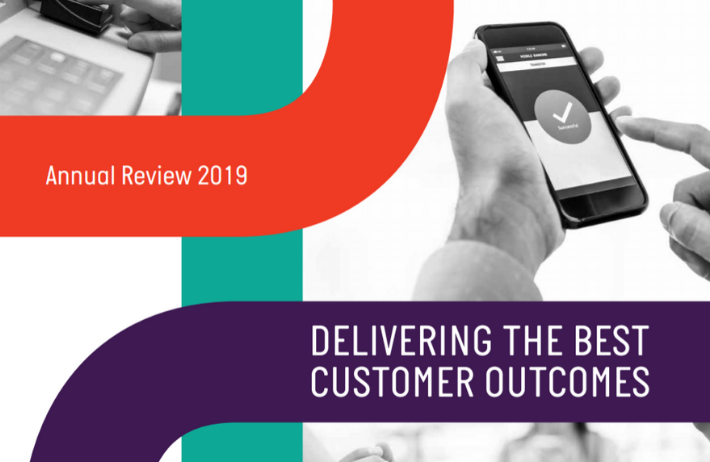
AusPayNet 2019 Annual Review Released
Australian Payments Network 2019 Annual Review
AusPayNet has released their 2019 Annual Review, which outlines their work this year.
AusPayNet 2019 Annual Review has been released.
As the payments industry association, AusPayNet’s network includes more than 130 members and participants. They bring together a diverse range of organisations including financial institutions, major retailers, payment systems operators and technology providers.
Highlights of the Annual Review include:
- A trust framework to improve customer convenience, privacy and security on our digital world
- A CNP Fraud Mitigation Framework to help the e-commerce community protect their customers and businesses.
- New standards enable merchants to offer card payments more cost-effectively and efficiently
- New guidelines underway to improve accessibility for people with disability
- New awareness programs to help those individuals and sectors that still use cheques transition to digital payments.
Find out more about AusPayNet’s key outcomes for 2019 and consumer payments trends by downloading the report here.
Source: Australian Payments Network AusPayNet

Open Banking Privacy Rules Released
Open Banking Privacy Rules Released
Draft privacy safeguards released for consultation.
An extensive set of privacy rules that will accompany the introduction of the Consumer Data Right (CDR), including Open Banking, will be legally binding statutory provisions.
The Office of the Australian Information Commissioner has released draft privacy safeguards for consultation. They cover consent rules, disclosure and reporting obligations, limits on data collection, obligations to destroy certain data, and OAIC enforcement powers.Some of the privacy safeguards will apply in parallel with the Australian Privacy Principles, while others will override APPs.
The Consumer Data Right is designed to give people greater choice over how their personal data is used and disclosed. It allows consumers to access particular data and transfer it to an accredited person.
The Information Commissioner will have power to investigate possible breaches of the privacy safeguards and use a range of enforcement powers, including penalties.
The OAIC says the CDR system is built on consent, and an accredited person may only collect and use CDR data with the consent of the consumer.
A consumer can withdraw consent at any time.
An accredited person must not collect more data than is reasonably needed in order to provide the requested goods or services.
Each accredited person and each data holder must provide a “consumer dashboard” for CDR consumers, which is an online service consumers can use to manage data requests, authorisations and associated consents for the accredited person to collect and use CDR data.
CDR entities must have a policy describing how they manage CDR data. The policy must be available free of charge. They must handle CDR data in a clear and transparent way.
Accredited data recipients must provide consumers with the option if dealing anonymously or “pseudonymously” with the entity. Consumers must have the option of not identifying themselves.
In the banking sector, an accredited data recipient will not be able to deal with a consumer ion an anonymous basis because there may be obligations to verify identity prior to providing goods and services.
Accredited persons are prohibited from attempting to collect data under CDR unless it is in response to a “valid request” from the consumer. The CDR regime is driven by the consumer.
Accredited persons are required to destroy unsolicited data that the entity is not required to retain.
Accredited persons must notify the relevant consumer when they collect CDR data. This must be done through the consumer dashboard.
CDR data cannot be used for direct marketing.

NPP Roadmap Released (New Payments Platform)
New Payments Platform (NPP): Roadmap Released
Roadmap details ongoing plans to extend and enhance the NPP
Since launch of the New Payments Platform, the industry has seen a continual increase in consumer awareness and transactional volume. NPPA is now shifting focus to ensuring the platform delivers quality and new functionality. They have now released the NPP roadmap.
NPP Australia (NPPA) has today published details of its ongoing investment in the NPP, to extend and enhance the capability of the platform to meet the needs of participating financial institutions, payment providers and users within the wider payments ecosystem.
The public release of the roadmap comes less than two years since the NPP commenced enabling Australian consumers, businesses and government agencies to make real-time data rich payments between accounts at participating Australian financial institutions.
Today approximately 85 banks, credit unions, building societies and fintechs are connected to the NPP (either directly or indirectly) and more than 66 million accountholders can make and receive payments via the NPP. At the same time, more businesses and corporates are realising the benefits
of the NPP with approximately one in three transactions involving a payment to or from a business.
As at the middle of October, the NPP is processing an average of approximately 750,000 payments worth $750 million each day. Recently more than $1 billion in transactions was processed in a single day and the largest single transaction settled on the platform so far is $500 million.
Innovative use-cases that tap into the NPP’s core capabilities have also started to emerge. This includes: independent payments solutions providers such as Monoova and Assembly Payments; a service that enables employees to access their income as they earn it in real-time (Earnd); a consumer-to-business payment service that uses the NPP’s speed and PayID to deliver real-time
validation and processing for online payments (Azupay); and combining the NPP’s speed with blockchain to create equity management, compliance and share registry services (Block8).
CEO of NPP Australia, Adrian Lovney, says making the Roadmap publicly available ensures NPP momentum will continue.
“We’re focused on developing additional native capability that can support a range of use cases, which can be used by participating financial institutions and third parties to do different things. By developing native platform capability, governed by a common rules framework administered by
NPPA, it is akin to providing ‘building blocks’ that others can put together in different ways to deliver payment products and services outside the platform.
“NPPA does this by establishing different ‘business services’ that have different uses. A business service can either be used in its native form by participating financial institutions and third parties, or it can be further built upon and commercialised by an organisation wanting to develop an Overlay
Service on top,” Adrian said.
Available to be downloaded here, the Roadmap includes the development of foundational capability to enable third party payment initiation on the NPP. Central to this proposition is the account-holder’s authorisation (or consent) for payments to be initiated on their account with the creation of a digital
payment arrangement or a ‘mandate’ in advance of the payments being made.
This functionality increases the visibility and control that account holders have over these various payment arrangements, which will resolve some of the most frequent pain points with these kinds of payments today. It could enable a range of use cases in the future, such as recurring or subscription
type payments, ecommerce and ‘on behalf of’ services, such as a corporate using a cloud accounting software provider to do their payroll run.
The roadmap also includes structured data capabilities, which will support B2B payments and commercialisation opportunities such as payroll, superannuation, and einvoicing and a business service to support the domestic leg of inbound cross-border payments.
In addition to the capability centrally developed by NPPA and outlined in the Roadmap, individual participating financial institutions are also developing capability to support NPP payments, in a number of areas, such as APIs and conversion of bulk payment files, according to their own business
objectives and implementation timing.
Collectively the development and delivery of the capabilities contained in the NPP Roadmap will significantly enhance the platform’s functionality and drive further use of the platform by third parties.
www.nppa.com.au
www.payid.com.au
Source: NPP Australia

ASIC Internal Dispute Resolution Update
ASIC Internal Dispute Resolution Update
ASIC are in the finalisation stage of updating Regulatory Guide 165, which governs Internal Dispute Resolution processes within Financial Firms, which becomes effective December 2019.
As advised in Indue’s article in the last edition of our Industry Update, ASIC proposed changes via a consultation paper to Regulatory Guide 165 (RG 165): ‘Licensing: Internal and external dispute resolution‘, which sets out requirements for a financial firm’s Internal Dispute Resolution (IDR) processes.
This consultation paper, which was published in May 2019, outlined a number of new measures to strengthen the integrity and effectiveness of the IDR systems of financial firms. Since the release, ASIC has invited stakeholders in the finance industry to provide feedback on the proposals and have directly consulted with a number of these stakeholders for further input.
New Changes will be Enforceable
Upon the consolidation of feedback and careful consideration of all 68 submissions, ASIC recently held a stakeholder meeting to provide an update on changes to RG 165. ASIC confirmed that all companies, regardless of size, will be required to comply with all of the new changes outlined in the regulatory guide. RG 165 will, in future, be an “approved” ASIC standard, therefore enforceable as part of Australian Financial Services License (AFSL) and Australian Consumer Law (ACL) conditions. If obligations that are considered ‘core’ are breached, this will likely be a civil penalty breach. However, ASIC has yet to provide its final decision on this matter.
Noteworthy (Intended) Changes
Some of the noteworthy intended changes and further clarifications provided by ASIC are:
| Proposed Change |
|
|
|
|
|
|
|
|
Timeline
ASIC expects that RG 165 will be finalised by December 2019 and anticipates about a month between the finalisation and enforceable provisions commencing. Requirements for data collection and reporting are being further revised and as such, timeframes for these elements have been delayed; however, no official dates have been provided. ASIC will consult with stakeholders during the first half of 2020 to define and finalise these requirements, as well as other elements such as including the need to record demographic information for all complaints.
Indue will provide its clients with a further update following the final publication of RG 165.
References
Indue’s June 2019 article ‘ASIC Strengthening Dispute Resolutions (IDR) in Finance Sector’ article
To view the consultation paper, please visit the ASIC website.

Card-Not-Present (CNP) Fraud Mitigation Framework
Card-Not-Present (CNP) Fraud Mitigation Framework
The banking industry has commenced the execution phase of this framework, which aims to tackle the most prevalent type of card fraud.
Long gone are the days when a cardholder could only make a purchase at point of sale with their physical card. The ongoing advances in payment capability previously paved the way for consumers to make online Card-Not-Present (CNP) transactions, but has now gone even further by enabling these CNP transactions to be initiated from a mobile wallet with fingerprint authentication.
Nevertheless, the fundamental transaction that underpins these digital advances is the CNP transaction, which is gaining momentum as one of the most popular ways Australians like to transact. The CNP transaction growth rate has increased from 14% in 2017 to 27% in 2018*, which may be partially accounted for with the increase of mobile in-app payment opportunities (where a consumer uses a retail app and selects a card stored in their mobile wallet to make the purchase). More avenues for CNP transactions means more opportunities for card compromise and fraud spending.[/vc_column_text][vc_column_text el_class=”ind-textBox”]
CNP Fraud Mitigation Framework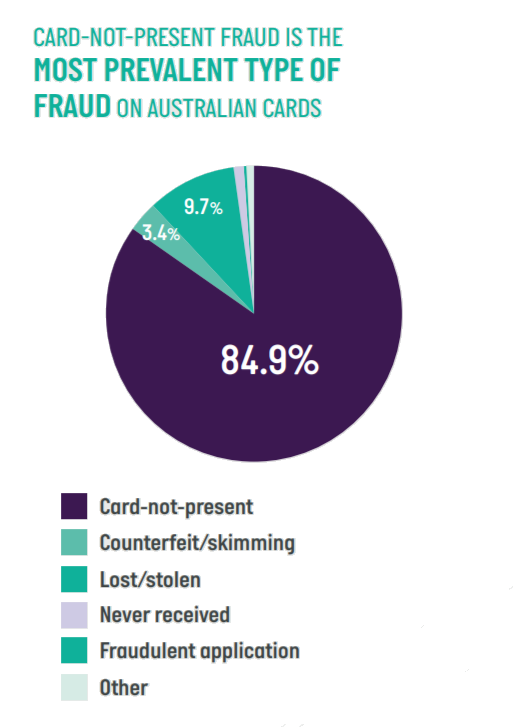
Earlier in the year, Indue advised its clients of the significant industry-wide initiative to combat the increasing CNP transaction fraud. Championed and led by the Australian Payments Network (AusPayNet), the CNP Fraud Mitigation Framework aims to target the most prevalent form of fraud in the card payments space.
According to AusPayNet’s ‘Australian Payment Card Fraud 2019’ report, although the rate of CNP fraud growth has decreased since previous years, CNP fraud still accounts for 85% of all card fraud on Australian cards.
The collective industry acknowledged the need to address this fraud concern by establishing this industry-wide framework.
CNP Mitigation Framework in Action
The CNP Mitigation Framework took effect in 1 July 2019 after a long collaboration and consultation process to define the minimum standards that both card Issuers and Merchants need to meet as a means to reduce the rates of CNP fraud. These standards provided industry-agreed fraud thresholds that Issuers and Merchants were to report against. Failing to meet these thresholds would require them to implement additional security measures or be subjected to penalties. “Breaches of these thresholds will trigger obligations for Merchants and Issuers to take action. Repeated breaches over a period of time could ultimately result in financial penalties for Issuers or Merchants’ Acquirers,” AusPayNet said in an industry release.
Watch and See
In July 2019, Indue consolidated the required statistical data on behalf of our financial crimes clients and submitted the relevant reporting to AusPayNet. Indue has since continued to submit monthly reporting to AusPayNet according to the CNP Fraud Mitigation Framework requirements. As this new reporting becomes embedded in the operation and maintenance of the card payments ecosystem, AusPayNet and indeed the entire industry will get a glimpse into whether this new framework is making inroads into the chief objective of curtailing the growth of CNP fraud. Coupled with the 3DS 2.0 mandate issued by both Visa and MasterCard, this reporting and accountability should have an impact on fraud numbers. It will be an interesting space to watch over the next two to four years.
References
*Source: Reserve Bank of Australia
AusPayNet’s Australian Payment Card Fraud 2019 report
Indue’s March 2019 CNP Fraud Mitigation Framework article

New Payments Platform (NPP) – Mandatory Compliance Regime
New Payments Platform (NPP): Mandatory Compliance Regime
The NPPA looks to ensure quality and security for the New Payments Platform
Since launch of the New Payments Platform, the industry has seen a continual increase in consumer awareness and transactional volume. NPPA is now shifting focus to ensuring the platform delivers quality and new functionality through the NPP Mandatory Compliance Framework
NPP Mandatory Compliance Framework to Ensure Quality Standards
In June 2019, the NPPA Board approved the introduction of NPPA’s Mandatory Compliance Framework (MCR) to ensure that all participants comply with a minimum set of capabilities such as performance, security and integrity requirements.
The key objective of implementing a compliance framework, which introduces strong risk and governance procedures for the payment stream, is to ensure a standard of quality across the board for all stakeholders – participants and customers alike.
The NPPA Board will designate requirements as mandatory compliance requirements, categorise them and determine the effective compliance date. NPPA will enforce the adherence to the MCR and any participant found to be non-compliant to the MCR may be subjected to financial penalties.
Requirements for Integrity & Operations
The MCR will be applied across two categories – integrity and operational requirements. Integrity requirements encompass items that are integral to the operation of the NPP. Operational requirements refer to items that do not necessarily affect the functional operation of the NPP, but create operational impacts. Fundamentally, the compliance to these new requirements ensures that all NPP participants are providing a minimum standard of quality and the core payment functionality is uniform across all participants.
By applying this minimum standard, the NPPA is also aiming to make the commercialisation of NPP (and future NPP products) easier for all participants.
Technical Controls and Monitoring to Enhance Security
It is now timely that NPPA has decided to enforce new Addressing Service protocols to ensure the platform provides customers with confidence that they can make payments in a secure environment. With the execution of the new Addressing Service requirements, new technical controls and monitoring will need to be put in place by all participants to reduce any potential security incidents and identify any system vulnerabilities early. These new requirements were approved by the NPPA Board in September 2019 and will be designated as mandatory compliance requirements (and thus subject to non-compliance charges) by 12 December 2019.
Indue has engaged directly with its NPP clients to provide the detailed requirements and ensure compliance.

eftpos: Making Digital In-roads (Digital Acceptance Pilot)
eftpos: Making Digital Inroads (Digital Acceptance Pilot)
eftpos, in conjunction with Indue clients, has successfully conducted a digital transaction in the Digital Acceptance Pilot program.

It has been quite a busy year for eftpos. With the increase in the number of banks offering merchant choice routing, (which enables merchants to choose to route transactions via their preferred network) and enabling mobile payments via the eftpos network, eftpos has definitely advanced its value proposition for its customers. One key initiative that is critical to the eftpos network ecosystem is its Digital Acceptance Pilot program.
This aligns with eftpos’ commitment to updating its product suite to continually meet changing merchant and consumer needs.
Digital Acceptance Pilot Program
Digital development will continue to be a key focus for eftpos over the coming year as Australians change the way they pay for goods and services.
This functionality enables eftpos cardholders to make online purchases at participating merchants using their eftpos card,. This is an unprecedented capability for the scheme.
eftpos collaborated with all parties within the transaction journey (Issuers, Acquirers, Switch Processers, Merchants and other service providers, including Indue) to develop and implement this new capability. Indue undertook a program of work with its eftpos clients, which commenced in 2018, to assist with the implementation of the required system changes to support online eftpos transactions.
First-Ever Online eftpos Transaction
In July 2019, eftpos coordinated a production validation program between card Issuers and participating Merchants to validate the new digital functionality changes. Three of Indue’s clients participated in testing and successfully made online transactions with selected merchants. The hard work undertaken by multiple stakeholders, including Indue and Indue’s clients, in the Digital Acceptance program was finally realised when the first-ever online eftpos transaction occurred during this validation. Previously, eftpos cardholders were unable to conduct online transactions using their eftpos cards.
This one transaction has fundamentally changed the payment landscape. Now eftpos joins the other card schemes in the digital arena.
eftpos Enters the Digital Arena
In September 2019, eftpos began a Digital Acceptance Pilot Test program which has since seen more successful transactions made between several Merchants and Issuers. With the new functionality now validated in the live payments environment, this will have significant implications on the balance of power between the major card schemes due to the fostering of healthy competition.
As more merchants become enabled to accept online eftpos transactions, the industry will no doubt see some movement of transactional volume from other card schemes to the eftpos network.
Indue is extremely excited about the implications of this new capability for its clients – a richer cardholder experience through the expansion of their product’s reach.
API Economy
With around 50 million eftpos-enabled cards in market, eftpos aims to help card Issuers create innovative, bespoke and secure payment experiences for their customers. The company is building an API gateway, with the first APIs expected to be in production early in the new year, potentially bringing new opportunities for innovation across the eftpos network.

Open Banking Update: Consumer Data Right Legislation (CDR)
Open Banking Update: CDR Legislation
The Federal Government recently passed the Consumer Data Right (CDR) legislation, which ushers in the new era of Open Banking for the financial sector.
On 1 August 2019, the Federal Government passed the Treasury Laws Amendment (Consumer Data Right) Bill 2019, which subsequently received Royal Assent on 12 August 2019. Open Banking is the first instalment of the Consumer Data Right legislation (CDR) in Australia, which gives individuals more control over their own data.
This legislation will allow individuals and businesses the right to obtain certain types of their data, which they have already shared with their financial institution, as well as provide authorised third parties access to this data.
Open Banking Rules & Guidelines
The Australian Competition and Consumer Commission (ACCC) has since published the final version of the Consumer Data Right (CDR) legislation governing elements that are central to the implementation of the CDR in the financial sector.
As the CDR regime will allow consumers to request data holders to provide their data to accredited entities, the ACCC have now also released draft guidelines on the CDR accreditation process and on the insurance and information security requirements of accreditation. The intent of the guidelines is to provide information to assist applicants with lodging an application for accreditation as well as guidance on how applicants are to meet the obligations to protect data from misuse and unauthorised access.
Timeline
The current CDR regime rollout timeline is as follows:
| Date | Requirement |
| July 1, 2019 | Big 4 Banks to provide generic product data for deposit accounts and credit cards via API |
| Feb 1, 2020 | Big 4 Banks to provide customer specific data for deposit accounts and credit cards, and generic data for mortgages and home loans, mortgage offset accounts and personal loans, via API |
| July 1, 2020 | All other ADIs to provide generic data for deposit accounts and credit cards via API |
| July 1, 2020 | Big 4 Banks to provide customer specific data for mortgages and mortgage offset accounts, and generic data for all other loans, leases and specialist accounts (e.g. trust accounts, pensioner deeming accounts), via API |
| Feb 1, 2021 | All other ADIs to provide customer specific data for deposit accounts and credit cards via API, and generic data for home loans, mortgage offset accounts and personal loans via API |
| Feb 1, 2021 | Big 4 Banks to provide customer specific data for all other loans, leases and specialist accounts (e.g. trust accounts, pensioner deeming accounts) via API |
| July 1, 2021 | All other ADIs to provide generic data for all other loans, leases and specialist accounts (e.g. trust accounts, pensioner deeming accounts), and customer specific data for home loans, personal loans and mortgage offset accounts, via API |
| Feb 1, 2022 | All other ADIs to provide customer specific data for all other loans, leases and specialist accounts (e.g. trust accounts, pensioner deeming accounts) via API |
The ACCC has advised that the Big 4 Banks have already commenced providing generic product data (as required by 1 July 2019) on a pilot basis. The ACCC has also now selected ten entities to participate in the testing of the CDR ecosystem in the run up to the next milestone in February 2020. The selected participants offer a broad range of innovative services to consumers, including services to manage personal finances, facilitate book keeping and assess a consumer’s financial status.
Requirements for Indue ADI Clients
From 1 July 2020, all of Indue’s ADI clients will be required to meet the obligation advised above. The required APIs for data transfer will need to be developed in accordance to the Consumer Data Standards, which have been finalised by CSIRO’s Data61 as the appointed Data Standards Body for the CDR regime. Indue recommends that clients engage with their core banking platforms to understand what API solutions are available to support these new requirements.
Indue is currently looking into opportunities for hosting client sessions on Open Banking to assist in the understanding of requirements, impacts and implications of this new data regime for our clients.
References

Insight: The Disruptive Threat
Insight: The Disruptive Threat
By now, everyone in Financial Services has seen a headline with dire warnings of “disruption” – by one of the Internet Giants like Amazon or Facebook, or by a regional FinTech startup in Australia. Industrie&Co’s Lukas Bower explains how financial services providers can respond to the disruptive threat.
How can you Respond?
The disruptive threat is indeed real, but how does a mid-tier financial services provider respond?
Many mid-tier providers in Australia focus on a specific region, industry, or some other slice of the broader market. To combat disruption, your solution lies in uncovering and addressing a need that is uniquely important to your specific community of customers.
The “Design Sprint” Approach
If you read the trades, you’ll be aware that customer-centricity is the norm in today’s digital business.
Early customer-centric methodologies focused on the desirability of an idea – exploring whether a customer wants a new feature, by testing an idea with real customers.
As customer-centric approaches have matured, they have expanded to look at technical feasibility and commercial viability as well. This end-to-end exercise is called a Design Sprint – which can be completed in a matter of weeks.
Feasibility & Viability
Feasibility explores your existing technology landscape (CMS, CRM, and any other customer-facing systems), and determines if an idea customers love is technically feasible to implement. Feasibility considers your existing environment – and calls out any technical gaps that need to be addressed. If gaps exist, the feasibility phase tests whether they can be addressed through short Tech Spikes – simple technology tests that prove or disprove whether a technical solution will work.

Viability looks at the idea from a business lens. Will it save more money than it costs to implement? Will it retain more customers? Will it help acquire new customers? How long will it take to implement? What training will your team need, if any, to put the new idea in the market?
Building the Right Thing
At the end of the Design Sprint, your business will have enough information regarding Desirability, Feasibility and Viability to decide whether or not you should invest in an idea – and enough customer feedback to understand how strongly they feel about your proposal.
This ensures your business will invest in building the right thing – and avoid spending time and resources on ideas that don’t deliver customer and business value.
Why This Matters
Your competitors do not have the same direct and unfettered access to your customers that you have. Your access enables you to find out your customers’ unique needs and pains, and tailor your solution to fit – using a Design Sprint.
Building the right thing for your customers is key. Building the right thing makes your business “sticky” by giving your customer base more reasons to remain with you – even with new alternatives emerging in your market.
This article was written by Lukas Bower (@lukasbower) Managing Director at Industrie&Co Australia. As the payment landscape continues to evolve with new technologies, new payment providers and new customer requirements, it has become increasingly evident that financial institutions must ensure they continually assess whether their products and services are meeting the needs of their market.
The implications of ignoring these ‘disruptions’ is the risk of falling behind the masses and losing out to adaptive competitors.
Responding to the Threat
Indue has partnered with Industrie&Co to enable a major Australian retailer to bring an unprecedented product into the Australian market, which is a great example of responding to the ever-advancing demands of the industry.
Interested to learn about how you can compete with industry disruptors? Join Indue’s Chief Commercial Officer, Dave Hemingway as he hosts an audience with Industrie&Co to dive deeper into the practical applications of design sprint methodology.
When
Thursday, November 14th, 11.00am AEDT
 Industrie&Co is an Innovation and Technology Consultancy. With offices in Sydney, Melbourne, Hong Kong and Singapore, Industrie&Co helps Financial Services companies identify and build winning product ideas – from Design Sprint through to launch. Industrie&Co has a strong relationship with Indue, and can help implement next-generation payment solutions. To find out how, please get in touch and share your vision with us.
Industrie&Co is an Innovation and Technology Consultancy. With offices in Sydney, Melbourne, Hong Kong and Singapore, Industrie&Co helps Financial Services companies identify and build winning product ideas – from Design Sprint through to launch. Industrie&Co has a strong relationship with Indue, and can help implement next-generation payment solutions. To find out how, please get in touch and share your vision with us.

ASIC seeks consultation on school banking review
ASIC seeks consultation on school banking review
ASIC is seeking the public’s view of school banking programs as part of its ongoing review of their use and impact in primary schools.
According to the ASIC website, their review seeks to:
- Understand how these programs are implemented and how they are marketed to school communities;
- Understand how students are engaging with these programs and the accounts established through these programs while they are at school and after they leave school;
- Assess the benefits and risks of school banking programs; and
- Develop principles for appropriate conduct and good practice in the implementation of school banking programs.[/vc_column_text]
Banking Consultation & Consumer Research
ASIC met with deposit-taking institutions (ADIs) to investigate various programs, including how they run their programs, participation rates, interest rates, incentives such as toys offered to students, and how they use branding.
It also commissioned qualitative and quantitative consumer research. The research found that overall satisfaction with these programs is high, “however, there was some concern about the lack of digital interaction and substandard interest rates.”
With around 60 percent of primary schools participating, school banking programs have been embraced by Australian families for decades. According to ASIC’s Consultation Paper, while parents rate the programs highly and are “often drivers for student participation in school banking programs”, the research into consumer saving behaviour may not be as supportive.
“The research suggests that students who retain interest in the program are more likely to be internally motivated – they do not rely on their parents to fill out the deposit slip or remind them to take money to school.
“There is limited evidence among past students that school banking programs have a lasting impact on their saving behaviour.”What’s that? A dollar might not go further?
“Their recall of the program is often limited to the ritual involved. The research findings indicate that school banking increases the chances of a participating student remaining with the ADI that provided the program after they finish school and progress to adulthood. Findings also suggest that non-participating students were also likely to remain with the same ADI they banked with as a child.”
ASIC aims to develop principles for appropriate conduct and good practice in the implementation of school banking programs, to ensure they’re in the interests of young Australians.
Read ASIC’s “Review of school banking programs Consultation Paper ” here.

NPP Strategic Focus – The Road Ahead
NPP Strategic Focus – The Road Ahead
The NPP Strategic Focus: Since the launch of the New Payments Platform (NPP) in early 2018, the payments industry has collectively made over 55 million accounts accessible to NPP payments, registered more than 2.8 million PayIDs and continue to make 500,000+ NPP transactions on a daily basis.
In addition to the new payment stream gaining steady momentum, the NPPA will be sharpening their NPP strategic focus for the near future on the back of critical findings commissioned by the RBA.
RBA Recommendations Report
The RBA released a report last month on the functionality of, and access to, the New Payments Platform. After public consultation and assistance from the Australian Competition and Consumer Commission (ACCC), the report outlines 13 recommendations that addresses the issues identified during the consultation. The key recommendations involves:
- enabling fair and open access to the platform for both customers (via NPP participants rolling out NPP services to their entire customer base) and payment service providers (via amendments to regulations to allow for non-ADI entities to potentially become an NPP Participant)
- providing visibility of additional NPP functionality that the NPPA have committed to develop via a semi-annual product roadmap publication
- more transparency of NPPA Participant application outcomes and summary of key reasons in cases where applications were not supported by the NPPA
- providing more visibility on transaction fees
In a statement following the release of the RBA conclusions paper, the NPPA welcomed the comprehensive analysis undertaken and confirmed their intent to continue to enhance the capabilities of the NPP that would be available to be utilised by parties outside of the Platform or built upon by overlay service providers.
NPPA will provide a comprehensive public response by the end of July.
NPP Strategic Focus
Over the past year, the NPPA have identified a number of opportunities to further enhance and optimise the existing product functionality to meet the needs of a range of stakeholders and end users.
Extension of the API Framework
The NPPA published its first version of standardised APIs for NPP in late 2018. The second version of the framework, which was released in May 2019, will see the extension of the API set to include different NPP functions, such as cancelling a payment, requesting a payment return and notification of a payment. The NPPA has established an API sandbox, which is a secure, cloud-based test environment that enables developers to test API solutions in an environment that is independent from the NPP basic infrastructure. This test environment will continue to evolve over time with the expansion of the API framework.
QR Code Standards
Last month, the NPPA released a standard for the use of QR codes to generate NPP payment messages. The standard defines the mandatory data elements required to initiate an NPP payment via a QR code. This new capability can be applied to a range of use cases, such as bill payments, invoices, e-commerce and eventually point-of-sale payments.
Consent and Mandate Management Service (CMS)
The solution design phase for this new service is nearing completion. The CMS is a service to facilitate the creation and secure central storage of customer-authorised recurring payment instructions across different financial institutions. The CMS will provide customers with more visibility and control over their payment authorisations. It is anticipated that this new capability will enable an easier transition for customers to switch banks by allowing them to manage their payment authorisations and update the links to bank accounts themselves.
Unattended Payments
The NPPA will explore opportunities to enable the platform to support broader forms of payments with a key emphasis on unattended payments. Payroll, tax and superannuation payments will be the three main types of unattended payments that will be considered. The NPPA aims to leverage the existing NPP ISO20022 standard to support these payment types, as the messages provide structured data fields to carry a richer data set in comparison to its direct entry equivalent. The NPPA will define the specific message elements for each type of payment.
Third-Party Payment Initiation
Using payment initiation messages, an authorised third party can initiate a payment on behalf of customers of a financial institution or request payments to be made by a customer. The NPP was designed to support these types of messages, but the industry deferred the implementation until after the full launch. These new messages will support key use cases, such as authorised third parties initiating payroll, superannuation and tax payments on a customer’s behalf.
The NPPA believe that the development and delivery of these capabilities will significantly enhance the platform’s functionality and drive further use of the platform by third parties and end users.
Resources

eftpos Tokenisation – Making Headway in 2019
eftpos tokenisation – Making Headway in 2019
eftpos has extended its reach in both the mobile payments ecosystem and merchant choice routing initiative and will be continuing its journey into tokenisation.
It has been a busy half of the year for eftpos with steady progress through a number of their key initiatives. Indue has been working closely with eftpos in the past few months to flesh out requirements and understand the scope and impacts of changes as a result of these new initiatives.
Merchant Choice Routing
eftpos confirmed in May that at least two of the major banks (ANZ and Westpac) have now joined Suncorp and Tyro Payments in offering their merchant customers the choice to route contactless transactions on multi-network debit cards. Allowing merchant choice routing gives merchants an opportunity to route transactions via the lowest-cost network and better manage the costs of accepting payments. This new choice also increases competitive pressure between card schemes to continually reassess scheme fees and interchange. Cardholders can still retain control of what network their transactions are routed through by inserting their card and choosing the account to use for the transactions.
Indue is well progressed in its program of work to support this eftpos initiative and is collaborating with First Data to implement the required changes. Currently, no system changes from Indue’s eftpos card-issuing clients are required to be compliant with the mandate; however, optional transaction message fields are available to provide additional information if desired.
eftpos Mobile Payments
eftpos is working across the industry to enable cardholders to register and use their proprietary cards or multi-network debit cards for mobile payments. Suncorp has joined ANZ in offering their customers the opportunity to pay via their eftpos cards with Apple Pay. eftpos has also expanded its reach of Google Pay to St. George, Bank of Melbourne and BankSA customers. These customers can now access eftpos CHQ and SAV from their mobile phones, which is a major win for cardholders who want to access services like eftpos cash out or who previously did not have the ability to enjoy the convenience of leaving their wallet at home.
One of the key initiatives in Indue’s Mobile Payments roadmap for FY19/20 is integration into eftpos’ Token Service Provider (TSP). Through this integration, Indue will be able to offer its eftpos card issuing clients the opportunity to provide Apple Pay or Google Pay to their customers.
eftpos Tokenisation
The eftpos TSP is responsible for tokenisation, which is the removal and transposition of confidential card data to a unique digital ID or token. This is a fundamental component in enabling mobile and digital payments whilst ensuring consumers are not compromising security for convenience.
eftpos has been working with the industry and merchants to implement the ability for cardholders to use their proprietary debit card or access their savings account through their multi-network debit card in an online environment. The use of eftpos’ TSP for token provisioning will be essential to enable this functionality. Cardholders will create an account with a registered merchant and provide their eftpos card details. The merchant subsequently confirms the card details with the card issuer and upon successful confirmation, the eftpos TSP tokenises the card number. Only the token number is stored at the merchant for future use. Customers can initiate future purchases from this merchant without the requirement to enter card details and merchants can also initiate payments with previous authorisation from the cardholder (i.e. recurring gym payment).
Indue has received detailed requirements to support the merchant token requestor functionality and is currently undertaking further analysis to understand the changes, which will be included in the eftpos 19.04 release. Indue will engage First Data and our eftpos card-issuing clients once we commence the planning phase of our program of work.

Mobile Payments Initiatives – What’s on the Cards for FY20?
Mobile Payments Initiatives – What’s on the Cards for FY20?
Upon successful launch of our Mobile Payments solution, Indue will be looking at a number of key mobile payments initiatives that will bolster the value and convenience of this digital technology for our clients.
Since the last quarterly industry update, Indue has successfully launched our Mobile Payments solution with Apple Pay and Google Pay alongside our lead client, BankVic. There was strong customer uptake on from the outset with a steady increasing trend in both customer sign-up and mobile transactions. So which mobile payments initiatives are next?
Indue is now gearing up for the launch of the first wave of new mobile clients scheduled for July-September 2019. The client list for the second wave is close to capacity and Indue is currently in the scheduling phase with these partners. In addition to enabling physical payment cards to be used for mobile transactions, Indue is working closely with a key client to commence the issuance of virtual gift cards. All processes relating to account setup, token provisioning and transaction processing is completed in the digital space enabling a quick and streamlined cardholder journey from card establishment to shopping cart.
Three New Product Pillars
Indue will be focusing on three key mobile payments initiatives for the Mobile Payments Product Roadmap:
1. eftpos Integration – Indue is currently working closely with eftpos to finalise requirements to integrate into the eftpos Token Service Provider (TSP). This project will see the establishment of secure infrastructure between Indue and eftpos to support the provisioning of mobile tokens for proprietary cards and multi-network debit cards.
2. In-App provisioning enables cardholders to provision their credit or debit card directly from their banking app to either Apple Pay or Google Pay mobile wallet by clicking on a button, which improves the customer experience by removing the need for cardholders to manually provision their card to an mobile wallet.
3. Instant Issuance – When a credit or debit card needs to be replaced lost/stolen scenarios, instant issuance enables a cardholder to continue to transact via their mobile wallet while waiting for their physical replacement card to arrive in the mail and then activate for use.
Indue will also look to commence the work to support other OEM wallets such as Samsung Pay, Garmin Pay and Fitbit Pay, thus broadening the Mobile Payments reach and adding to the value proposition our Mobile clients can offer to their customers.
Tokenisation is the New Black
The industry is establishing a framework to promote security and interoperability within card payments in a remote payment environment, which is currently referred to as the Secure Remote Commerce (SRC) protocol. One of the key tenets for this initiative is the use of tokenisation, which Indue already fully supports with our Mobile Payments offering. Tokenisation involves the transposition of original payment credentials (i.e. payment card number) with a digital ID or token. This removes the sensitive nature of the payment data and renders the information useless if compromised. Indue anticipates that the card schemes will mandate the use of tokenisation technology to target card-not-present fraud for ecommerce transactions, which will further leverage our Mobile Payments tokenisation infrastructure to support this industry initiative.

Extension of BINs – Global Move to Preserve Growth in Cards
8-Digit BINs – Global Move to Preserve Growth in Cards
Increasing BIN demand across the card payments network has created the need for the extension of BINs from the first six-digits of a Primary Account Number (PAN) to the first eight-digits of a PAN.
Background
In 2015, the International Organization for Standardization (ISO) first announced a possible extension of BINs. Its intent is to migrate from the current six-digit Institution Identifier Number (IIN) standard to an eight-digit standard and published the new standard in 2017. The IIN is the ISO term for a Bank Identifier Number (BIN). BINs are the six-digit numeric identifiers assigned to card-issuing financial institutions in the card payments ecosystem.
BINs are a fundamental component of electronic payments. A continuous supply of BINs is essential to help ensure a sustainable global payments ecosystem, enabling growth and innovation in an increasingly digital world. Increasing BIN demand across the card payments network has created the need for the extension of BINs from the first six-digits of a Primary Account Number (PAN) to the first eight-digits of a PAN. Emerging payment technologies, including tokenisation, is a key example of an initiative that has impacted BIN demand. This new standard will ensure an adequate global supply of BINs for the card payments industry.
Visa has endorsed the new standard and is well progressed in the design and analysis phase of their program of work. The card scheme has confirmed that an increase to the length of card numbers will not occur as part of this new initiative.
8- Digit BINs: Impacts & Considerations
As of April 2022, Visa will migrate from the existing six-digit issuing BIN structure to the new eight-digit issuing BIN structure. Each individual six-digit issuing BIN within the Visa system will be migrated to 100 corresponding eight-digit issuing BINs – with each new eight-digit issuing BIN starting with the same first six digits as the original six-digit issuing BIN.[/vc_column_text][vc_single_image image=”19059″ img_size=”full”][vc_column_text]Given that the PAN length is not changing, reissuing existing cards will not be required. After the migration, existing 16-digit PANs will belong to new eight-digit issuing BINs that correspond to the original six-digit issuing BIN.
Below is a table of potential impacts to processes and systems that card issuers should consider as part of this migration:
General Considerations |
Issuer Considerations |
| Reporting | PAN Assignment Logic |
| Billing | Statementing Processes |
| Call Centre Systems | Product-specific Reporting/Processing |
| Fraud/Risk Management Systems | Cardholder Benefits |
| Dispute Resolution Systems | Loyalty Programs |
| Card Manufacturing & Personalisation | |
| Software Vendor | |
| Customer-facing Applications |
Timeline for Extension of BINs
Effective April 2022, Visa will begin assigning eight-digit issuer BINs and will require all clients to process using the new eight-digit BIN structure. Although a few years away, ISO has recommended schemes, issuers, acquirers and processers begin preparation and analysis work to identify potential impacts to established systems and processes. This is a seismic change to back-end processing, but should be as transparent as possible to the end cardholder.
Visa plans to complete its planning and development effort by 2019 after which a client-facing testing environment will be made available for all clients and third party processors.
Indue has raised an internal program to review these imminent BIN changes that will affect our card-issuing clients. Indue will work closely with Visa and third party partners (i.e. First Data, Placard) to ensure all impacts and implications are identified and addressed as part of the overarching program of work. As Indue progresses through our planning stage, we will provide timely updates to our clients and will raise individual projects as appropriate.

ASIC Strengthening Dispute Resolutions (IDR) for Financial Firms
ASIC Strengthening Dispute Resolutions (IDR) in Finance Sector
ASIC has announced a number of new measures to strengthen the integrity and effectiveness of the IDR systems of financial firms.
In May 2019, the Australian Securities & Investments Commission (ASIC) announced a number of new measures to strengthen the integrity and effectiveness of the internal dispute resolution (IDR) systems of financial firms. This was on the back of the regulatory body publishing its findings into the customer experiences of the IDR process across a range of financial service sectors in late 2018.
The report highlighted inadequacies across a number of components within the IDR process implemented within financial firms. A major theme across most of the obstacles facing a consumer when raising a complaint was the lack of transparency of the process and the lack of visibility of the status of a complaint.
ASIC is responsible for overseeing the operation of Australia’s financial services dispute resolution framework, which includes:
- setting the standards and requirements for the internal dispute resolution (IDR) systems of financial firms; and
- oversight of the Australian Financial Complaints Authority (AFCA), which is a single external dispute resolution (EDR) body established to deal with complaints about financial products and services if a complaint cannot be resolved within a financial firm’s IDR process
Based on the report findings, ASIC is proposing changes to Regulatory Guide 165 (RG 165): ‘Licensing: Internal and external dispute resolution‘, which set out requirements for IDR processes.
Some of the noteworthy proposed changes are:
- Financial firms to record all complaints received regardless of the timeframe within which they are resolved, including those resolved immediately at the first point of contact
- Financial firms to record an identifier or case reference number for each complaint received
- Financial firms to collect and record a prescribed data set for each complaint received
- Financial firms to provide IDR data reports to ASIC as unit record data and report to ASIC at six monthly intervals Financial firms to identify and escalate possible systemic issues in accordance with new ASIC guidelines
- ASIC to publish IDR data at both aggregate and firm level
- ASIC to reduce the maximum IDR timeframe for complaints from 45 days to 30 days (some exceptions apply)
- Financial firms to comply with all requirements set out in RG 165 immediately upon publication
ASIC has published the detailed proposed changes in a consultation paper and has invited the public to comment on the document. ASIC will also be holding stakeholder meetings with key financial firms to discuss the proposals. Below is a timeline of events for the consultation process:
| Stage 1 | 15 May 2019 | ASIC consultation paper released |
| Stage 2 | May – August 2019 | IDR stakeholder meetings |
| Stage 3 | 9 August 2019 | Comments due on the consultation paper |
| Stage 4 | December 2019 | Revised regulatory guide and legislative instruments released |
AFCA has supported the proposed changes to the IDR processes across multiple financial services sectors. In a recent media release, AFCA Chief Ombudsman and CEO David Locke welcomed the proposed changes to the policy, “Increased transparency is good news” he said. “It will help firms to continuously improve, and that will be good for the firms and their customers alike”.
To view the consultation paper, please visit the ASIC website.

Smartphone Digital Wallets – $22b of bank revenue at risk
$22b of bank revenue at risk from smartphone digital wallets: Morgan Stanley
Smartphone digital wallets offered by Google, Apple and other technology giants will put $22 billion of revenue across the major Australian banks at risk, according to Morgan Stanley, forcing banks to lift digital investment to stay competitive.
Almost 30 per cent of banking revenue at Commonwealth Bank, or $6.7 billion, is under threat from global technology – such as smartphone digital wallets – seeking to cut banks off from their retail customers, which could also raise the cost of deposits, the report says. It finds CBA is best placed to respond given its large technology budget and the functionality of its banking app, which Morgan Stanley rates as best among the big four.
The report, the latest in the investment bank’s “Australia in Transition” series, comes a day after CBA chief executive Matt Comyn announced the bank would add a host of new features to its app to drive customers towards its own digital wallet. He said CBA had 2 million customers already using its digital wallet.
But Morgan Stanley said customers could find smartphone digital wallets provided by Google Pay, Apple Pay, Samsung Pay and PayPal more attractive, because they allow various cards and accounts from different financial firms to be linked, whereas the banks’ wallets only offer their own products.
Source: Australian Fintech ; $22b of bank revenue at risk from smartphone wallets: Morgan Stanley[
Source: This article first appeared on Australianfntech.com.au
Find out more about Indue’s Mobile Payments solutions.

Top 6 Social & Demographic Trends for 2019
Top 6 Trends for 2019
Here are 6 key social and demographic trends for 2019 from award-winning social researcher, Mark McCrindle.
Seismic shifts in Australia’s demographic trends this year will mean that Generations Y and beyond (Australians born since 1980) will become the largest proportion of the population. Our regional cities will emerge as lifestyle cities. Our cultural diversity and generational change will, in an election year, reshape the national conversation and shake-up the traditional Australian self-image.
Here are 6 key social and demographic trends for 2019 from Mark McCrindle.
1. Simplicity as a service
After a decade of digital disruption and increasing velocity of change, 2019 will mark a year of Australians seeking simplicity. The ABS states that 35% of Australian men and 42% of Australian women state that they are always or often rushed or pressed for time.
In a world of screen saturation, 24/7 expectations and always-on technologies, the year ahead will see Australians not so much turn technology off, but to turn on apps and solutions to make their life function more efficiently. People are increasingly happy to spend money to gain time. More than just an extension of the outsourcing trend, consumers will pay a premium for simplicity and seek ways to reduce the chaos and rebalance life.
2. Redefining the Australian identity
The year ahead will bring a federal election and a state election in NSW and with these, lots of policy discussions and national conversations in who we are, and as a nation, where we want to go. In addition, the republic/monarchy debate will continue along as well as our place in the world and our ongoing connection with Europe and North America amidst our increasing connection with Asia.
As the most culturally diverse nation in the developed world, the discussions about migration, population growth and the Australian identity will have a more reflective tone in a nation that rarely gets introspective.
3. New generations dominate demographic trends
From 2019, there will be more Australians born since 1980 than before 1980. This means that Generation Y (born from 1980 to 1994) and Generation Z (born from 1995 to 2009) and Generation Alpha (born since 2010) will comprise more than half of the population. Additionally, from 2019, Generations Y and Z will comprise the majority of the workforce- outnumbering Generations X and the Baby Boomers for the first time. This demographic and economic strength will see Gen Y and Z dominate as workers, consumers, new household formers and therefore as the key demographic to engage with.
4. Recessionette
The Australian economy is performing solidly with low unemployment at 5%, low interest rates and positive, though modest economic growth. However, 2019 will continue to reveal a loss in capital city house price value, high rental and utilities costs and slow wages growth. All of this will heighten the perception of Australians having wealth declines and tight household budgets.
While Australia is entering its 28th year since the last recession, and the fundamentals are a long way from a contraction, the consumer sentiment is starting to respond as though we are in a mild one. From a householder perspective, spending behaviours will be prudent, big expenses delayed and the general consumer attitude be not quite recessionary- but perhaps recessionette.
5. Rise of the lifestyle cities
While Australia’s capital cities are home to 16 million people, more than 8 million, live in regional Australia. Of the one in three Australians living outside of the capitals, most of them live in regional cities which are Australia’s lifestyle cities offering the benefits of the capitals without the congestion, infrastructure bottlenecks and affordability challenges. 2019 will see a continued focus on the regions from policy and spending initiatives to better transport connections to open up the opportunities for the regions.
Many of these regional centres were the first to get NBN and with this a booming business economy, a thriving tertiary sector and the relocation of business and government offices. The new focus on getting migrants into the regions, matching investment and services to this population growth, and the affordability premium offered by the regions will see Australians take another look at these growing lifestyle cities.
6. The power of trust
The last few years have seen Royal Commissions and other inquiries refocus and recalibrate Australians’ trust. Few sectors have been immune, from religious and political entities to corporations in the financial sector, to aged care providers to social media and tech companies, trust has been eroded. The year ahead will see a number of social and demographic trends play out. Consumers value trust, whether it be in a brand, person or entity above price, promise or experience.
Those who can gain and keep trust, through transparency, and values-based offerings will thrive in the trust-as-premium environment.
Source: This article first appeared on mccrindle.com.au/insights Author: Mark McCrindle
Indue is excited to feature Mark McCrindle as a keynote speaker at our Leadership Forum, May 29 & 30, 2019.

How consumers are redefining customer experience
How consumers are redefining CX
In their 2019 Global Consumer Insights Survey, PwC introduces the concept of “ROX” as a way for companies to measure their success on the metric of customer experience.
The following article on customer experience first appeared on www.pwc.com.au on 26 Mar 2019. Author Chris Paxton
Customer Experience (CX) Key takeaways
- Customers are embracing technology in their pursuit of online goods and services.
- Brands wanting to increase spend and frequency should focus on the changing nature of customer experience.
- Friction-less interactions that integrate with a customer’s daily life and technology are key.
Is experience really everything? Yes, according to respondents of PwC’s 10th annual Global Consumer Insights Survey (GCIS).
Canvassing more than 21,000 consumers from 27 territories, the survey found consumers the world over want good customer experience when they shop. And what’s more, with the technology they have access to, they can now demand it.
On their wish list is an experience that is curated, channel-agnostic, socially conscious and social-media-powered. For some businesses, this is a tall order, and not one that has gotten enough attention in the past. Gone are the days when a pleasant smile is enough to gain customer favour.
Consumers, with technology at their fingertips, are redefining what good customer experience means.
Living digital
Technology is infiltrating daily life at breakneck speed. Mobiles, tablets and PCs are all being used for online shopping. This year, for the first time since the study has been run, mobiles overtook all other digital devices as the preferred shopping tool. Smartphones were reported as the go-to tech for purchasing, with 24% of respondents using a phone to shop at least weekly. The trusty PC is still close, though falling in favour, at 23% of consumers, while tablets bring up the rear at 16%

Online shopping is now the norm, with only 7% of people saying they never purchase products online.
As anyone who has coached a tech-wary relative on the ease of online banking can attest, people eventually become comfortable with the online experience. Over half of those surveyed paid bills or invoices online in the last year, with similar numbers transferring money. Entertainment, such as streaming movies and TV, is also booming, with 54% watching two to three times a week or more (over half of Gen Z streams daily).
Smartphones are also increasingly being used for payment, particularly in emerging regions where mobile phone use has leapfrogged traditional landline systems. While the technology’s prevalence is different depending on the country, globally, 34% of consumers have paid for a purchase via their mobile in 2018, up 10% on the previous year.
Frictionless shopping
Newton’s first law of motion states that a body in motion will continue to remain in motion until it is acted upon by an external force, that is, until it encounters friction. Customers, it turns out, are much the same. The less friction in their purchase journey, the more they’ll shop, and the more they’ll spend. Thirty-four percent of those surveyed said they shop more frequently due to having used Amazon, suggesting the experience – and likely its ease – encourages online shopping.
Voice assistants, such as Google Home or Amazon’s Alexa, are increasingly relevant to online shoppers with their AI hearts built around predictive, frictionless interaction (even if reality is still catching up with the promise). Nine percent of the global sample said they use the technology weekly or more. As the report notes, however, “as shopping by voice continues to catch on, companies should be thinking beyond mobile to consider how voice technology in homes, cars, and elsewhere will affect customer experience”.
Anything that adds friction will not be looked upon kindly. Click-and-collect functions, already adopted by 42% of Australian retailers, are gaining favour in the US (under the acronym BOPUS, or ‘Buy Online and Pick Up in Store’), but customers need to be helped through the experience before they will trust it – and that’s where employees come in.^
The human-digital touch
While customers want to interact with brands via digital means, this doesn’t mean they want humans out of the picture entirely.
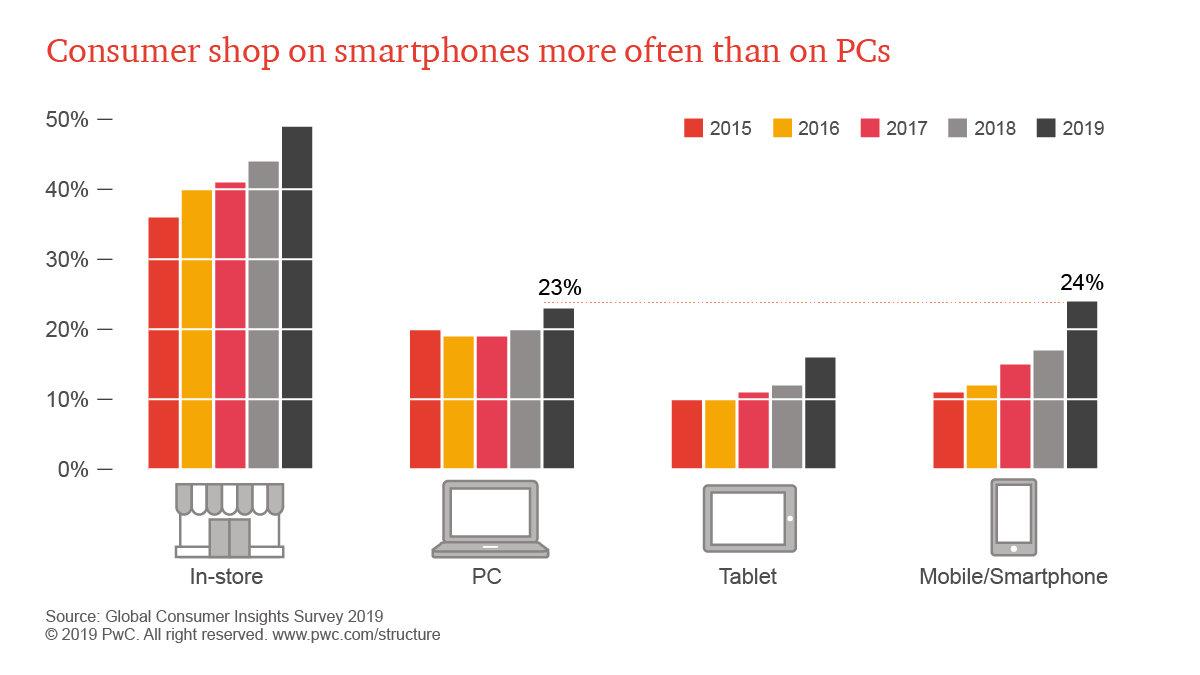 This year, smartphones have proven more popular than PCs when it comes to purchasing online, but in-store shopping is still popular. How can brands manage the mix of in-person and digital experiences?
This year, smartphones have proven more popular than PCs when it comes to purchasing online, but in-store shopping is still popular. How can brands manage the mix of in-person and digital experiences?
In PwC’s Consumer Intelligence Series report on customer experience last year we found that 59% of those surveyed believed that companies had lost touch with the human element by focusing too much on tech. One of the takeaways was that brands needed to have a good mix of technology and staff, and in particular, have tech that empowered employees to provide superior service.This finding is echoed in the current survey, particularly as regards financial services, where only 15% had purchased insurance via a digital channel, only 13% had gotten a loan and only 12% made a financial planning decision. For this industry, and others, more education is required by the customer before they feel comfortable in making a purchase. A blended experience, where in-person interaction is mixed with digital experiences throughout the journey, can prove far more fruitful in these instances.
Dreaming big
When it comes to redefining customer experience, it is also apparent that not only are consumers increasingly more willing to try online purchasing, they’re ready to increase what they do online in other ways. Almost 75% of consumers have installed as many as three health or wellness apps on their phones, and two-thirds of those surveyed are willing to access such services through nontraditional players – such as Facebook, Apple or Amazon.
 Health and wellness apps are enjoying wide adoption by consumers – particularly for weight loss and exercise.
Health and wellness apps are enjoying wide adoption by consumers – particularly for weight loss and exercise.
Health is not the only example when it comes to pushing traditional boundaries. Forty-six percent of consumers would like to have, or will consider having, an autonomous vehicle. Fifty-eight percent would consider investing in or using bitcoin or another digital currency.
It’s clear that customers are expanding their digital horizons and, as they explore, their expectations will grow with them. For brands, this means delivering a superior customer experience the entire length of the journey customers take.
Sources
This article was originally published on www.pwc.com.au. For all the insights from the Global Consumer Insights Survey, download the full report here.
^ https://www.abc.net.au/news/2017-08-30/click-and-collect-why-retailers-are-pushing-shoppers/8856504
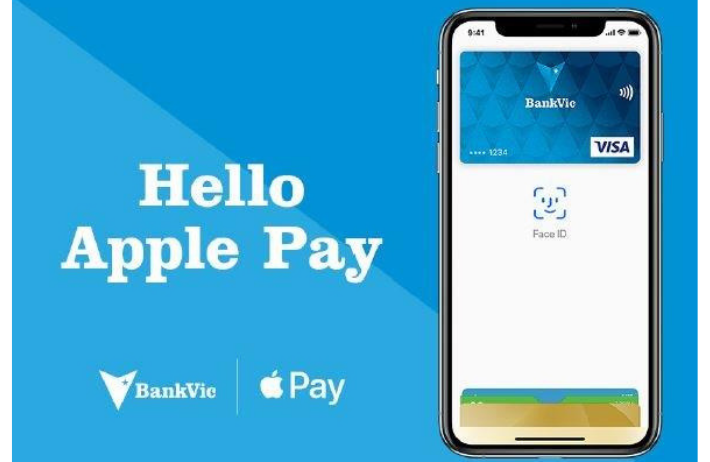
Press Release – Apple Pay now available to Indue clients
Apple Pay now available to Indue clients (BankVic first to market)
PRESS RELEASE 02/04/19 – Indue Limited today brings Apple Pay to its clients with BankVic first to market.
SYDNEY, NSW — 2 April, 2019
Apple Pay is transforming mobile payments with an easy, secure and private way to pay, that’s fast and convenient, and is available for Indue’s clients and their customers who have an eligible Visa debit and credit card from today. By introducing Apple Pay, Indue’s clients across financial services, retail, fintech and government sectors can provide customers a simpler and more engaging payment experience and BankVic members will be the first to benefit.
Security and privacy is at the core of Apple Pay. When you use a credit or debit card with Apple Pay, the actual card numbers are not stored on the device, nor on Apple servers. Instead, a unique Device Account Number is assigned, encrypted and securely stored in the Secure Element on your device. Each transaction is authorized with a one-time unique dynamic security code.
Derek Weatherley, Indue CEO said, “Consumers expect fast, convenient and secure payments and Indue is very excited to introduce Apple Pay. Indue’s mission is to ensure that the millions of Australians that access their money through our client companies have access to market leading payment products and we are proud to have delivered on that again today with the launch of Apple Pay’.”
BankVic CEO Anthony De Fazio said, “At BankVic, we are always looking to provide simple and more convenient ways for our members to bank with us, thanks to the support from Indue, we are pleased to offer Apple Pay as a new mobile payment solution.”
Apple Pay is easy to set up and users will continue to receive all of the rewards and benefits offered by credit and debit cards. In stores, Apple Pay works with iPhone SE, iPhone 6 and later, and Apple Watch.
Online shopping in apps and on websites accepting Apple Pay is simple with Touch ID, or just double-click the side button and authenticate with a glance with Face ID. There’s no need to manually fill out lengthy account forms or repeatedly type in shipping and billing information with Apple Pay. When paying for goods and services in apps or Safari, Apple Pay works with iPhone 6 and later, iPhone SE, iPad Pro, iPad (5th Generation and later), iPad Air 2, and iPad mini 3 and later. You can also use Apple Pay in Safari on any Mac introduced in or after 2012 running macOS Sierra and confirm the payment with iPhone 6 or later or Apple Watch, or with Touch ID on the new MacBook Pro.
For more information on Apple Pay, visit: www.apple.com/au/apple-pay
About Indue: Indue is a bank regulated by the Australian Prudential Regulation Authority. Australian owned and operated, Indue has over 45 years’ experience in the payment industry and provides payment solutions to a broad range of organisations. Indue is wholly owned by financial institutions, all of which have their heritage in the mutual and credit union sector.
More Information
For further information please contact:
- Ashlea Crichton, Manager Rowland Communications
- Ashlea.crichton@rowland.com.au
Download the Press Release here

Treasury Laws Amendment Bill – Arming ASIC
Treasury Laws Amendment Bill – Arming ASIC
The Treasury Laws Amendment was passed last month, which will introduce some major changes to existing penalty provisions affecting companies, financial service providers, insurers and credit providers. These changes will enable ASIC to pursue harsher penalties for those who have breached corporate laws in Australia designed to protect its citizens.
The Treasury Laws Amendment (Strengthening Corporate and Financial Sector Penalties) Bill was passed on 18 February 2019. The amendments increase penalties or introduce new penalties for offences committed by companies, financial services providers, insurers and credit providers. The bill was a result of recommendations in response to the Financial System Inquiry. Treasurer Josh Frydenberg stated that “The Government is committed to ensuring ASIC is properly armed to effectively deter, prosecute and punish those who do the wrong thing, to improve community confidence and outcomes for consumers and investors in the financial services and corporate sectors”.
Some of the key amendments are outlined below:
- There are a number of new civil penalty provisions, for example for failing to give a disclosure statement to a customer
- New criminal offences have been introduced, including failing to ensure that authorised representatives have provided disclosure statements to customers
- Many civil penalty provisions and all strict liability provisions are subject to a new infringement notice regime. ASIC may issue infringement notices instead of seeking a court ordered penalty. If an entity pays the penalty within 12 months, ASIC may not take further action against the entity in respect of that breach. Infringement notice penalty amounts are less than the maximum civil penalties
- Existing civil penalties have been increased. Maximum penalties are now
| $10,500,000; or |
| The benefit derived because of the contravention multiplied by 3; or |
| 10% of the annual turnover of the company |
(Up to a maximum of $525 million)
- Some serious offences have had criminal penalties attached to them increased to 15 years imprisonment – such as providing a disclosure document to a customer knowing it is defective.
It is recommended that affected institutions review the Bill at their earliest to understand changes to obligations to customers and associated liabilities and ensure compliance to relevant acts.
The majority of the amendments commence as soon as the Bill receives Royal Assent.
Source: Treasurer Josh Frydenberg media release 26/09/2018

NPP Consent and Mandate Service – Direct Debits 2.0
Direct Debits 2.0 – NPP’s Consent & Mandate Service
The NPPA have collaborated with New Payment Platform (NPP) Participants to implement additional functionality on top of the standard NPP payment offering with the Consent and Mandate Service (CMS).
The NPP rang in its first birthday last month, which marks one year from the launch of the New Payments Platform and its first overlay service, Osko. Since its launch, there are now 75 banks offering NPP in the Australian market and a month-by-month growth of approximately 20%^.
It is clear that the banks, consumers and payment industry in general have all embraced the first product offering on these real-time payment rails. Now the real excitement comes from what new and innovative ideas will surface to take advantage of this new payment stream.
Consumer-Driven Direct Debits
The NPPA have been busily collaborating with NPP Participants to implement additional functionality on top of the standard NPP payment offering – Consent and Mandate Service (CMS). The NPP CMS is a direct debit alternative enabling consumers to setup recurring payments with service providers. This process is similar to the establishment of a direct debit request, but in the real-time and digital context.
The other departure from the current direct debit model where the merchant holds the authority is the fact that the consumer is in control of the payments. The consumer specifies the amounts, the related merchants and the cadence and duration of the payments. Consumers will be required to provide their consent and instructions for a particular recurring payment, which will be securely stored in a central repository that can been accessed via APIs by the financial institutions or authorised third parties involved with the transaction. The use of this central store will be extensible to non-payment related transactions, which could include account information (i.e. account balance).
Industry Collaboration for the NPP Consent and Mandate Service
The NPPA have undertaken extensive research and engagement of merchants and consumers to understand current experiences with direct debit and key pain points from both end points. This information will feed into multiple working groups that are currently taking place amongst all NPP Participants to develop the technical solution and business processes that will underpin this initiative. Indue is heavily involved with these ongoing industry workshops to ensure the final solution is aligned with our value proposition to our clients.
New May NPP Webinar
Indue will be holding a complimentary webinar May 1 where we will consider the impacts one year on from the launch of the NPP and look ahead to the next 12 months, which will include the new consent management service. Find out more about the webinar here.
As the scope and project timelines are established at an industry level, Indue will reach out to all of our NPP clients to keep them up-to-date on progress and next steps.
^ Source: Reserve Bank of Australia

Open Banking Delayed – Instilling Trust in the System
Open Banking Delayed – Instilling Trust in the System
In late December 2018, Treasurer Josh Frydenberg announced that the targeted open banking launch in Australia would be delayed by eight months.
The initial 1 July 2019 public launch date has now been revised, with open banking delayed to encompass only a ‘pilot program’ to test the system. I
nstead of the commencement of actual data sharing capabilities for consumers, the ACCC and Data61 will collaborate closely with the Big Four banks to test the security, performance and reliability of the system. Other banks, fintechs and consumers who have expressed interest in participating in the pilot test will also be invited to contribute.
Open Banking is the first instalment of the Consumer Data Right (CDR) legislation in Australia, which gives individuals more control over their own data. This legislation will allow individuals and businesses the right to obtain certain types of their data, which they have already shared with their financial institution, as well as provide authorised third parties access to this data.
The revised requirement timelines are as follows:
|
1 July 2019
|
|
1 February 2020
|
|
1 July 2020
|
|
1 February 2021
|
|
1 July 2021
|
The revised timeline follows the release of the Rules Outline for the Consumer Data Right by the ACCC late December 2018. The Consumer Data Right bill has not yet been introduced into parliament. Once the bill is formally passed, the rules will be formally implemented into practice.
Industry feedback on the open banking delay
Industry feedback on the delay has been varied. The FinTech sector will likely not be too impressed with the delay as Open Banking has been touted as an industry “game-changer” that will level the playing field and allow traditionally smaller players to be competitive on more fronts. However, most stakeholders including consumers will see the value in the delay if it ensures that the industry is implementing a robust, reliable and secure system given the content that is being shared.
Open Banking can only be successful if there is inherent trust in the system and this new test phase will likely strengthen that confidence.

Card Not Present (CNP) Fraud: Keeping Pace in the Fraud Race
Keeping Pace in the CNP Fraud Race
The Australian payment industry has seen a seismic shift in the past few years from traditional retail store purchases to online shopping. This migration coupled with the strong fraud protection provided by EMV chip technology for in-person transactions has unfortunately prompted an adverse mirrored trend – an increase of fraud in card not present channels. Card not present (CNP) fraud now accounts for almost 85% of all card payment fraud in Australia and further to this, CNP fraud seems to be growing 13% year on year at an industry level.
To combat this increased threat, AusPayNet in conjunction with key industry stakeholders have initiated an industry-wide collaboration program entitled the ‘Card Not Present Fraud Mitigation Framework’. This Framework sets out the industry approach to mitigate CNP payments fraud for all members across the payment value chain – merchants, consumers, Issuers, Acquirers, card schemes, payment gateways, payment system providers, and regulators. It is a framework designed to reduce fraud in CNP online channels, while also ensuring that online transactions continue to grow and thrive. The key tenets of this framework have been established by the industry:
Guiding Principles
1. Consistently apply Strong Customer Authentication (defined below)
2. Leverage global standards and best practice from other jurisdictions where possible
3. Be technology neutral to provide choice and ease of implementation
4. Use dynamic data wherever possible to reduce fraud
5. Act now, plan for the future – deal with the current fraud issues with the ability to review and update the Framework over time.
Card Not Present (CNP) Fraud Framework: Issuer Obligations
This framework requires participants across the payment value chain to take a more active role in reducing Card Not Present (CNP) fraud. For Card Issuers in particular, the two main obligations within this new framework are as follows:
• Ensure fraud rate remains below Issuer Fraud Threshold
• Perform Strong Customer Authentication or Risk Based Authentication when requested by the Merchant
This framework has set an industry fraud benchmark for an acceptable level of Issuer and merchant risk. Quarterly reporting to AusPayNet of fraud rates will be mandated as part of this framework. Issuers and merchants with fraud rates under the established threshold will not be required to perform any additional fraud mitigation activities. Issuers and merchants operating over the industry fraud rate will be required to perform Strong Customer Authentication. Should Issuers and merchants continue to breach industry thresholds over consecutive quarters, fines and sanctions can be imposed.
Strong Customer Authentication (SCA)
SCA is an authentication method requiring the cardholder’s identity to be verified with at least two independent factors from the following categories:
1. Something only the cardholder knows (knowledge factor) – a password, an answer to a secret question or a PIN
2. Something only the cardholder possesses (possession factor) – a credit card, a hardware token or a smartphone
3. Something the cardholder is (inherence factor) – a biometric feature such as a fingerprint scan, an iris scan, or facial recognition; or a behavioural feature such as type or swipe dynamics.
Although cardholder authentication will actively reduce the occurrence of fraudulent activity, the industry must also consider the user experience when implementing an authentication solution. The framework should provide the consumer with confidence that online transactions are secure without adding a disproportionate degree of friction to the transaction journey.
Card Not Present (CNP) Fraud Framework: Implementation Timeline
The industry timeline for the implementation of the framework is outlined below:
Indue has been involved with developing the industry-wide framework via representation and collaboration at forums and consultation submissions. Indue has commenced an internal program of work to build the capability to support the required AusPayNet reporting. We will work closely with all of our card issuers in the next few months to ensure understanding of the initiative requirements and next steps to comply with the new framework.
Update
The banking industry has commenced the execution phase of this framework, which aims to tackle the most prevalent type of card fraud Read our follow up article here.

Plastic Cards Market: Past, Present and Future Scenario
Plastic Cards Market: Past, Present and Future Scenario
The chip enabled cards segment has an estimated revenue share of almost 80% of the global plastic cards market by technology in 2018, but what does the future hold?
Article first published 18 February 2019, www.digitaldailynews.com
The chip enabled cards segment has an estimated revenue share of almost 80% of the global plastic cards market by technology in 2018, and is predicted to remain the key technology segment throughout the duration of the forecast period.
In an era filled with digital electronics, it would seem as if working with an actual plastic card would be a waste of a time. But modern technology has taken the use of plastic cards to the next level. Increased technological developments in plastic cards, such as smart cards and chip cards, are gaining traction among consumers.
Demand for Plastic Cards in the APAC Region
The APAC region is estimated to account for a 36.2% market share in terms of revenue in the global plastic cards market in 2018, and this share is expected to grow by a massive rate of 300 basis points, causing the APAC market to grab a 38.8% market share by the end of 2026. The growth in the APAC market is spearheaded by enhanced spending power and the retail penetration of luxury consumer goods in China, India, and ASEAN countries, and consumers in these countries are likely to continue to demand the highest quality plastic cards. An estimated volume of more than 14,092 Mn units and a value of over US$ 14,887.8 Mn in 2026 makes APAC the behemoth in the global plastic cards market.
Growing Demand for Secure & Reliable Payment Transactions across Various Industries
Access to the Internet has become convenient, and its usage has increased substantially due to the increasing demand for online banking & shopping and access to e-Government services. Due to the increasing adoption of e-Commerce services and cashless payments, online payments have witnessed exponential growth, globally. Along with increasing online payments, the security risks associated with them have also increased significantly. Smart cards help enhance security, reduce fraud, and enable the utilization of value-added services for end-user industries, which includes sectors such as banking, telecommunication, healthcare, transportation, and governments.
Increased Usage of Mobile Phones
In this generation, there is an increased usage of mobile phones among people. Especially in tier II and tier III places, the growth of the mobile phones sector is high. In developed regions such as North America, the mobile phones market is mature, owing to high purchasing power. Due to the increased usage of mobile phones, there will be an increased purchase of SIM cards. This helps in the growth of the plastic cards market.
Competitive Pricing from Local Players – a Major Impact on the Plastic Cards Market
One of the major challenges for the growth of the plastic cards market in Asia Pacific is the lower commodity price of manufacturing plastic cards. This has resulted in a number of companies decreasing the prices of their products and focusing more towards volume growth.
In addition, the increasing number of small and unorganized players in the market due to easy manufacturing processes, low commodity prices, and demand for branded plastic card products are also hampering the growth of the plastic cards market.
Source: Digital Daily News

Trend Report Delves into the Benefits of Mobile Wallet Payments
Trend Report Delves into the Benefits of Mobile Wallet Payments
Speedpay Pulse considers the Impact of the “Mobile Mind Shift”
For many consumers, smartphones are an integral aspect of their lives. According to Pew Research Center, 77 percent of Americans now own smartphones, up from just 35 percent from the organization’s 2011 smartphone ownership survey. As consumers have become more comfortable utilizing their smartphones for everyday tasks, many companies have simultaneously enhanced their pay by mobile wallet capabilities to cater to consumer preference. This offering includes any technology that stores payment card information, whether native to your smartphone, or via downloadable third-party payment methods.
(Source “Speedpay Pulse Trend Reports”)
Transitioning to Digital
According to the Speedpay® Pulse, a consumer billing and payments trend survey of 3,000 U.S. adults responsible for two or more household payments a month, one in four consumers currently use mobile wallet payment methods and nearly half (47.6 percent) of those people use mobile wallet offerings multiple times a week. Due to an increase in mobile wallet usage, retailers have begun offering loyalty rewards and other incentives, and based on their research, these strategies seem to be working. Of those who use mobile payment methods, 82.2 percent report using one to three methods and applications on a regular basis. The numbers were almost the same for non-payment items, as 80 percent of those who use mobile wallets also take advantage of options such as digital tickets and boarding passes.
Due to the ease and convenience of these offerings, mobile wallets are becoming the new normal, which could eventually remove the need for consumers to pack a physical wallet and smartphone each day.
 The Impact of the Mobile Mind Shift
The Impact of the Mobile Mind Shift
The growing adoption of smartphones and apps has essentially shifted consumer attitudes. Due to this change, mobile wallet payment options have become a necessity for companies, especially because this particular type of transaction is gaining traction for bill pay. Many consumers find that mobile wallet payments provide a simple, convenient payment option, unlike traditional cash and check payments. According to their most recent report, approximately 33 percent of consumers said they would consider using a mobile wallet to pay bills in the future. The top two reasons reported were speed (55 percent) and convenience (51 percent).
Weighing the Option of Adopting Mobile Wallet Payments
Many companies are still reluctant to adopt mobile wallet payments; however, in order to meet the needs of consumers, they should consider implementing mobile wallet offerings. By catering to consumer preference and interacting with them via their smartphones, companies can help ensure an easier and more seamless payments experience. Additionally, the reminders offered via mobile wallet are very beneficial and provide a convenient way to remind their customers to pay. Many mobile wallets have the capability to send monthly statements and notifications directly to a customer’s smartphone, which offers an additional communications channel. Lastly, if companies consider adopting mobile wallets, they will be able to increase self-service and digital engagement among customers, which can lead to a decrease in paper usage and overall operational costs.
Mobile wallet payments will continue to gain popularity in the foreseeable future. Whether customers are paying their bill with a physical debit/credit card or via mobile wallet, it’s recommended that companies constantly communicate with their customers to provide them with a convenient and seamless payments experience.
Article first published 19 February 2019, www.paymentsjournal.com Author Alexis Blackstead
Source: www.paymentsjournal.com Read full article here. To learn more about consumers’ mobile wallet payment preferences, download the Speedpay Pulse Trend Report here.

24/7 Cyber Security Monitoring – Partnering with Deloitte
24×7 Deloitte Cyber Security Monitoring
As part of our cyber security program, Indue has implemented round-the-clock monitoring to identify any attempted malicious activity.
The proliferation of technology means that Cyber security threats are now commonplace and growing in sophistication, requiring proactive management. As part of our proactive cyber security program, we are pleased to advise that Indue has implemented 24/7 cyber security monitoring of events to identify any attempted malicious activity against our network.
Indue has partnered with Deloitte, using their Cyber Intelligence Centre for 24/7 cyber security monitoring to identify and stop brute force attacks or hackers in the system.
As a worldwide, experienced leader in cyber strategy consulting and cyber intelligence, Deloitte provides technological innovation and broad industry expertise. Indue is confident that as new technologies emerge and connectivity increases, Deloitte Cyber Risk is uniquely positioned to help our us navigate this complex landscape.
This has been a major project for the business, and one that we are immensely proud of, as we commit to delivering safe payment solutions.

The NPP turns 1 this week (New Payments Platform)
New Payment Platform turns 1 this week
This week marks one year from the launch of the New Payments Platform (NPP) in Australia, and its first overlay service, Osko, which delivered the ability for payments to be made in real time.
With 75 banks now offering NPP, more than 2 million PayIDs registered and month-on-month growth around 20%1, it’s clear financial institutions are recognising the benefits this platform offers their customers. This week, the NPP turns 1!
“Indue is one of the 13 founding members of the NPP initiative, and we’re proud to see the NPP adopted among our diverse client base, including a mix of smaller banks supporting retail customers. It’s been an incredible year of innovation in payments and we would like to congratulate all involved in reaching this milestone anniversary.” (Indue CEO Derek Weatherley)
And our customers’ customers are enjoying the benefits. Just like how this Queensland Country Credit Union customer realised his dreams of owning a boat in an (almost) instant thanks to Real-time payments.
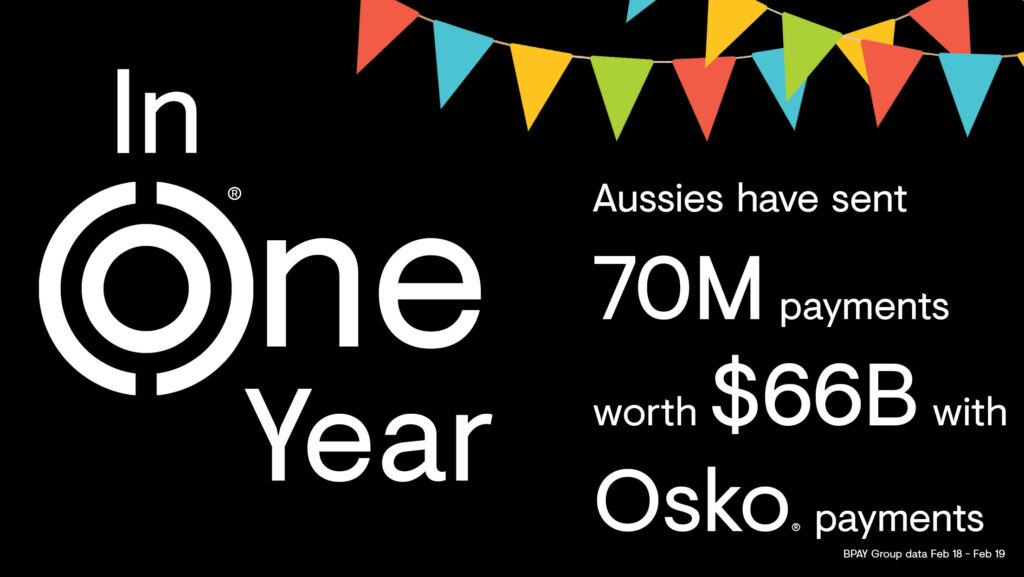
How Australians are using real-time payments 2
Osko by BPAY is the NPP’s first overlay service being used by consumers, businesses and fintechs. Since launching, Australians are enjoying the benefits of real-time payments and paying family and friends in under a minute, 24/7, even on weekends and public holidays.
“People transfer money at all times of the day – after dinner, on the weekends, at a footy match or cinema or even when buying something on Gumtree. Increasingly, they are expecting to access their money immediately. Most people will notice they have made an Osko payment when they get their payment receipt in online banking.” (Mark Williams, Chief Strategy Officer of BPAY Group.)
BPAY reports that Osko payments are not just limited to consumer to consumer transactions, with 30% of payments are to, or from, businesses and between businesses.
Mark adds: “Consumer expectations about how they pay and get paid are changing and we have been innovating to offer solutions that meet their needs. Osko Requests is in the pipeline, which will enable you to request a payment from within your online banking – making it much easier for someone to pay you back. We are also working to allow businesses to use Osko Requests and include documents such as invoices. So the NPP turns 1, is it too late to join the New Payments Platform?
The short answer is, of course, it’s not too late…yet. But savvy players in the industry recognise the importance of staying relevant in the face of digital disruption, and keeping the end-customer top of mind. If you are not providing the benefits of a simpler, faster and safe payment system to your customers, it’s likely a competitor or substitute will.
Find out More
Find out more about how Indue can help you participate in our new Real-time payments world.
1 Source Reserve Bank of Australia https://www.rba.gov.au/statistics/tables/
2 Source (OSKO by BPAY media release 13/2/19)
Related articles

How fintechs are responding to the Royal Commission
How fintechs are responding to the Royal Commission
The 76 recommendations of Hayne’s final report have been made public, but do Australia’s fintechs think it will change banking?
Article first published 5 February 2019, Finder.com.au. Author Elizabeth Barry
The final report of The Royal Commission into the Banking, Superannuation and Financial Services Industry has been handed down by Kenneth Hayne AC QC, and all firms in Australia’s financial industry, which includes fintechs, are taking it in.
The report made made 76 recommendations in total, including that borrowers should pay mortgage broker fees and that consumer protection laws should be extended to small business loans of under $5 million. The recommendations were focused on Australia’s financial regulators and financial institutions, but depending on the changes that are made, the recommendations would have an impact on the entire financial services industry.
CEO and founder of Australian neobank Xinja Eric Wilson said the reality is that we have “reached a new low”.
“But the report is a line in the sand and marks a real opportunity to shake up the industry and redesign it in the interests of customers,” said Wilson.
Wilson believes the rise of fintechs like Xinja and open banking, due to begin in Australia later this year, will offer a different model for consumers.
“Competition is the silver bullet. The emergence of neobanks like Xinja, which offer a different model, means that people poorly treated by their banks will be able to shop around. It will also become much easier to switch, with the rollout of open banking.”
The introduction in Australia later this year of open banking, which will hand consumers their data allowing them to aggregate information and shift banks or financial services providers more easily, will go a long way to easing the legwork around switching.
Brett King, advisor to the Xinja board and management and former banking adviser to the Obama White House said: “The Royal Commission identified a range of problems and inadequacies in the current system, addressing them requires more than just putting a new face on old banks.
“The emergence of challenger banks, like Xinja, enable us to design, from the ground up ethical, modern and inclusive financial services, without the baggage of the traditional players.”
“Fintech startups and investors with rent seeking, ethically questionable business models, based on selling private individual data, having high or hidden fees, exploiting customer ignorance or financial desperation, should be on notice and will face the risk of criminal charges. Change is coming and it is not just going to impact the big banks.
“Fintech needs to build around ethical, sustainable business models. In a sector devoid of trust, fintech startups can differentiate themselves and shine a new light of openness and transparency.”[/vc_column_text][/vc_column_inner][/vc_row_inner][vc_column_text el_class=”ind-textBox”]Founder and CEO of Roll-it-Super, Mark MacLeod, said the Royal Commission evidenced a financial services sector “riddled with conflicts of interest and greed” and that any fintechs with similar notions should take notice.
“Fintech startups and investors with rent seeking, ethically questionable business models, based on selling private individual data, having high or hidden fees, exploiting customer ignorance or financial desperation, should be on notice and will face the risk of criminal charges. Change is coming and it is not just going to impact the big banks.
“Fintech needs to build around ethical, sustainable business models. In a sector devoid of trust, fintech startups can differentiate themselves and shine a new light of openness and transparency.”
Source: www.finder.com.au Read full article here.

Indue Latest Industry News
Indue Latest Industry news
Find out the latest industry news in the world of payments.
NPP Update
New secure testing ‘sandbox’ for smaller players, the Consent and Mandate Service and the NPP 2019 minor release.
> Read more
3D Secure 2.0
Securing online payments in an ever-changing landscape.
> Read more
Eftpos Update
Merchant-routed transactions, open loop transit and continuing the eftpos Digital Acceptance Framework journey.
> Read more
Banking Executive Accountability Regime
This forms part of a series of measures announced in the 2017-18 federal budget that are designed to increase accountability and competitiveness in the banking and financial sectors, in order to address a so-called ‘trust gap’.
> Read More
Credit Card Reforms
How credit card contracts are approved, maintained and terminated will change in the coming month. On 15 February 2018, the Treasury Laws Amendment (Banking Measures No 1) Act was passed by the Federal Government.
> Read More

Artificial Intelligence and Machine Learning: Human vs Machine?
Artificial Intelligence and Machine Learning: Is it Human vs. Machine?
The terms ‘Artificial Intelligence’ and ‘Machine Learning’ seem to be buzzwords in the finance industry.
Artificial Intelligence (AI) and Machine Learning technologies are set to revolutionise an industry based on numbers but also an industry still traditionally dependent on human expertise, analysis and creative intelligence to progress and prosper. Some proponents of these processes believe that it will be a symbiotic relationship between man and machine. Others believe that their introduction will mean the demise of the human worker. So what are these concepts and how will they impact the financial services?
AI vs Machine Learning
Artificial Intelligence is a board term, but was succinctly defined by Andrew Moore, Dean of the School of Computer Science at Carnegie Mellon University as “the science and engineering of making computers behave in ways that, until recently, we thought required human intelligence”. A modern day example of AI would be Apple’s beloved digital personal assistant Siri, who can assist in finding information, creating events and providing directions purely based on voice recognition. Another example would be self-parking cars, whereby the vehicle will park itself using spatial and proximity information without any human intervention.
Machine learning is a branch of AI that relies on analysing data to automatically improve itself through experience. Netflix has fully incorporated machine learning into its platform by using predictive technology to make recommendations based on what the viewer has previously watched or rated. Music streaming providers such as Spotify or Pandora also use machine learning to recommend new artists based on what music users have listened to in the past. Recommendations continue to get refined and improved as the platforms continue to learn and analyse the users’ choices.
Implications to Financial Services
Based on how society has already embraced these powerful and useful technologies in other sectors, it was only a matter of time before they infiltrated the finance industry. A study conducted in the UK identified that 86% of business leaders in the financial services sector said they were already using these technologies. The World Economic Forum published a report earlier this year indicating that AI is fundamentally changing the physics of financial services. The bonds that have traditionally held together the constituent parts of financial institutions have been transformed ushering in a new age where data equals capital. Manual processing is giving way to programmed automation. Generic campaigns are being replaced with targeted marketing. Algorithms are usurping spreadsheets. The fabric of payments is evolving.
Advanced Data Processing & Automation
According to McKinsey estimates, banks do not realise the value of more than 80% of the total data collected by them. Therefore, there is a data mine that is waiting to be tapped. AI will help organisations realise the full potential of its data. AI can effortlessly consume large amounts of data, process the information faster than human efforts and can provide insightful outputs based on inference. The more data that can be processed, the more refined and accurate the data analysis results.
By allowing AI to extrapolate from data, companies will gain insights on their customers, which can lead to more customised products, services, communication and advice. The speed of the computation can be leveraged to enable a faster feedback loop, which will continually learn and provide updated insights thus allowing adaptability of product development and marketing strategies. Organisations will also see increases in productivity as a result of automation and machine learning. Time-consuming work such as compliance reporting, customer on-boarding communications and administrative documentation can be made more efficient and accurate with AI-powered automation.[
Personalised Customer Experience
These technologies will give rise to a more personalised customer experience. One example is the use of chatbots. Chatbots are automated chat systems that are designed to simulate human interaction. Chatbots identify emotion and context within text and will respond in the most appropriate manner based on previous interactions. Bank of America recently implemented its own chatbot or resident digital financial assistant named ‘Erica’, which has been widely recognised as a successful initiative. In a press release earlier this year, Bank of America confirmed that Erica assisted with 8 million client requests. Personalised communications will allow organisations to ‘humanise’ what can be quite structured and cold processes and give the consumer the façade of having a human on the other end.
Although AI can lend itself well to customisation, it can potentially lead to other unwanted behaviour at times. Predatory lending or marketing, where individuals are targeted based on information gathered through machine learning, are only some examples of how organisations or individuals can exploit these technologies. As such, industry policies and standards relating to privacy and prudential behaviour must be continually reviewed and updated as the industry continues to adopt AI and machine learning in various degrees. Financial ethics will play a big part in how AI or machine learning will continue to be accepted in the financial services industry.
Talent Transformation
The introduction of artificial intelligence or machine learning does not equate to a bleak future for the human professionals. Computers can be tasked with doing the repetitive and tedious jobs such as data processing. Instead of having to manually troll through a copious amount of historical data, a financial advisor can provide customised advice with a click of button. Employees will subsequently have more capacity to undertake higher level responsibilities and expand their skillsets. AI will alleviate some of the monotony of certain jobs and create new focus areas for professional development. Certain types of individuals will embrace this change while others may not. Organisations will need to look at investing time and money into transforming their talent alongside their technology to accommodate this fundamental change in an employee’s role.
Better Fraud Detection
Machine learning has been fundamental in enhancing fraud detection in the financial services industry. Indue’s Financial Crimes service is a prime example of how talent and technology co-exist to provide a whole that is more efficient than the sum of its parts. The service has embraced the benefits of machine learning with its foundation in the Safer Payments platform, which leverages machine learning algorithms to continually enhance its fraud detection capabilities. The platform is a neural engine that analyses a large transactional data pool to detect certain patterns and flag any anomalous behaviours. Indue’s financial crimes specialists leverage the cognitive computing provided by the platform, but strengthens the process by performing the executive decisioning and customer engagement that is critical to fraud management. The platform assists with pattern detection, data modelling and predictive capabilities whilst the specialists provide the emotional intelligence that only humans can offer. This reciprocity approach has been fundamental to the success of Indue’s Financial Crimes service.
To find out more, visit Orion Financial Crimes

Payments in the Digital Age
Payments in the Digital Age
With the ability to make a purchase with your smartphone or watch or reusable coffee cup, it has truly become a digital world out there.
And if the recent Australian consumer turnout to the notoriously American-loved tradition of Black Friday is any indication of future trends, the migration to this new world is only going to increase. According to AusPayNet’s recent findings highlighted in their 2018 Annual Review, Australians continue to flock to online shopping with e-Commerce transactional value increasing 16.7% from last year and ATM withdrawals decreasing by 4%. Whilst it will be a while before Australia becomes a cashless society, it is clear that Australia is well prepared being ranked 10th amongst 118 countries for its digital readiness. So what are the implications of such a seismic shift in payments? Who will benefit? What are the risks? How can institutions leverage this trend?
Keeping Pace in the Digital Race
Consumers will naturally gravitate towards processes that make their lives easier. Paying for a well-earned smoothie after a long run using a watch and without the need to carry cumbersome cash. Immediately transferring money to a friend after he buys a round of drinks on a Saturday night using a smartphone. Replenishing the stock in your pantry with a click of a button on the smart fridge. It is undeniable that in addition to online shopping or the ease of tapping a payment card to make a purchase, convenience has become a key motivator for digital payment innovation.
Financial Institutions and even historically non-payment related companies such as Apple and Google are looking to make the consumer journey quicker and easier. Vying for some real estate in this digital realm are also the smaller fintechs that can typically mobilise and adapt to change rapidly. These smaller players are introducing valuable services and offerings in the Australian payments market, but also more broadly in leading, data analytics, wealth management. The emergence of digital banks or neobanks is also providing the traditional financial institutions a run for their money. These banks operate entirely in the digital space and might be attractive to consumers given their ability to potentially offer higher interest rates for accounts and lower fees given the lack of overhead required to maintain physical branches. Competition for a consumer’s digital payment is fierce, which means that companies that can quickly innovate and provide an offering to consumers that leverages the thirst for convenience will win out.
KYC: Know Your Customer = Keep Your Customer
Understanding how different demographics are transacting in the digital age is invaluable in tailoring the transaction journey for the end user. Innovation is not necessarily the only means of attracting and retaining customers. Simply refining existing processes can ensure relevancy in the digital market. For example, the use of a mobile number or email address instead of the traditional BSB and Account Number to transfer funds. In a recent article published by KPMG, “Banking on the Future”, Generation Y professionals (defined as aged between 18-30, university educated, relatively well paid, tech savvy and global minded) were identified as an important target for financial institutions in the imminent future. These young professionals will be instrumental to how financial institutions will shape products and services in the payment industry as they represent 22% of the population and 50% of the workforce in the next five years.
One example is the preference for invisible payments – this demographic enjoys the convenience of making a payment without having to reach for their wallet. Uber is a perfect example of allowing the user to launch a service without having to exchange payment credentials with the driver for every transaction. It is set and forget. Financial institutions should look to tap into the preferences and attributes of specific demographics in the digital age as this will enable products and services to be personalised to their customers. The aim is to demonstrate relevancy in this ever-changing payment landscape, but also to ensure customer satisfaction and retention.
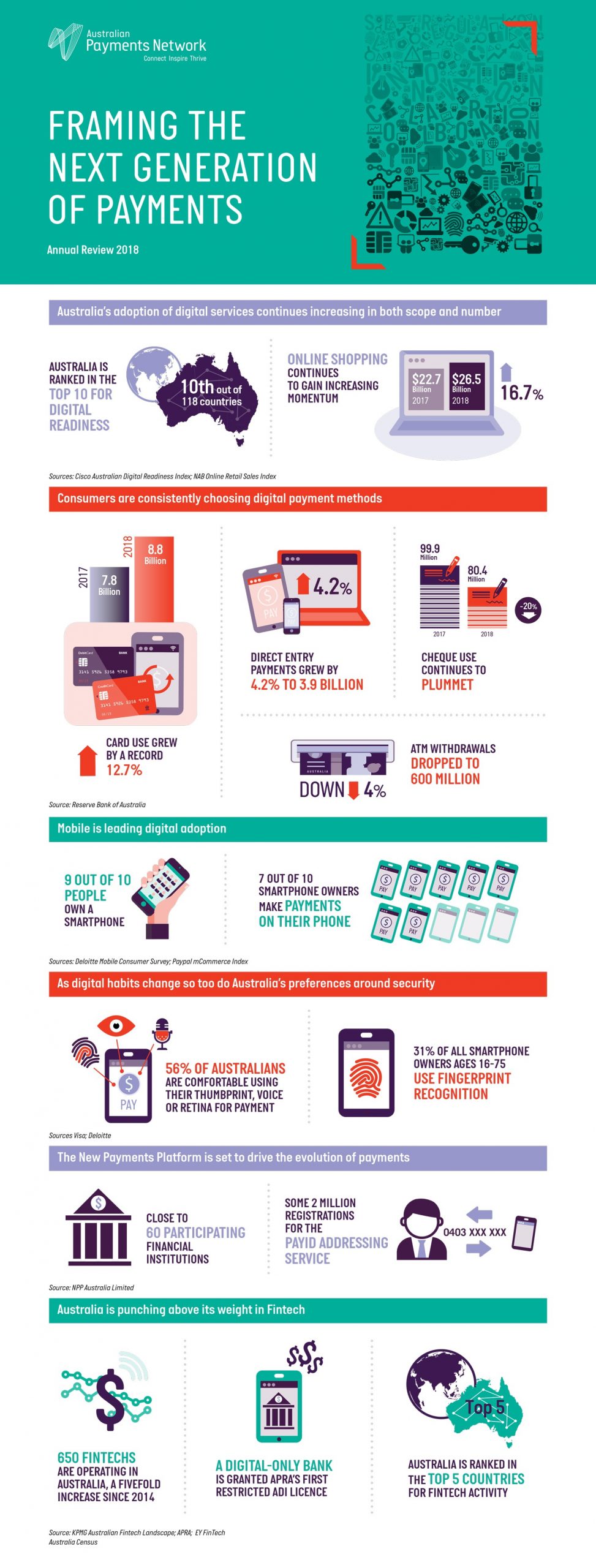
Fraud Evolution
The speed with which payments can now be made introduces a new challenge – how can the payment industry continue to provide assurance to a customer that the transaction is still secure? In the past decade, the payment industry has worked tirelessly to introduce EMV capabilities via microchips to physical plastic payments cards that provides an additional layer of security for card-present transactions. With a heavy sway towards online shopping now, the industry must ensure that this payment channel is secured in such a way as to provide consumers with confidence that they are not compromising security for convenience. The payment industry implemented EMV Three-Domain Secure (3DS), which is a messaging protocol to enable consumers to authenticate themselves with their card issuer when making card-not-present (CNP) eCommerce purchases. The additional security layer helps prevent unauthorised CNP transactions and protects the merchant from CNP exposure to fraud.
Even with these security protocols in place, CNP fraud is increasing. In response to this trend, the payment industry is working with AusPayNet to put together a collective CNP Fraud Mitigation Framework. The aim is to collaboratively establish a framework to reduce CNP fraud by understanding the immediate fraud threats, but also planning for future changes in the digital payment landscape. The industry is also undertaking an approach to promote security and interoperability within card payments in a remote payment environment, which is currently referred to as the Secure Remote Commerce protocol. One of the key tenets for this initiative is the use of tokenisation, which is a strategy that Indue has implemented with its mobile payments offering. Tokenisation involves the transposition of original payment credentials (i.e. payment card number) with a digital ID or token. This removes the sensitive nature of the payment data and renders the information useless to a fraudster. In the fast-changing world of digital payments, the potential fraud opportunities will undertake the same degree of evolution. It is critical that the payment industry adopt fraud prevention strategies that align with the speed with which payments are evolving.
Digital payments is certainly the way of the future. The Australian payment industry as a whole will benefit from not only all of the new capabilities that will be introduced in the near future, but also the competition that will generated by all of this industry movement.

Open Banking: The Brave New World
Open Banking: The Brave New World
In August 2018, the Federal Government released the draft Consumer Data Right (CDR) legislation, which gives consumers more control over their own data.
This legislation will allow individuals and businesses the right to obtain certain types of their data, which they have already shared with their financial institution, as well as provide authorised third parties access to this data. The Australian government will apply this new legislation to the banking sector first with telecommunications and energy sectors to follow. The following is the approximate timeline for adoption of the new open banking framework:
| Date | Requirement |
| 1 July 2019 | Four major banks will be required to make credit and debit card data as well as deposit and transaction account data available under this new framework |
| 1 February 2020 | Four major banks will be required to make mortgage data available |
| 1 July 2020 |
Four major banks will be required to make all other data covered under the CDR available All other banks or Authorised Deposit-Taking Institutions (ADIs) will be required to make credit and debit card data as well as deposit and transaction account data available |
| 1 February 2021 | All other banks or ADIs will be required to make mortgage data available |
| 1 July 2021 | All other banks or ADIs will be required to make all other data covered under the CDR available |
API Economy
The Federal Government appointed CSIRO’s Data 61 group to advise and facilitate the creation of a set of technical standards that will underpin this consumer-driven data sharing. The access to the data will be made possible through the use of Application Programming Interfaces (APIs). All accredited parties will be required to build to these common standards in order to retrieve the authorised data. Data 61 recently released the first draft of these standards, which was open for industry feedback. The working draft standards are underpinned by four key principles: 1) the APIs are secure; 2) the APIs will use open standards; 3) the APIs will provide a good customer experience; and 4) the APIs will provide a good developer experience. As the foundation of the framework will be based on these common and fair objectives, it will certainly level the playing field for those willing to participate and reinforce a technical low barrier for entry.
Consumers in the Driver’s Seat
With the ability to control their own data and who can access their data, consumers will now be in a position of power. They can approach different financial institutions and be equipped with the knowledge that each institution can access relevant historical financial data (with the consumer’s permission) held on the consumer’s behalf. This consumer-authorised access will make the process of changing products and services across financial institutions much easier for the consumer. Prior to this new framework, a consumer would have to organise with the originating financial institution access to the relevant data and documentation and then proceed to engage other prospective financial institutions for available options with the relevant data at hand. Once this new regime is in force, it could be as simple as the consumer contacting multiple financial institutions, authorising access to the data and simply requesting their best offer. What was once cumbersome and prohibitive will now be a much more streamlined process.
With open banking, the industry will likely see the rise of the well-informed consumer. This type of consumer will recognise the benefits of having this data in making decisions on financial services or products that are right for them. They will question their current situation and will not simply maintain status quo due to indifference or idleness. This cohort can be split into two types – the negotiator or the sampler. The negotiators will leverage the fact that data can be made available to competitors and potentially drive their current financial institutions to offer better options. These customers still see the benefit of having most financial products with the one provider – economies of scale, convenience of a one-stop shop and potentially less fees. The samplers will not be concerned with having products and services across multiple financial institutions given they can shop around much more efficiently. They will be driven by the most attractive offer regardless of provider. Irrespective of type, the well-informed consumer will have more knowledge. Knowledge is power and the balance is about to be tipped towards the consumer.
Open Playing Field
With the ability for financial institutions or authorised third parties to access data more easily, open banking will stimulate unprecedented consumer-driven innovation. Banks will need to differentiate themselves from the competition by offering attractive incentives or new capabilities to enhance their existing product and services suite. However, financial institutions will not be the only entities that can access consumer data – any accredited parties will be privy to the information, which could include fintechs, start-ups, or the tech giants like Apple and Google.
With such a diverse set of bank and non-bank stakeholders, new areas of competition will be created and a new financial service ecosystem will be born. A small micro-lender may be authorised to review a customer’s credit card account history and discern the customer’s ability to pay off the loan based on account data. Equipped with this valuable information, the lender can tailor an appropriate loan with specific conditions for the customer. A prepaid card provider may access a customer’s account history held in another financial institution and offer a prepaid card with specific limits for certain spend types as a budgeting tool. Open banking will effectively remove the advantage that historically resides with the dataholder (in most cases – the financial institution).
Privacy & Fraud
One of the main concerns regarding open banking is the security and privacy of data. With an increased flow of data between parties, the challenge is to ensure that the transfer is secure and aligns with industry privacy standards. Under this framework, the consumer must provide their consent to who can access their data and for what purpose. In order to do so, they must have confidence in the system and how their data is stored, transferred and used. The Australian Competition & Consumer Commission (ACCC) has been tasked with developing rules and an accreditation scheme to govern the implementation of the consumer data right, approving technical standards, and taking enforcement action to ensure compliance by participants. Consumers and third parties need to trust the system if they are to use it in earnest and reap the benefits that open banking can provide the broader financial industry. Data privacy will be heavily scrutinised in the next few months.
Industry considerations will also have to be made on the impacts to financial crimes with the introduction of open banking. With the potential segregation of data to multiple third parties, individual organisations will no longer hold an all-encompassing view on a customer and as such not be able to detect anomalous patterns or behaviours as easily. The industry may also see a rise in fraudsters trying to impersonate accredited third parties to obtain confidential consumer account information. What is certain is the fact that financial crimes monitoring and data analytics will need to adapt to these changes in data source and data set to ensure that consumers continue to be protected from fraud exposure.
Preparing for the Storm
As the industry is targeting the first phase of open banking to be in force by the middle of next year, the industry must look to prepare for this new paradigm shift. Some suggested areas of focus:
- API – understanding existing API library and resources and what needs to occur to support the new industry standards
- Data analytics – explore options for extracting the most value out of current data or new types of data
- Strategic partnering – consider collaborations with other organisations that may be advantageous in the open banking world
- Banking platform – understand the implications of processing a larger data load, actioning data retrieval requests and presenting data to consumers
- Policy updates – look to commence updating internal policies relating to privacy, data storage, security and customer consent

Indue Reinvents its Financial Crimes Service
Indue Reinvents its Financial Crimes Service in the Australian Mutual Sector
An IBM Client Story
 The New Payments Platform (NPP) opened up an opportunity for Indue to reinvent our financial crimes service in the mutual sector due to the potential increased risk with NPP over traditional channels.
The New Payments Platform (NPP) opened up an opportunity for Indue to reinvent our financial crimes service in the mutual sector due to the potential increased risk with NPP over traditional channels.
Dave Hemingway, our Chief Product Officer, discussed how Indue’s relationship with IBMs safer payment solution has resulted in the following benefits:
- Lower false positive rates by 20% improvement.
- ability to make rule changes 90% faster.
- manage all payment channels in one system.

The speed of change – Using AI in Payments (Women in Payments)
Payments at the Speed of Change – Using AI in the New Payments Environment
Indue’s Holly McGregor joins the panel discussion at the Women in Payments Symposium 2018
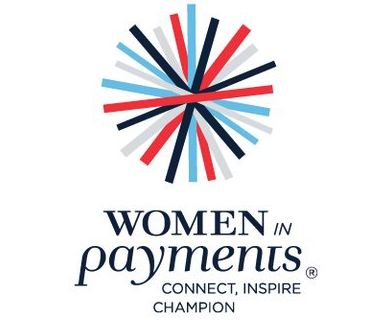 Organisations are embracing intelligent automation practices such as robotic process automation (RPA), artificial/augmented intelligence (AI), cognitive and machine learning to take advantage of cost savings, efficiencies, and to address challenges such as financial crime. Layer on top of these technologies the concept of open banking, where third parties can access customer payment data, and we have a brave new world. This panel discussion at the recent Women in Payments 2018 Symposium explored the opportunities, challenges, and the need for both governance and ethics when introducing AI to consumer and corporate payments markets.
Organisations are embracing intelligent automation practices such as robotic process automation (RPA), artificial/augmented intelligence (AI), cognitive and machine learning to take advantage of cost savings, efficiencies, and to address challenges such as financial crime. Layer on top of these technologies the concept of open banking, where third parties can access customer payment data, and we have a brave new world. This panel discussion at the recent Women in Payments 2018 Symposium explored the opportunities, challenges, and the need for both governance and ethics when introducing AI to consumer and corporate payments markets.
The panel at this recent session included:
- Aurelie Jacquet, Founder Ethics for AI and Automated Decision Making (ADM)
- Holly McGregor, Senior Product Manager – Orion Financial Crimes Indue
- Lauren Ryder, CEO Leading Edge Global
- Sonja Steiner, Financial Services Executive.
The session began with discussion around uptake of AI & Machine Learning (ML) and how the adoption has been quite low, with only 30% of companies even attempting some form of AI or machine learning technology in their organisation. The difference between AI and machine learning is that AI is about making decisions where the parameters have been coded by humans, but machine learning looks at past decisions to determine what future decisions should be. Although the number is low for companies using AI and machine learning, the future applications are unlimited.
Indue in early 2018 implemented AL & ML as part of our launch of the New Payments Platform. This technology has been hugely successful so far in preventing financial crimes in real time. Looking for trends allows us to be proactive to identify what’s coming up. Over time we’ll become more and more efficient as the data continues to teach us more about developing financial crime patterns and trends.
Ethics in Technology
One of the topics touched on at Women in Payments by panelist Aurelie Jacquet was the importance of having sound ethical frameworks which she stressed paved the way for success in this new era of payments. AI and open banking is about forming trust and how do you get trust? About having the right framework in place.
Jobs of tomorrow and attracting talent
How do you get your people ready for tomorrow and upskilling and attracting them to a payments future using AI technologies? By being part of talent transformation initiatives in your organisation and bringing everyone on the journey. Lauren Ryder added that this is about creating an organisation where humans and robots work together enabling humans to perform higher order tasks, with robots taking on the menial.
Trends in the Market around Data Capture
Ms Jacquet spoke about trends in Europe particularly around data management and how we’re seeing a shift to the idea of ‘small data’ where once upon a time the trend was all around big data. Some organisations are finding big data is becoming a liability with the potential for major cyber security breaches and privacy issues. Further to this, Holly McGregor commented that the more data you have the more computer and processing power you need. You need to think about focusing on what you need at an efficient cost. What are the critical data points you need?

Mutual sector’s margin squeeze abates
Mutual sector’s margin squeeze abates
Analysis by KPMG Australia shows the local mutual sector, overall, turned in a profit in the 2017/18 financial year, underpinned by continued efforts to streamline operations, improve products and services and invest in technologies.
The sector’s balance sheets grew 5.6 per cent to A$8.9 billion (FY 2017: 7.3 per cent), while overall operating profit before tax grew by 4.6 per cent to $635 million (FY 2017: $607 million).
This was achieved in an environment characterised by low interest rates, increased competition, a new wave of technological innovation and evolving customer preferences.
KPMG explained the result as being in part due to the squeeze on net interest margins starting to stabilise. Other key financial results for the mutual sector for the year ended 30 June 2018:
- residential lending increased by 6.6 per cent (2017: 10.4 per cent) to $89.5 billion;
- deposits increased by 5.0 per cent (2017: 10.8 per cent) to $92 billion;
- technology spend increased by 5.7 per cent to $183 million;
- net interest margin increased by one bps to 2.04 per cent (2017: dropped by 11 bps);
- non-interest income decreased by 1.9 per cent (2017: increased by 1.1 per cent) to $556 million;
- impairment expenses remained steady at 0.04 percent of average gross receivables; and
- capital levels increased slightly to 16.36 per cent (2017: 16.06 per cent).
“The success of the mutual sector lies in their ability to retain their strong branding as ‘community focused’ and providing clear solutions that are aligned to members interests,” KPMG’s Brendan Twining said.
The Customer Owned Banking Association, the industry body for mutuals, welcomed KPMG’s mutuals industry review, noting the endorsement of the sector’s performance in a tough business environment.
“As customer-owned institutions, mutual banks, credit unions and building societies have always existed to put people before profits,” said Michael Lawrence, COBA chief executive officer.
“We are not trying to squeeze our customers to please shareholders.
The KPMG Report is based on a survey of 48 customer-owned banking institutions.
Source: Banking Day Thursday, 29 November 2018

Xinja’s Big Goal
Xinja’s Big Goal
Bring high-quality banking services to the masses with technology.
Digital bank start-up Xinja plans to bring the experience of a personal banker to anyone with a smartphone, according to Xinja Chief Strategy & Innovation Officer Van Le.

5 reasons your business needs NPP today
The New Payments Platform Disruption: 5 reasons your business needs NPP today
Helen Flaherty, Senior Product Manager – New Payments Platform and Mobile Payments, Indue
Since launching in February 2018, the New Payments Platform (NPP) is proving to be one of the largest digital disruptors in the Australian banking landscape. Indue is one of the 13 founding members of the NPP initiative, which facilitates real-time settlements of payments with funds available in your account in less than a minute. Legacy payment channels such as cheques are being eclipsed by this innovation and it’s only a matter of time before it’s out with the old and in with the new. To avoid getting left behind, here are the top 5 reasons your business needs NPP today.
What are the Reasons Your Business Needs NPP?
Reason #1. It’s chequemate for cheques (and cash is no longer king)
Cheques have been in decline since 2006, and soon they’ll be gone for good. With an average annual decline of more than 20%, the New Payments Platform is putting the final nail in the coffin for cheques, further enabling our already cashless society. It won’t be long before there is an expectation every business has NPP – very similar to the expectation all businesses offer contactless payments. As with both of these innovations, the keyword is efficiency, with NPP set to generate an economic pay-off all round.
Reason #2. Time is money
Funds taking two or more days to clear will soon be a thing of the past. Real-time transfers will be the norm and fast payments will further reduce the need for cash. Not only does NPP help small businesses get paid faster, it improves cashflow for all businesses, enabling payments to be received in as little as 15 seconds. With 35% of payments in Australia now conducted on mobile devices, societal behaviours will continue to dictate the need to do everything in the palm of your hand, at the touch of a button.
Reason #3. The NPP is a safer bet
NPP is not any riskier than our current payments system. Legacy payment channels are less secure and offer greater potential for fraud. Nevertheless, real-time transactions mean non-repudiable payments and users still need to be protected. Unlike other payment methods, such as cheques and direct deposits, fraud prevention can occur in real-time, ensuring an enhanced experience and greater security for users.
Reason #4. The NPP is simpler
With NPP, gone are the days of worrying about putting in the wrong bank account or BSB number. The new PayID means businesses can make and receive payments by using just a phone number or email address. There’s no need to ask for bank account details, making the process faster, simpler and smarter.
Reason #5. The NPP’s Future is strong
Technological advancements have impacted the way we live and interact with each other, and the same technology is changing the world of payments. Our digital economy is already 24/7 and only NPP can meet its demands. The New Payments Platform enables faster, simpler and smarter payments and without adopting it or at the very least, planning to adopt it soon, your business risks falling behind.
At Indue, we help businesses harness the benefits of faster, safer, data-rich payment systems that make every-day payments easier. We are one of only eight participants which have launched the platform and through innovation, we are shaping the new face of Australian payments.
Our pioneering real-time fraud prevention solution is the first of its kind to be deployed in the Australian and New Zealand markets. It combines the expertise, security and anti-fraud bureau capability of Indue’s Orion Financial Crimes Centre of Excellence with IBM Safer Payments cognitive fraud detection solution.
As one of the founding members of the NPP initiative, you can trust Indue to get you real-time ready.

Spriggy: How this start-up is teaching kids to be savvy with money
How this start-up is teaching kids to be savvy with money
Today’s world is a far cry from putting pocket money in a tin.
More than a third of Aussie parents admit to being worried about their kids’ understanding of digital money. Mario Hasanakos co-founder of Spriggy, saw a lack of tools in the market to help parents teach kids about money in the digital age.
“It’s not secret that cash is getting less and less prevalent, more transactions are electronic and kids are going to grow up in that world,” he said.
Today digital world is a far cry from the days of getting pocket money from our parents and putting it in a tin, Hasanakos told Your Money Live.
“We’ve heard stories from parents of having a passbook and kids trying to tap the passbook to hope it works like an app.
“It’s just not what our kids are used to, they are digital native kids, they grow up in a world where they expect money to be electronic. It all lives on your mobile phone. There’s a gap in how to give kids that early experience with money.”
Spriggy is a prepaid debit card and app designed for parents to use with their kids.
Parents get sent a prepaid card, personalized with their child’s name and parents get an app they can use with their kids.
Using the app, parents can link any bank account, move money onto their child’s cards, view transactions in real time and help set up saving goals.
Parents and kids can lock and unlock the card at anytime, and parents get notifications when their kids spend money.
“Having those early experiences from a young age prepares you to not make really bad mistakes when it’s worth a lot more when you’re older.”
Spriggy launched two years ago and has received $6 million from investors.
[/vc_column_text][/vc_column_inner][/vc_row_inner][vc_column_text el_class=”ind-textBox”]Source: yourmoney.com.au 3rd November 2018

Retirement and appointment of Indue Chairman
Retirement and appointment of Indue Chairman
Indue Limited today announced the retirement of Chairman, Mr Dawson Petie effective 30 November 2018, after 10 years as a Director, including 6 years as Chairman.
Indue Non-Executive Director, Mr Robin Burns will succeed Mr Petie as Chairman.
During his time at Indue, Mr Petie has been a key driver of positive change and was instrumental in Indue’s growth strategy.
Mr Petie has led Indue through a period of significant change, business growth, targeted divestments and heavy re-investment to reposition the business strongly for a digital-led future. His drive for clear strategic focus has positioned Indue well to achieve sustainable performance and growth into the future.
Mr Petie said: “It has been a great privilege to serve on and lead Indue’s Board over the past decade. I am retiring in accordance with the Company’s tenure policy and I am pleased to report that our succession planning has proceeded smoothly, and will culminate in an orderly transition to Robin Burns, who knows Indue well and is a very experienced Director.”
“Now at the end of my tenure, I am confident Indue’s sharpened strategic focus and forward-thinking will continue to see the Company go from strength to strength.”
Mr Burns joined the Indue Board in October, 2017 and is currently Chair of the Audit Committee. He was previously a member of the Equity Trustees Board as Managing Director. He is also a non-executive director of 8IP Emerging Companies Limited, the Weary Dunlop Rugby Foundation, and is a Compliance Committee member at PIMCO Australia Management Ltd.
Mr Burns brings deep financial services industry expertise and experience to Indue and is well equipped to continue to lead the business through the fast-paced and ever-changing payments industry.
“Industry change provides significant opportunity for Indue. Digital technology in particular is driving the need for extensive product re-investment into the future and we are well placed to continue to provide new and effective business solutions to our customers. I look forward to working with the Board and our strong management team to carry forward the Company’s focused strategic development initiatives and impressive operational capability,” Mr Burns said.
Indue Non-Executive Director, Mr Robin Burns will succeed Mr Petie as Chairman.
During his time at Indue, Mr Petie has been a key driver of positive change and was instrumental in Indue’s growth strategy.
Mr Petie has led Indue through a period of significant change, business growth, targeted divestments and heavy re-investment to reposition the business strongly for a digital-led future. His drive for clear strategic focus has positioned Indue well to achieve sustainable performance and growth into the future.
Mr Petie said: “It has been a great privilege to serve on and lead Indue’s Board over the past decade. I am retiring in accordance with the Company’s tenure policy and I am pleased to report that our succession planning has proceeded smoothly, and will culminate in an orderly transition to Robin Burns, who knows Indue well and is a very experienced Director.”
“Now at the end of my tenure, I am confident Indue’s sharpened strategic focus and forward-thinking will continue to see the Company go from strength to strength.”
Mr Burns joined the Indue Board in October, 2017 and is currently Chair of the Audit Committee. He was previously a member of the Equity Trustees Board as Managing Director. He is also a non-executive director of 8IP Emerging Companies Limited, the Weary Dunlop Rugby Foundation, and is a Compliance Committee member at PIMCO Australia Management Ltd.
Mr Burns brings deep financial services industry expertise and experience to Indue and is well equipped to continue to lead the business through the fast-paced and ever-changing payments industry.
“Industry change provides significant opportunity for Indue. Digital technology in particular is driving the need for extensive product re-investment into the future and we are well placed to continue to provide new and effective business solutions to our customers. I look forward to working with the Board and our strong management team to carry forward the Company’s focused strategic development initiatives and impressive operational capability,” Mr Burns said.
The Board and executive team of Indue would like to thank Mr Petie for his significant contribution to Indue and welcome Mr Burns (pictured) as the new Chairman. They look forward to Mr Burns’ contribution in the years ahead.
For more information please contact:
Clare Mitchell, Senior Marketing Manager, Indue Limited E: cmitchell@indue.com.au

Industry Ramps up Moves to Combat Online Card Fraud
Industry Ramps Up Moves To Combat Online Card Fraud
The Australian Payments Network (AusPayNet) today announced the start of an industry consultation on a new framework to accelerate the fight against online card fraud.
The announcement coincides with the release of the latest card fraud data for 2017 showing card-not-present (CNP) fraud accounted for 85% of all fraud on Australian cards. This is in line with global trends and reflects the rapid growth of e-commerce and online payments.
AusPayNet CEO, Dr Leila Fourie said that the success of chip technology in preventing in-person card fraud meant that criminal activity was migrating to online payment channels.
“This is the trend internationally, and the Australian industry has mobilised to ramp up the uptake of prevention measures,” Dr Fourie said.
“With fraud values in other areas of card payments either flat or falling, attention is now focussed squarely on online fraud,” she said.
“The framework released for consultation today is the result of collaboration among the entire range of stakeholders in online payments. Card issuers, retailers, card schemes, payment gateways, payment service providers, regulators and industry bodies have joined forces to ramp up the fight.”
Key elements of the CNP Fraud Mitigation Framework include:
- Targets for card issuers to reduce CNP fraud across their card base
- Merchants who record fraud above an agreed industry benchmark being required to use multi-factor authentication, except for exempt (low-risk) transactions
- Boosting the use of tokenisation and compliance with card-security standards (PCI DSS)
- Encouraging use of biometrics in authenticating CNP transaction
Recent Reserve Bank of Australia figures show that consumers spent more than ever on their cards in 2017, with the overall value of card transactions up 5% to $748.1 billion.
AusPayNet figures released today show that card fraud of all types was also up 5% to $561 million, and accounted for 0.075% of the overall value of card transactions. At 7.5 cents in every $100 transacted, the rate of card fraud remained largely the same as in 2016.
Strengthened protection offered by EMV/chip technology resulted in a 48% fall in counterfeit/skimming (in-person) fraud to $31 million, the lowest value since 2006. Lost and stolen card fraud accounted for 7% of all card fraud, unchanged from 2016 and down from 10% in 2012. While in-person fraud fell in 2017, CNP fraud was up 14% to $476 million.
“Through the framework, we are taking a leading-edge approach to tackling the global problem of increasing online card fraud. With a united front, we can have the same impact that the roll-out of chip technology has had in combatting face-to-face fraud,” said Dr Fourie.
CNP fraud occurs when valid card details are stolen and used to make purchases or other payments without the card, typically online or by phone.
“There are some simple things people can do to help the fight against online fraud,” Dr Fourie said.
“Only provide your card details on secure and trusted websites – look for the locked padlock icon. Be wary of offers that look too good to be true. Malware and phishing attacks are becoming increasingly sophisticated, so be suspicious of unsolicited emails and text messages from people you don’t know. Don’t click on the link provided and don’t be tricked into divulging confidential data such as your password,” she said.
Other steps people can take include:
- Registering for, and using their financial institution’s online fraud prevention solutions, whenever prompted
- Being wary of offers that seem too good to be true – doing checks to make sure the business is legitimate
- Always keeping PC security software up-to-date and doing a full scan often
- Regularly checking statements and reporting any unusual transactions to their financial institution immediately
Australians are not liable for any fraudulent transactions on their payment cards and will be reimbursed as long as they have taken due care.
The CNP Fraud Mitigation Framework can be requested here. The AusPayNet 2017 payments fraud report can be found here.
There is Large Potential for AI to Contribute to Global Economic Activity
The McKinsey Global Institute looked at five broad categories of AI: computer vision, natural language, virtual assistants, robotic process automation, and advanced machine learning. Companies will likely use these tools to varying degrees. Some will take an opportunistic approach, testing only one technology and piloting it in a specific function (an approach our modeling calls adoption). Others might be bolder, adopting all five and then absorbing them across the entire organization (an approach we call full absorption). In between these two poles, there will be many companies at different stages of adoption; the model also captures this partial impact.
Download the full report here.
Source: McKinsey GlobalInstitute September, 2018
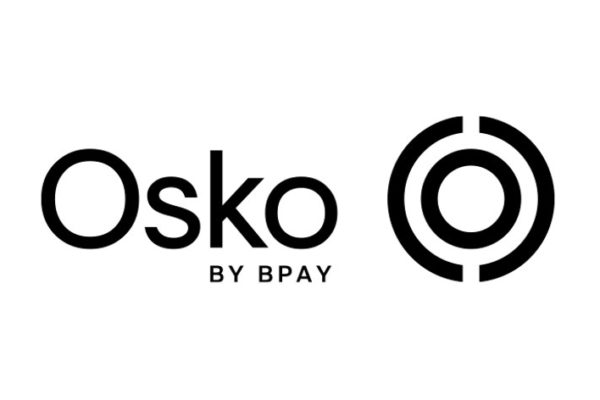
Ad Push on Big Bank Payments Innovation
Ad Push on Bing Bank Payments Innovation
The NPP has finally reached critical mass, with Westpac and ANZ rolling out access to customers after a six-month delay and triggering the launch of a national advertising campaign next week for the system’s first application, Osko.
Osko, which has been built by the major bank-owned BPAY Group, launched in February when the NPP was turned on and by tapping the NPP’s real-time clearing and data capability it provides instant account-to-account payments for the first time in Australia.
Over its first six months, more than $19 billion has been put through the service, which sits inside existing bank mobile applications, via more than 25 million transactions. But these numbers are set to surge now all four of the majors have turned it on.
The chief executive of BPAY Group, John Banfield, said Osko, is now operating inside the banking apps of more than 60 financial institutions and reaching over 42 million consumer and business accounts. “We are going full-steam ahead with a national advertising campaign,” he said.
This will begin on September 9 and include TV, outdoor, cinema and social media. The campaign comes as the banks attempt to restore public trust which has been tarnished by the revelations in the banking royal commission; through Osko, they plan to send a message around payments innovation.
While Commonwealth Bank and National Australia Bank have had Osko ready for customers for several months, the campaign has waited for ANZ and Westpac to resolve technical issues.
In March, there were 100,000 transactions going through Osko each day; this has jumped to 400,000 a day in recent weeks.
Come the end of the March next year, Mr Banfield said expect 1 million transactions a day and perhaps by the later part of next year volume could exceed the 1.5 million daily transactions put through BPay.
Open and Inclusive
Osko lets customers send funds using BSB and account numbers or a PayID, which can be an email address or mobile phone number. Around 1.9 million customers have created a PayID.
Most are using it for social payments to family or friends, with the average amount around $25. It is also being used for P2B payments, for example, for paying tradies. A new feature allowing payment requests to be made is in development.
It is expected Osko will be the first of many “overlay services” to be created on the infrastructure, which has been designed to be open and inclusive. Any one of Australia’s 150 prudentially regulated ADIs, and holders of the new restricted ADI licences, can connect directly to the infrastructure, but fintechs and non-banks can connect via payments service providers such as Cuscal, Australian Settlements Limited and Indue.
NPP Australia, the governing body, hopes the system will be used to facilitate real-time funding, new payments wallets, short-term lending, “buy-now, pay-later” offerings, the domestic legs of international remittance and new QR Code driven products. It may also be used to enable payroll payments, move data, and conduct payments using distributed ledger or blockchain technology.
The Reserve Bank forced the banks to fund the infrastructure, which was built by global giant SWIFT. The system will be showcased by SWIFT as part of its SIBOS conference, which will see many of the world’s top payments executives descend on Sydney in October.
The Productivity Commission in its recent report on competition in financial services called for a formal access regime to be established over the NPP to facilitate competition, but this has been rejected by the Reserve Bank’s Payment System Board, and NPP Australia, which say more time is required to see how enhanced access and innovation plays out. NPP Australia is planning on extending the capability of the system to support new payment types, including alternatives to the current direct debit system.
Source: AFR Monday 3rd September, 2018

The Role of AI on the Global Economy
The Role of AI on the Global Economy
AI has large potential to contribute to global economic activity. But widening gaps among countries, companies, and workers will need to be managed to maximize the benefits.
The role of artificial intelligence (AI) tools and techniques in business and the global economy is a hot topic. This is not surprising given that AI might usher in radical—arguably unprecedented—changes in the way people live and work. The AI revolution is not in its infancy, but most of its economic impact is yet to come.
New research from the McKinsey Global Institute attempts to simulate the impact of AI on the world economy. First, it builds on an understanding of the behavior of companies and the dynamics of various sectors to develop a bottom-up view of how to adopt and absorb AI technologies. Second, it takes into account the likely disruptions that countries, companies, and workers are likely to experience as they transition to AI. There will very probably be costs during this transition period, and they need to be factored into any estimate. The analysis examines how economic gains and losses are likely to be distributed among firms, employees, and countries and how this distribution could potentially hamper the capture of AI benefits. Third, the research examines the dynamics of AI for a wide range of countries—clustered into groups with similar characteristics—with the aim of giving a more global view.
The analysis should be seen as a guide to the potential economic impact of AI based on the best knowledge available at this stage. Among the major findings are the following:
- There is large potential for AI to contribute to global economic activity
- A key challenge is that adoption of AI could widen gaps among countries, companies, and workers
There is Large Potential for AI to Contribute to the Global Economy
The McKinsey Global Institute looked at five broad categories of AI: computer vision, natural language, virtual assistants, robotic process automation, and advanced machine learning. Companies will likely use these tools to varying degrees. Some will take an opportunistic approach, testing only one technology and piloting it in a specific function (an approach our modeling calls adoption). Others might be bolder, adopting all five and then absorbing them across the entire organization (an approach we call full absorption). In between these two poles, there will be many companies at different stages of adoption; the model also captures this partial impact.
Download the full report here.
Source: McKinsey Global Institute September, 2018

Cashless Payment Technology is Helping Business Thrive
Cashless Payment Technology in Helping Business Thrive
The days when a trip to the ATM was compulsory before strolling to your local market are numbered. Instead small businesses now find themselves faced with the new breed of “cashless consumer”, and adapting to suit.
According to a recent survey by the RFi Group, 32 per cent of Australians believe they can go cashless. Fortunately, the advent of low-cost and low-fuss technology allows local businesses, including sole traders, to sell their products and services quickly and easily, whether it’s a small item or a more expensive impulse purchase.
A Shift In Mindset
Michael McQueen, retail trend forecaster and bestselling author of How to Prepare Now for What’s Next, says small businesses have traditionally avoided cashless transactions because options were limited and merchant fees were often high.
“However, with the multitude of merchant options now available and costs coming down, it is feasible, profitable and even essential to offer cashless transactions on even small-priced items,” he told SmartCompany.
“It has required business owners to change their paradigm about cashless transactions and, to their credit, many have.”
McQueen says small businesses need to be able to become more agile when it comes to payments, or they simply won’t survive.
“Businesses that still see cashless trading as a privilege they extend to high value sales and customers will continue to be left behind – becoming as out-of-touch as the paradigm driving their approach,” he says.
“Within a few short years, accepting cash only will indicate little more than that you are trying to dodge tax because there will be no other legitimate reason to holding this stance.”
Opportunities Galore
McQueen says adopting varying payment technologies will open up more opportunities for growth but also help small businesses retain their local flavour.
“The biggest opportunity is that cashless transactions encourage more spontaneous spending,” he says.
“There is no need for technology use to come at the cost of service levels and a sense of local connection. If the transaction is seamless, easy and fast, this frees up businesses to focus on engaging, serving and delighting their customers rather than simply transacting with them.”
Nate Thoreson is the owner of small Melbourne-based business St Kilda Rickshaws, which hires out rickshaws for private events such as weddings and corporate public events including the Australian Open tennis tournament.
He says customers are very comfortable with cashless money transfer systems and it has now become their primary mode of payment.
“Four years ago, most of our private event hire jobs were settled using cash – now it’s the opposite, most of our events are paid for using credit card,” he says.
“Apart from being easier as people don’t have to swing by the ATM anymore, it really helps customers understand their spending habits and also find opportunities to improve their budgeting.”
Let’s Not Forget The Data
Using payment technologies offers traders more information on their customers than ever before. This means business owners can use data to make their businesses more discoverable to the right customers via other low-cost platforms, such as social media.
“Beyond encouraging increased spontaneity and discretionary purchases, the coming years will likely see small businesses be able to access data on consumer spending patterns that have previously only been available to large-scale businesses,” McQueen says.
“Accessing and utilising this is not complex of expensive – it just requires knowing where to look and being willing to invest the time/energy to do so.”
The Face of the Future
McQueen says the biggest trend in the payment space in the short to medium future will be that of biometric payments.
He says Alipay in China have begun trialling a system where customers literally ‘pay by smile’ – a register recognises their face and charges a transaction to the credit cards stored again their Alipay account.
“Amazon’s recently-launched Amazon Go stores also offer an exciting insights into the future of retails/grocery transaction with their stores that automatically tally a customers shopping cart as they stop removing the need for cash registers, check outs or a transactional interface at all,” he says.
Thoreson says his company is always looking out for new tech to make their operations more streamlined and profitable.
“As technology moves and changes so quickly, it’s important to keep an eye on what’s happening,” he says.
Source: Smart Company April 10th, 2018
Enquire now about our cashless payment solutions!
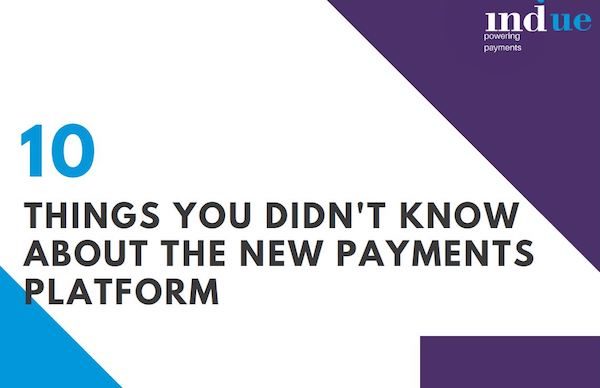
10 Things you didn’t know about the NPP
10 Things you didn’t know about the NPP
With so much hype continuing to surround the New Payments Platform (NPP), Australia’s newest payment platform, you may like to find out ’10 things you didn’t know about the NPP’.
Over the past few years, since the decision was made to introduce the New Payments Platform into Australia, the Indue team has worked tirelessly with all our customers to deliver for them a real-time payments experience.Learn more today:
We welcome you to download and share our NPP presentation, and to find out more about how you can participate in our new real time payments world.

Open Banking a Blueprint for a New Data Economy
Open Banking a Blueprint for a New Data Economy
Source: Australian Financial Review Feb 12 2018
Senior Treasury officials say the “open banking” report by King & Wood Mallesons partner Scott Farrell is one of the best policy documents they have ever seen produced by a professional in the private sector. It needed to be, given its implications.
Open banking will empower a customer to direct their bank to send their data to another provider. It promises to level the competitive playing field by reducing the costs of account switching and facilitating price discovery.
The banking sector is the first cab off the rank with customer data to be liberalised across the economy under a new Consumer Data Right announced in November. Telecommunications and energy will follow. Beyond that, data relating to health and education, and broader financial services such as insurance and superannuation, could also be put under the control of the customer.
A new data industry could be created as more people realise their data has a value and should be treated as an asset.
Farrell may work in rarefied air atop Governor Phillip Tower as a partner at King & Wood Mallesons, but his is a report centred on the person on the street. Under open banking, it will be customers in control of what data is shared and when.
Strong Stance
He is also willing to stand up to the power of the banks. In its submission to the review, the Australian Bankers’ Association called for the accreditation utility that will determine who can receive data to be run by the industry. Farrell rejected this, preferring the independent ACCC.
“Accreditation criteria should not create an unnecessary barrier to entry,” the report says.
The banks will also be distanced from controlling the technical standards for facilitating the data transfer. “Although financials institutions have largely welcomed the prospect of open banking, conflicts between their commercial considerations and the interest of consumers could easily arise,” Farrell writes.
Delivery will be via application programming interfaces (APIs). For technically minded readers, Farrell favours the OAuth2 framework for authorisation, providing minimal disruption to the user experience, with RESTful (representational state transfer) API architecture as the method of delivery.
The blueprint is Britain’s technical standard; it was designed by the British Open Data Institute, co-founded by world wide web inventor Tim Berners-Lee, and Fingleton Associates. Local standards will be developed by a data standards body.
Report Features
There are a few other striking features of Farrell’s 158-page report, which was released on Friday. The Australian Competition and Consumer Commission is a big winner: it will take the leading regulatory role to ensure the system works for consumers, with the Office of the Australian Information Commissioner overseeing privacy. The financial regulators will be interested onlookers.
Security will be paramount and customer trust will be enhanced through an accreditation regime and a liability framework.
There won’t be any centralised storage of the data, avoiding a “honeypot” that could tempt hackers, like those that penetrated Equifax and got access to the credit information of 143 million Americans.
“Fortunately, the principles used with money, communications and energy systems should show what could be needed for the sustainability of a stable, broader data ecosystem,” Farrell says.
In terms of timeframes, Morrison wants the regime up and running by July 1 next year. While API development work will be needed; the major banks are understood to be able to meet it.
Farrell also points to how open data will improve the quality of artificial intelligence engines. Perhaps the regime’s biggest impact will not come from what one bank can do with data from another bank, but what a company in another industry does with banking data.
A customer directing their bank to send data to their telco “could enable an entirely new field of products and services to be offered, enhancing choice and convenience”, Farrell predicts.
A risk for incumbents is they fail to grasp the opportunity to turn open data to their advantage, rendering them a mere utility providing the pipes, but not the customer experience.

Vinnies CEO Sleepout 2018
Vinnies CEO Sleepout 2018
The Indue team are once again participating in the CEO Sleepout this year on Thursday 21 June. Team Indue have decided to sleep on the streets for one night to experience what over 105,000 people experience every night.
Help fight homelessness by donating today and help us reach our goal of raising $15,000 in the Vinnies CEO sleepout 2018. This money will go towards crisis accommodation options for families and individuals at risk of homelessness, food vouchers for people who would otherwise go without food, and personal care packages containing everyday essentials.
More than 116,000 Australians experience homelessness every night, and 32 per cent are children.
Thank you for your support. Please visit our fundraising page to donate today.

Fintech Companies Could Give Billions of People More Banking Options
Fintech Companies could give Billions of People more Banking Options
Much has been made of the fact that a new breed of financial technology (or fintech) companies is unbundling banks in the developed world. Startups are attacking all of the components of the traditional bank value proposition (e.g., accounts, portfolio management, mortgages, car loans, person-to-person payments).
Over the past five to six years there has been a rush of capital and talent into startups; investment in them has grown nearly eightfold since 2011.
While their innovative products have been a boon to consumers in mature economies, the resulting efficiency and security benefits have largely bypassed the 2 billion consumers in the developing world who lack formal banking services altogether.
However, there are signs that this is changing. Encouraged by the dramatic increase in the number of people with mobile phones in the developing world, new fintech players are attempting to disrupt the existing financial order in these markets: the money lenders and informal remittance services that often have been the only option for much of the population.
To succeed in these markets, these startups must overcome three challenges: lack of cloud infrastructure, users who are “less digital” than rich-world users, and users who live economically chaotic lives based primarily in the informal sector.
Lack of Infrastructure and Efficient Cloud Services
The fact that many developing countries lack infrastructure that exists in advanced economies presents an opportunity and a challenge. It has prompted some fintech companies to jump in and try to fill the gap by creating “regtech” and “Infrastructure as a Service” (IaaS).
One of the companies doing this is Trulioo, which is making individual government identity databases around the world accessible through a single streamlined interface online. Another is Flutterwave, which is creating payments and banking interfaces to power fintech offerings in Nigeria.
Users Who Don’t Have a Digital Footprint
While some people in the developing world have a rich and intricate set of online behaviors, there are many whose only form of access to the digital world is phones with limited data connections or internet cafés, and plenty don’t use digital products at all. Their resulting limited (or nonexistent) digital footprints mean that the sophisticated algorithms that some fintech companies use to generate risk scores or personalized offers in the developed world aren’t useful in these markets.
To succeed in this environment, local players are evolving models that tap into and create new sources of data on users, often by giving users tools that encourage them to expand their digital lives.
One example in India is SERV’D, which is building an app that helps households and the informal workers they employ (e.g., nannies, drivers, cooks, delivery services) create simple formal work contracts and pay them online. The data generated as a byproduct will capture the wages and other payments of the more than 400 million informal workers in India who previously had no way of demonstrating their income for loans and other benefits.
Another possibility comes from the data that Uber and other ride-sharing companies are collecting on their drivers’ incomes. CreditFix is tapping into this kind of data to lend to Pakistani drivers, allowing them to own their auto-rickshaw or taxi and to go into business for themselves rather than work as employees. Sidian Bank in Kenya has a similar program.
Still another example is Cowlar, a Pakistani company that has created a wearable device for cows. It collects data on their temperature, mobility, location, and activities and translates this into real-time intelligence for farmers to help them better manage livestock. Cowlar is now considering how it might translate this “internet of cows” data into financial products, potentially by discounting insurance for well-managed cows or by using data on the amount of milk produced to justify loans.
Consumers Who lead Chaotic and Cash-Based Lives
Few consumers in developing countries have the luxury of regular paychecks. Often they live payout to payout, which might come from selling farm produce one month and from temporary work in picking tea the next.
They also struggle to deal with unpredictable expenses, including medical emergencies, motorcycle breakdowns, and demands from friends who need help. Consequently, their financial lives are orders of magnitude more complex than those of consumers in the developed world. In these situations, standard, rigid insurance premiums or loan-repayment contracts often don’t work, resulting in missed payments and defaults.
But some companies are creating clever offerings to help people through the difficult times. One example from the developed world is Uber’s Xchange, which allows drivers to participate in very-short-term leasing programs (just a few months) and requires little money up front. As the company put it in a blog post, “The key to flexible earnings is flexible financing.” Another example is Malako, an early-stage startup in Uganda that has been experimenting with flexible lines of credit, managed through mobile phones, that low-income consumers can pay off when they have the money and that allow them to make only minimum payments when they don’t — like a credit card.
Fintech companies are proving that they can create workarounds for the infrastructure of developing countries. They can develop flexible products tailored to the lives of the people in those markets. And they can figure out how to generate data streams that shed more light on potential customers’ finances. They can play an important role in bringing the 2 billion consumers into the digital world and improve both their lives and their countries’ economies.
Source: HBR January 20, 2017

Review Into Open Banking
Review into Open Banking
PRESS RELEASE: The Turnbull Government will act to improve customer outcomes and increase competition in the financial sector by implementing the recommendations in the final report of its independent Review into Open Banking.
Implementation will be phased in from July 2019, paving the way for the introduction of the Government’s Consumer Data Right in the banking sector.
Open Banking has the potential to transform the competitive landscape in financial services and the way in which Australians interact with the banking system. It will give banking customers greater access to the data their banks hold on them and the ability to direct that it be safely transferred to trusted and accredited service providers of their choice.
Customers will be able to use their new data rights to find better deals on their credit cards, mortgages and other banking products. Comparison services will be better able to assess the value and suitability of all available products, taking into account the individual circumstances and needs of the customer. This will help to break down barriers that see customers staying with their banks even when there are better deals elsewhere.
Open Banking will also allow entrepreneurs to develop new services and products tailored to customers’ needs, disrupting those existing business models within the banking sector that do not put customers first.
Importantly, the Government has committed to the blueprint proposed by the Review for ensuring strong privacy protections and information security for customers’ banking data. A key element of these protections is that only trusted and accredited recipients will be permitted to access data, only with customers’ express consent and only for the purposes the customer has expressly permitted.
The Government has set a challenging but realistic timeframe for bringing the benefits of the Open Banking reforms to consumers, with a July 2019 commencement.
Open Banking will be phased in with the aim that all major banks will make data available on credit and debit card, deposit and transaction accounts by 1 July 2019 and mortgages by 1 February 2020. Data on all products recommended by the Review will be available by 1 July 2020. All remaining banks will be required to implement Open Banking with a 12-month delay on timelines compared to the major banks. The Australian Competition and Consumer Commission (ACCC) will be empowered to adjust timeframes if necessary.
The ACCC will be responsible for promoting competition and customer-focussed outcomes within the system, while the Office of the Australian Information Commissioner (OAIC) will ensure that privacy protection is a fundamental feature of the system.
Data61, the data arm of the CSIRO, will be appointed to perform the role of a Data Standards Body, developing technical standards for the system in collaboration with industry, FinTechs, and consumer and privacy groups.
Open Banking will be implemented as part of the Consumer Data Right in Australia, a more general right to data established by the Turnbull Government currently being created across the economy following a recommendation by the Productivity Commission’s Data Availability and Use Inquiry. The Consumer Data Right will be established sector-by-sector, beginning in the banking, energy and telecommunications sectors.
Further information about how Australians can benefit from Open Banking and the Consumer Data Right can also be found in the downloadable handout.
For more information visit the Consumer Data Right page on the Treasury website.
Contacts: Andrew Carswell 0418 505 376, Kate Williams 0429 584 675, Sonia Gentile 0455 050 007
The Hon. Scott Morrison MP, Sydney
Click here to download the ACCC Press Release relating to Open Banking.

New Payments Platform Initiative | Your Ticket To Play
Derek Weatherley, Indue CEO explains how the New Payments Platform is ‘your ticket to play’ in the new payments environment with speed, simplification, and data richness a few of the many benefits being delivered.
The New Payments Platform initiative (NPP) is an exciting industry initiative that delivers a dynamic new payments infrastructure to meet the growing demands of Australia’s 24/7 digital economy.
The New Payments Platform Initiative: Real-time Payments are Here
The introduction of the New Payments Platform initiative means your customers can now make and receive payments in real time using a PayID between participating financial institutions.
Indue has enabled many ADIs (Authorised Deposit Taking Institutions), including a mix of credit unions , banks and neo banks to offer NPP, Australia’s newest digital payments capability, to their customers.
It provides Australian consumers with a faster, safer, data-rich payments system for making everyday payments easier. Indue is one of only 8 directly connected participants who have launched. We offer a comprehensive agency solution to get you real-time ready today.
Watch The Video
For More Information on the New Payments Platform
Click here to find out more information about how Indue can help you participate in our new real time payments world.w]

Faster Payments UK 10th Anniversary Insights
Faster Payments UK 10th Anniversary Insights
Payments will increasingly be triggered by smart devices in the next decade, with people needing to oversee them only minimally, the report predicts. Rapid changes to the way we pay could see households’ fridges automatically ordering and buying weekly essentials like milk when they run out, according to a UK report.
The predictions were made to mark 10 years on Sunday since the launch of the “real-time” Faster Payments service in the UK which allows people to send and receive money in an instant.
The service launched on May 27 2008 – and since then more than 9.1 billion payments worth a total of over £7 trillion have been sent.
More than 230,000 faster payments are sent every hour, on average, according to the service.
The Changes That Have Already Happened
It said changing consumer behaviour has driven changes such as the growth of internet and mobile banking, making the convenience of 24/7 instant payments part of everyday life in the UK.
The report, co-authored by strategic consultancy Hunch, set out the impact of real-time payments over the past decade, alongside predictions for the future, with payments being triggered by smart devices.
It looked at what the world of payments will look like in 10 years’ time.
Seismic Shift Coming
The report, titled A Decade Of Faster Payments, said the world of payments is about to undergo another “seismic shift” amid the “ever increasing digitalisation and automation of the economy”.
It said: “Increasingly, machine-to-machine payments will take place securely and with only minimal permissions-based human oversight.”
Philip Clarke, founding partner of Hunch, said: “The future of real-time payments will let your fridge order and pay for your weekly essentials when they run out, and your home sell energy back to the grid when you’re not in.
“This ‘economy of things’ will transform the commercial landscape with new behaviours, new expectations and new business models that change the way we buy, provision and use an emerging generation of products and services.”
John Jefferson, general manager of Faster Payments UK, said: “The convenience and simplicity of being able to send a near instant payment 24 hours a day, seven days a week has seen the popularity of Faster Payments soar in the 10 years since it launched.
“We are proud to have kept our service available around the clock since 2008, and look forward to meeting the predicted growing demand from consumers and businesses for the next decade and beyond.”
How Payments Have Changed in The UK
Here are some key milestones since the Faster Payments service was launched a decade ago in the UK:
- 2008: The first faster payment is sent on May 27
- 2011: The billionth faster payment is made, at 11am on May 24
- 2012: 811 million faster payments are made – up 50% year-on-year
- 2013: One billion faster payments are sent in the year
- 2014: Mobile payments service Paym is introduced to help people pay using a mobile number rather than needing to know someone’s bank details
Source: Mirror UK Vicky Shaw, 25th May, 2018
